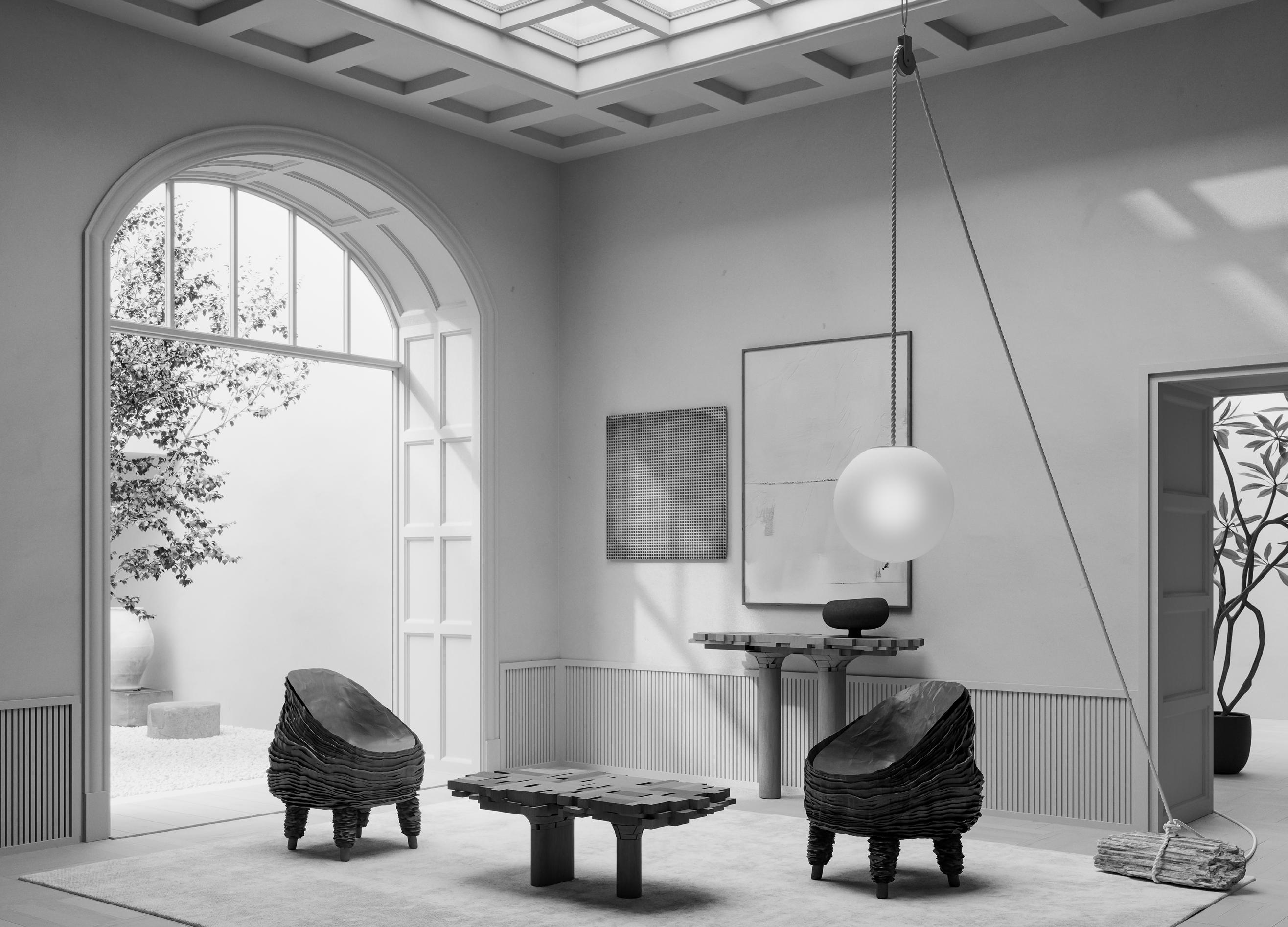
2023
Special Edition
Galerie Mia Karlova
Selection of carefully curated collectible design and contemporary art
Mia Karlova Galerie gives centre stage to functional sculpture, rallying an intriguing roster of international artists whose experimental practices look upon reuse as a conscious act of new existence: sustainability enriched with a deliberate sense of meaning and the desire to provoke new emotions.
Founded in 2020 by interior designer and curator Mia Karlova, the eponymous Mia Karlova Galerie seeks to form a dialogue between works of various genres through a common emotional language.

‘Functional art is not just about shape, material or function. As any other art form, functional art is primarily about emotional connections. We surround ourselves with objects which give us pleasure of contemplation.’
~ Mia Karlova
Table of Contents
Sho Ota
Vadim Kibardin
Olga Engel
Valery Pchelin
Jesse Visser
Jordan van der Ven
Olesya & Andriy Voznicki
Yulia Batyrova & Marat Mukhametov
Femke van Gemert
Jonne Stout
Kartini Thomas
Françoise Jeffrey
Jan Ernst
6 12 20 28 32 36 42 48 56 64 68 74 78
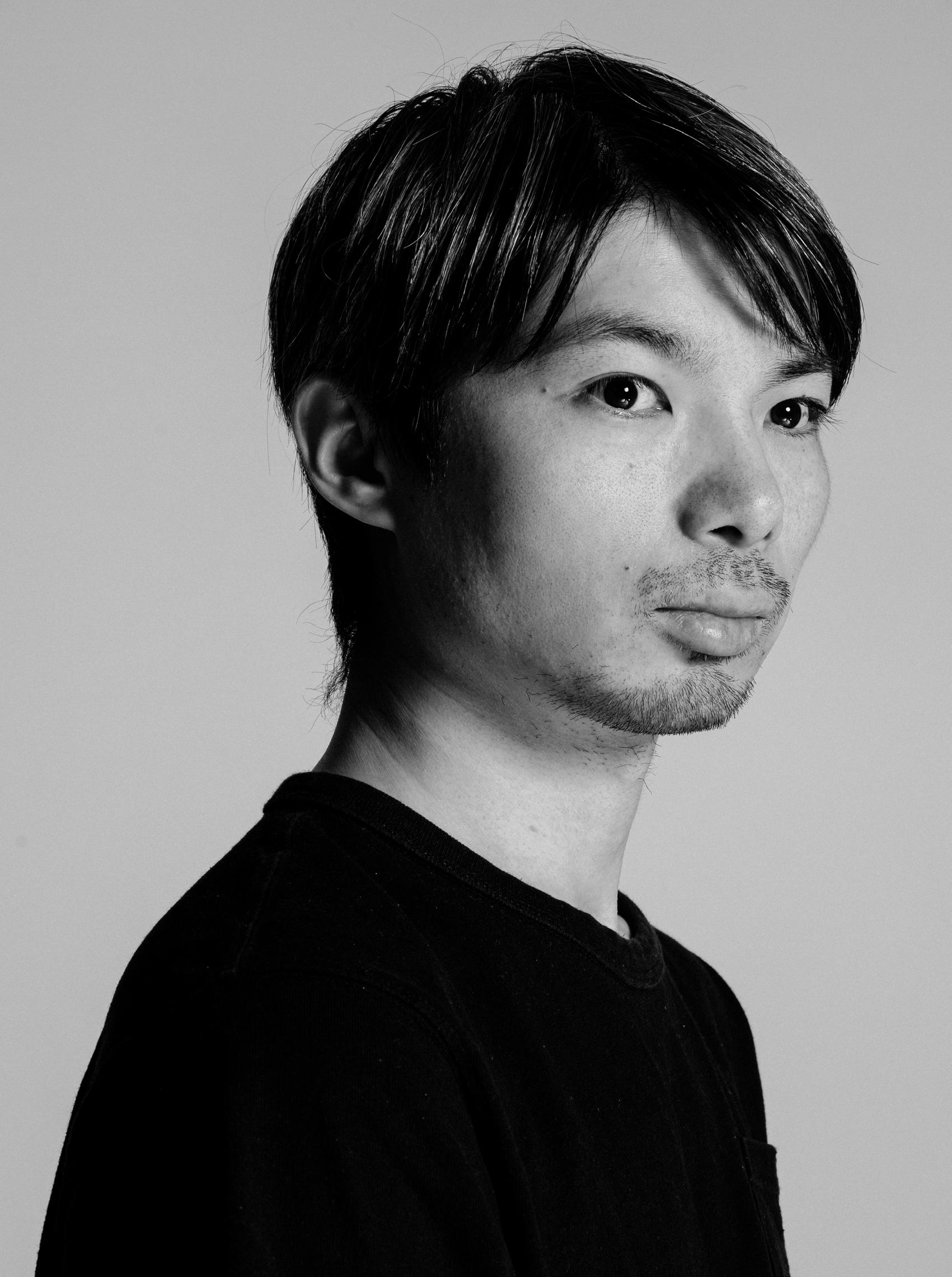
Sho Ota
Sho Ota’s practice is rooted in his experience of producing wooden furniture prototypes in Japan. Now based in Eindhoven, Sho expresses his longtime fascination for wood through the objects he creates, bringing to life a dialogue of cultures.
After graduating from Design Academy Eindhoven with a MA in Contextual Design in 2018, Sho established his own design studio soon after, when realising that his desire to expose the structure of the material couldn’t be achieved through mass production.
At the intersection of industrial design and craftsmanship, his sculptural works are both minimalistic and multi-layered.
Every piece is handmade by Sho himself. The development of the final form appears slowly through the making process and also depends on the wood – its appearance and texture can vary, making each piece unique.
Sho Ota’s work has been critically recognised through industry awards, as Finalist and Special Mention of IMM Cologne Pure Talents Contest in 2020 and Finalist of Design Parade Hyères in 2019.
9
’Subterranean’ side table, old and new oakwood. Limited edition
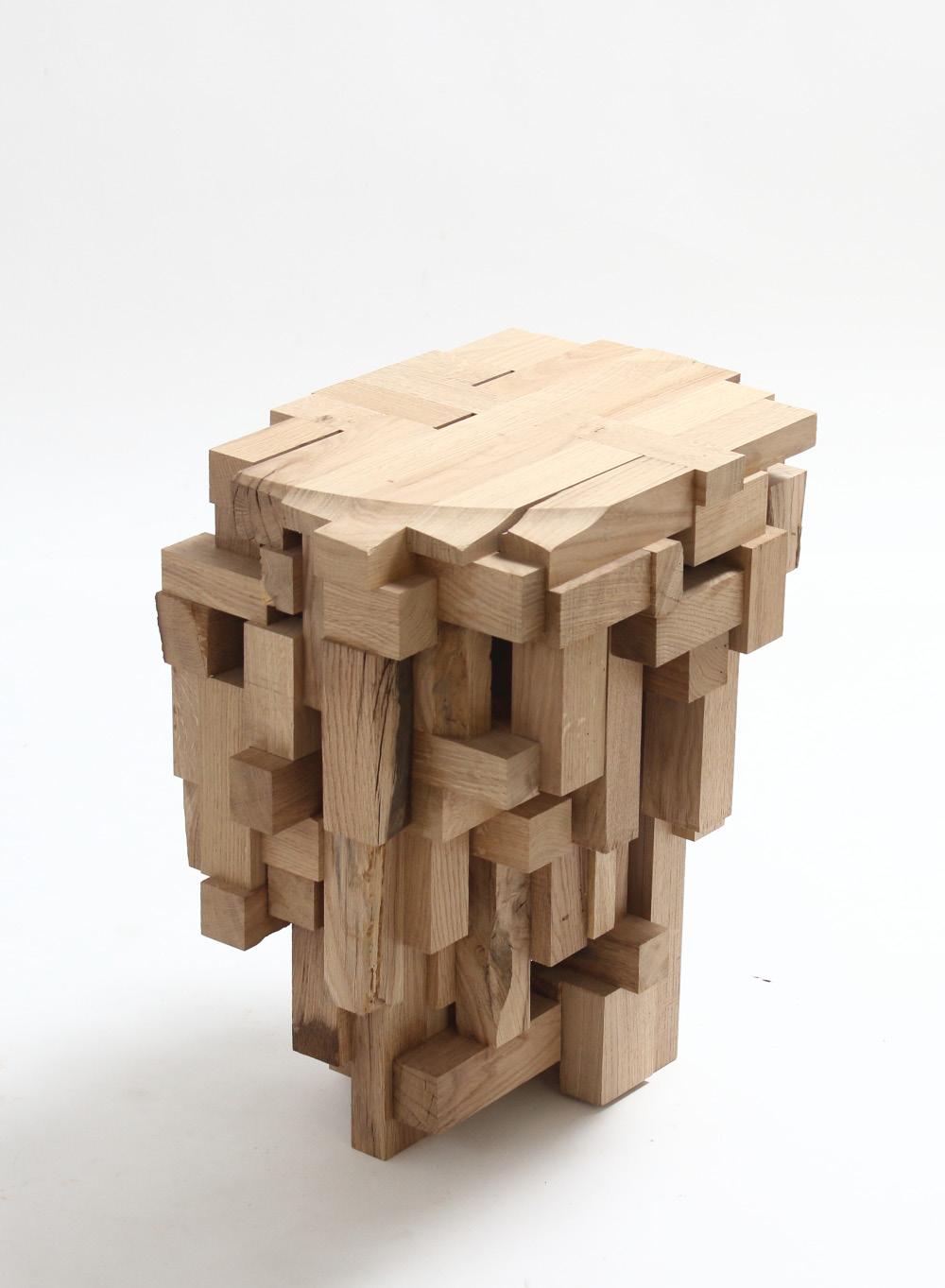
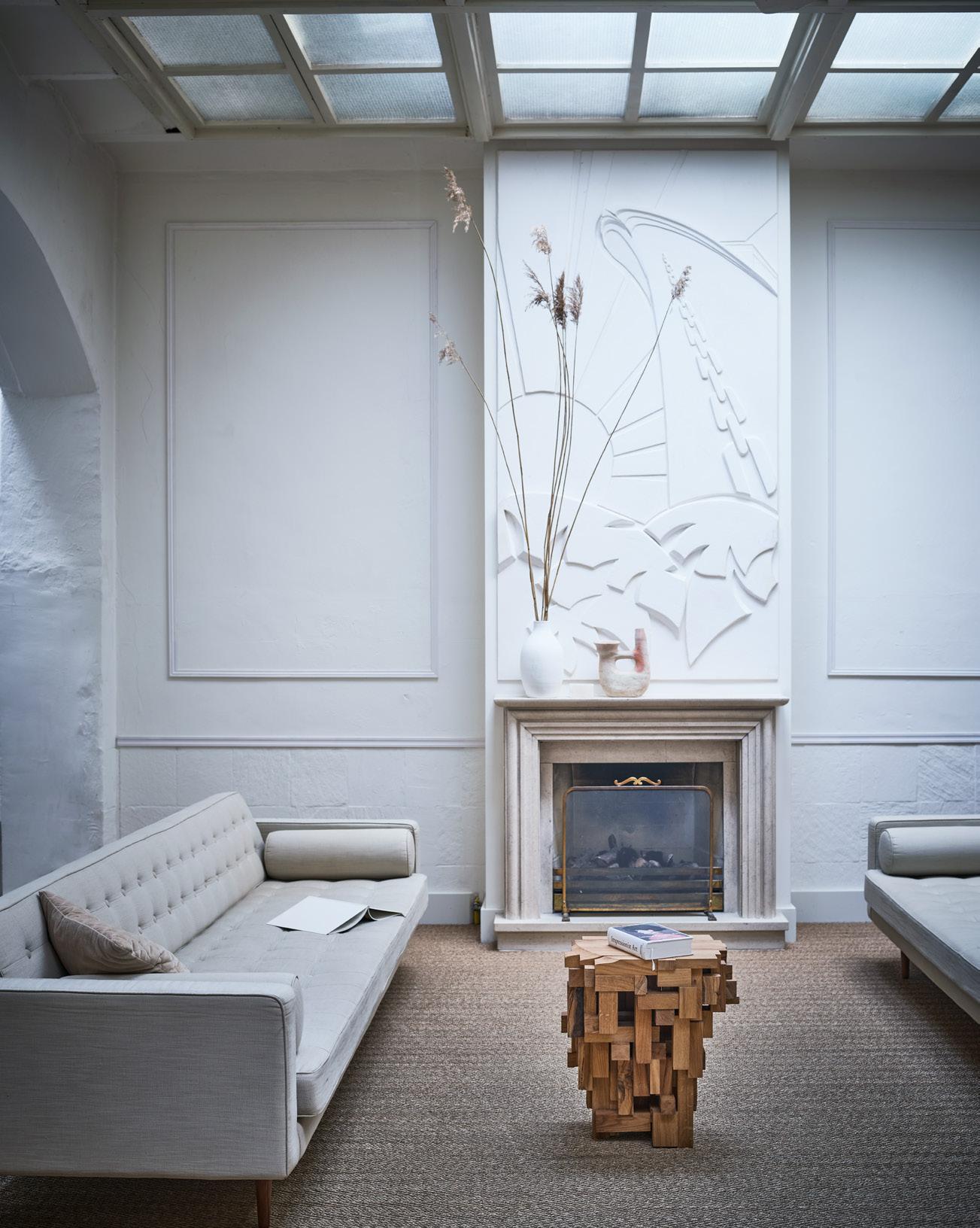
10 SHO OTA | SUBTERRANEAN
For ‘Splint’ collection, Sho has unified a large rectangular mass, which serves as a base, with smaller elements of wood; the main component alone is unstable but when assembled with the secondary parts, it is strengthened, allowing it to function as a table. Usually in furniture production, these parts are hidden or blended within the structure of an object, however, here Sho has deliberately left them exposed, simplifying them and presenting them in a form that is easy to understand.
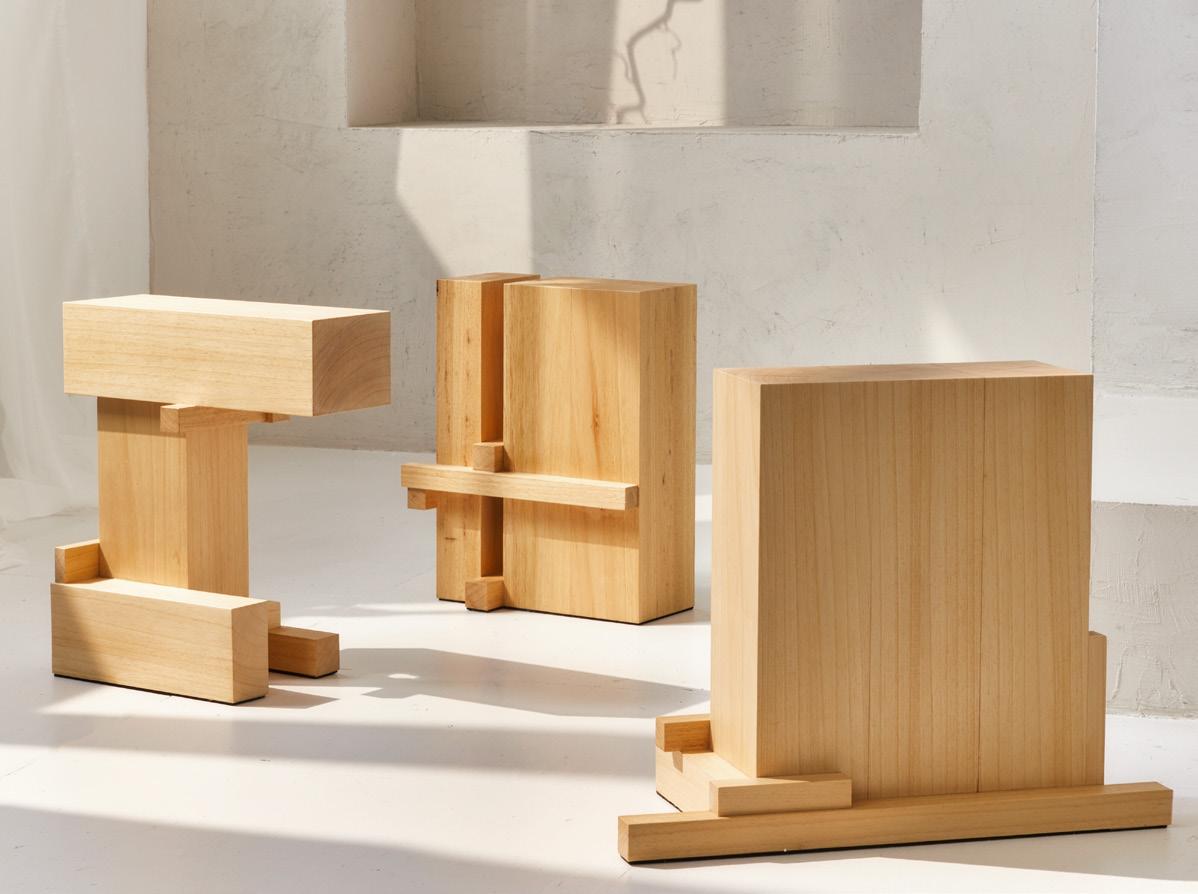
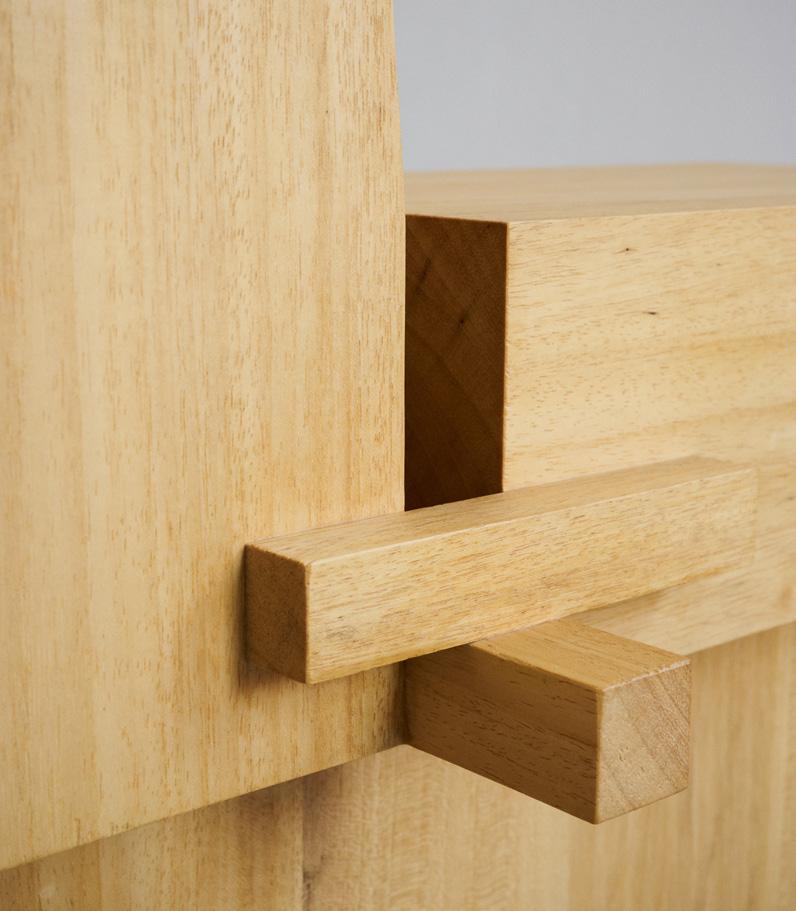
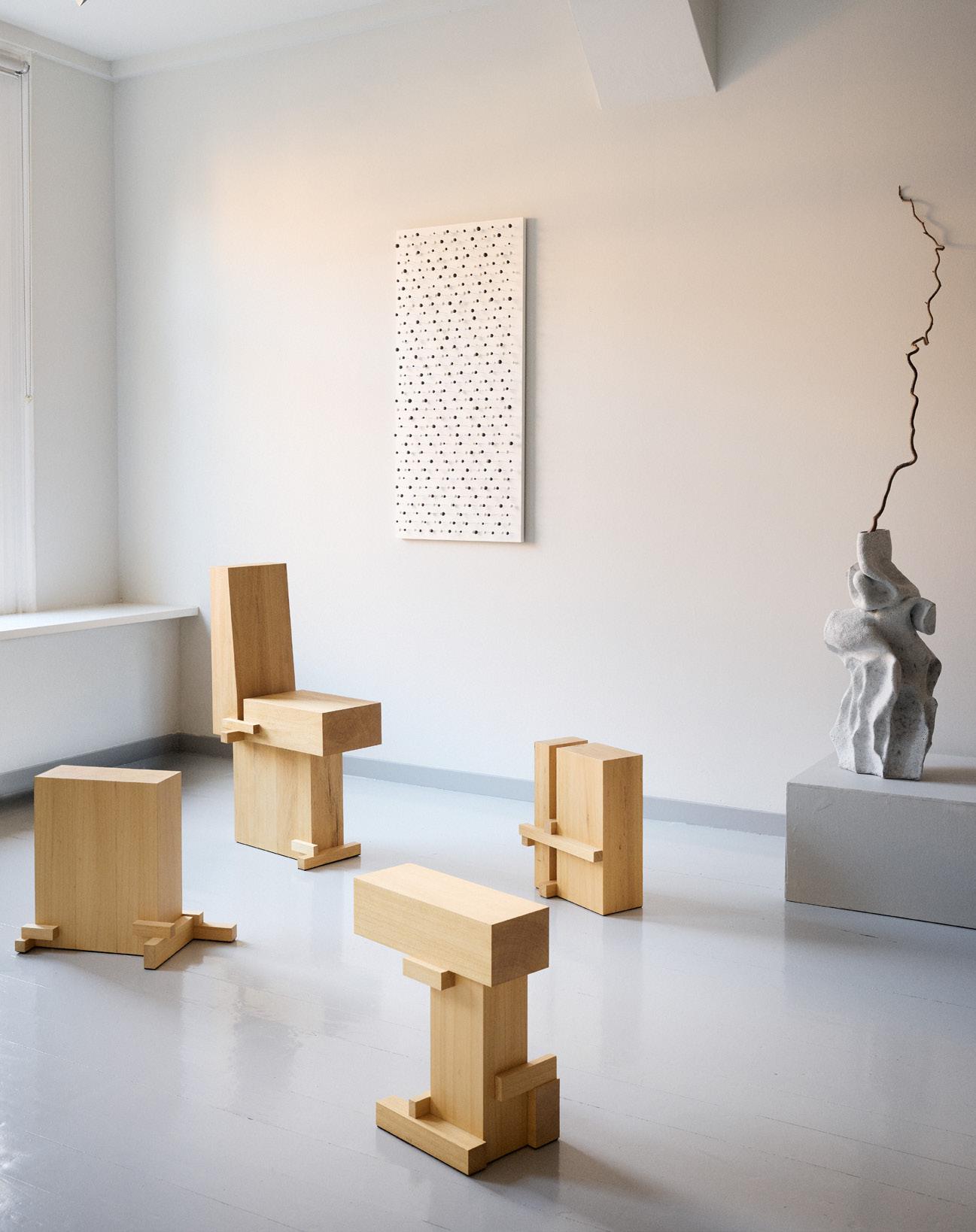
11 SHO OTA | SPLINT TABLE & CHAIR
Sho Ota known for his multi-layered, sculptural designs. Surfaced sculptural table and console are made of the tinted beechwood. Sho’s Surfaced collection stemmed from a desire to reveal the structures beneath industrial surfaces. He shows the beauty of the natural wood with all its imperfection by displaying the structure of wood to the viewers, leaving nothing hidden. Ota re-imagines a common piece of furniture into a functional sculpture deserving of admiration and attention.
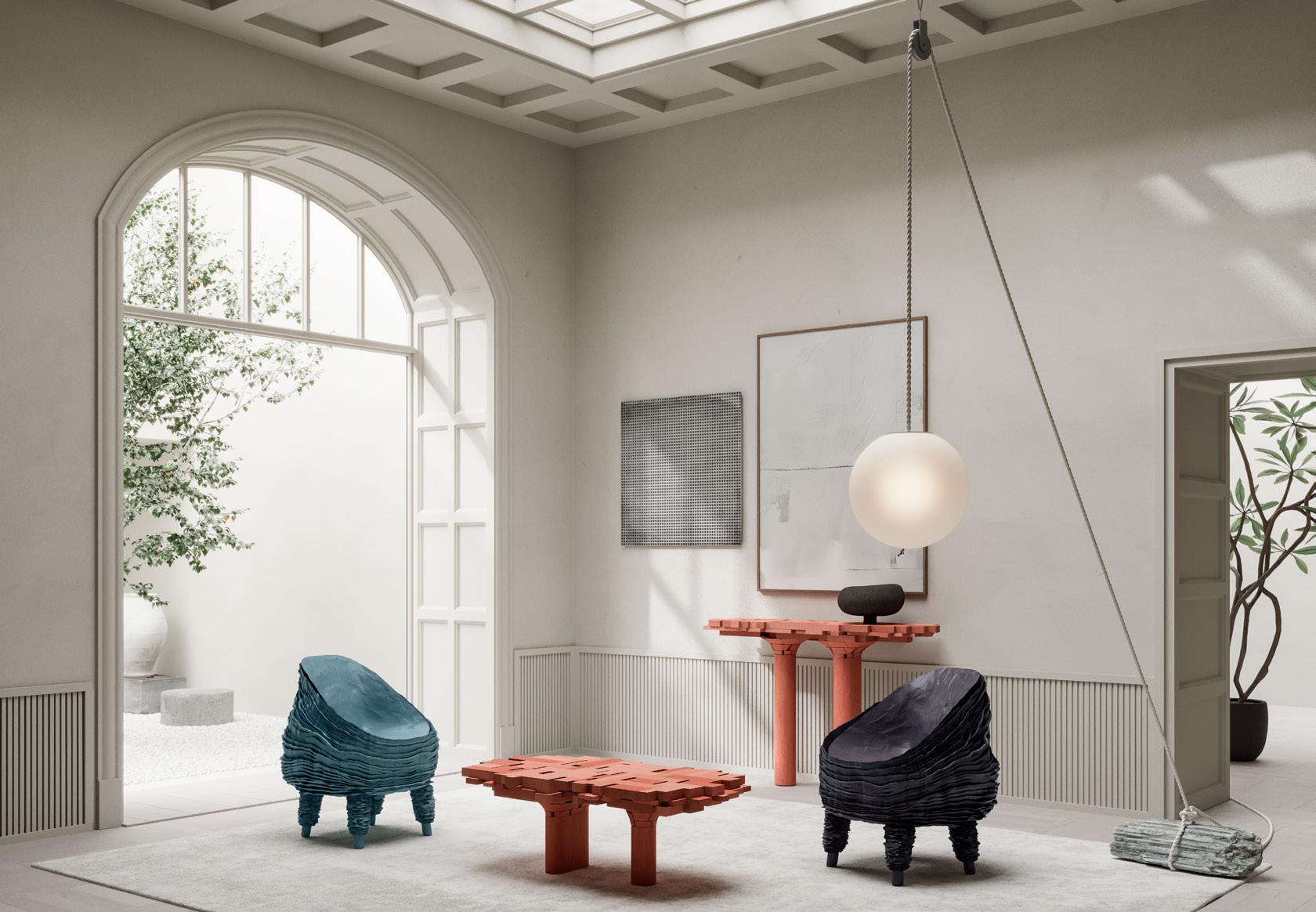

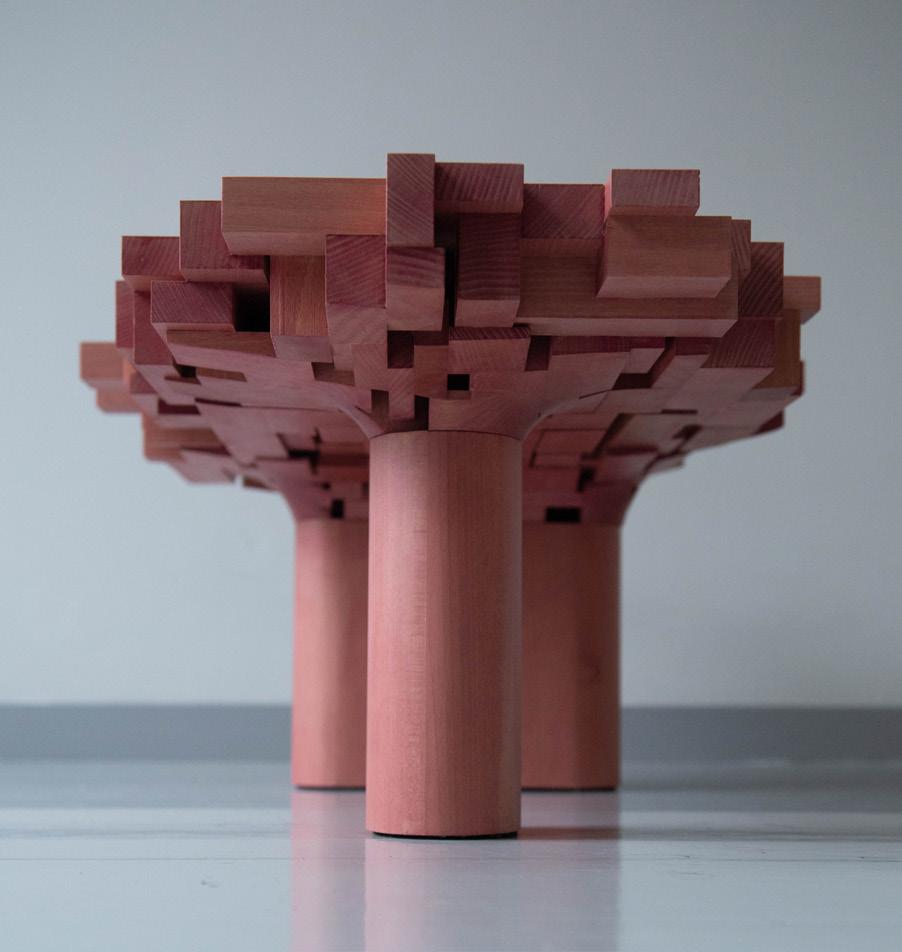
12 SHO OTA | SURFACED TABLE
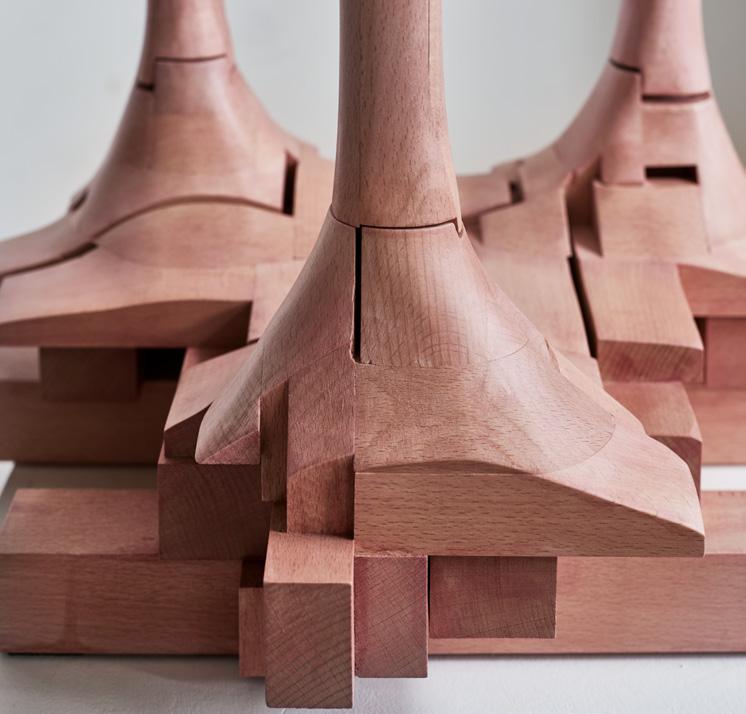
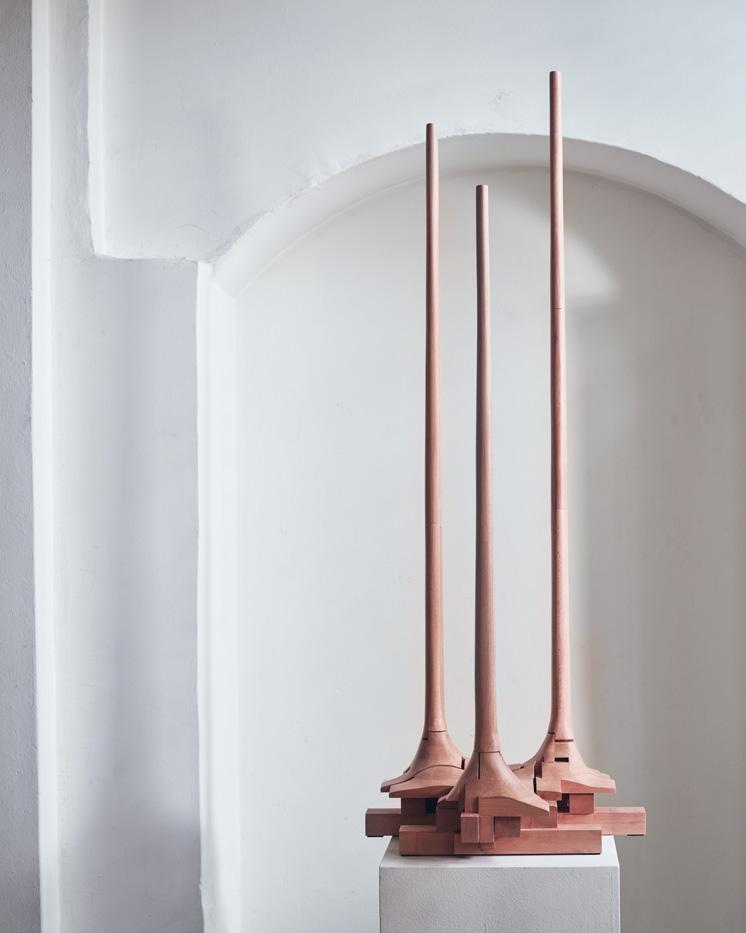
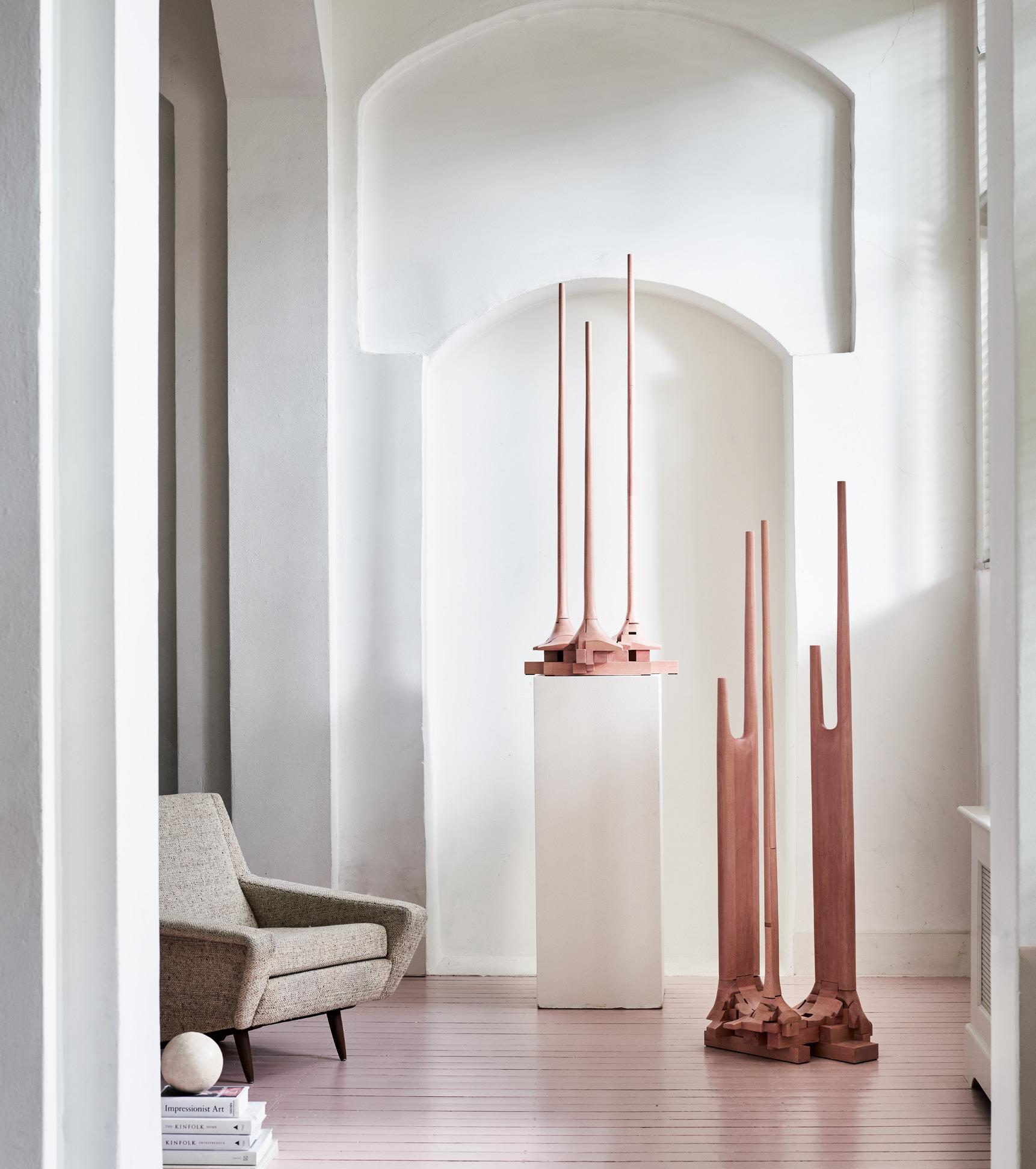
13 SHO OTA | SURFACED
‘Surfaced’ coat racks, tinted beechwood. Limited edition.
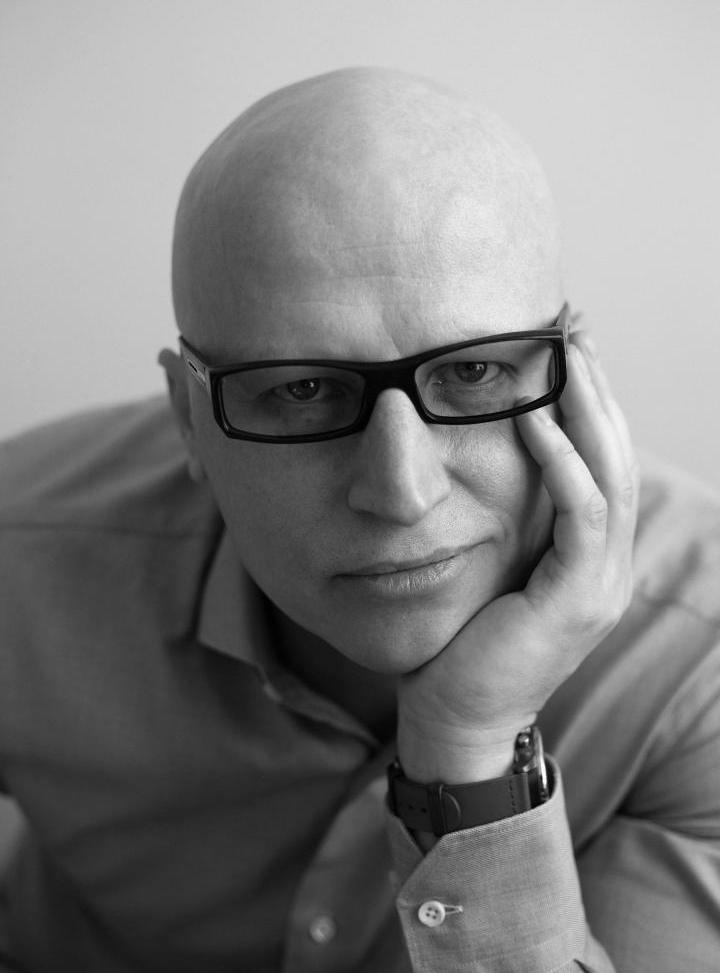
Vadim Kibardin
For many years, Vadim’s design practice has been recognised for experimenting with materials and developing unparalleled construction techniques. His work encourages positive social impact by awakening our collective human responsibility to the environment.
Vadim placed equal emphasis on both innovation and functionality. He takes the minimalist philosophy of stripping an object to its essential features to a completely new level. With his iconic Black Paper and Totem collections, Vadim offers his contribution towards achieving a circular economy, creating sculptural, highly aesthetic and fully functional furniture from cardboard waste.
Vadim Kibardin graduated from the Ural State Academy of Architecture and Art’s Industrial Design Department, Ekaterinburg in 1996. An internationally critically-acclaimed designer, Vadim was listed by Wallpaper* magazine in its list of the 40 designers “who will change the world”, along with Jonathan Eve, Ora Ito, John Maeda and the Bouroullec brothers. Vadim currently lives in Prague.
15
Kibardin has developed a construction method which utilises the underexploited properties of mundane packaging. Working predominantly with paper and cardboard waste as a sculptural medium, Kibardin delves into a conscious and responsible approach to consumption.


16
VADIM KIBARDIN | BLACK LOTUS
Black Mirror collection features various chairs and a coiffeuse table. Vadim’s designs express a tense dialogue between function and aesthetics. Rational and emotional worlds collide to give birth to a burst of energy encapsulated in one artistic functional object. Cardboard, black paper, unique objects.
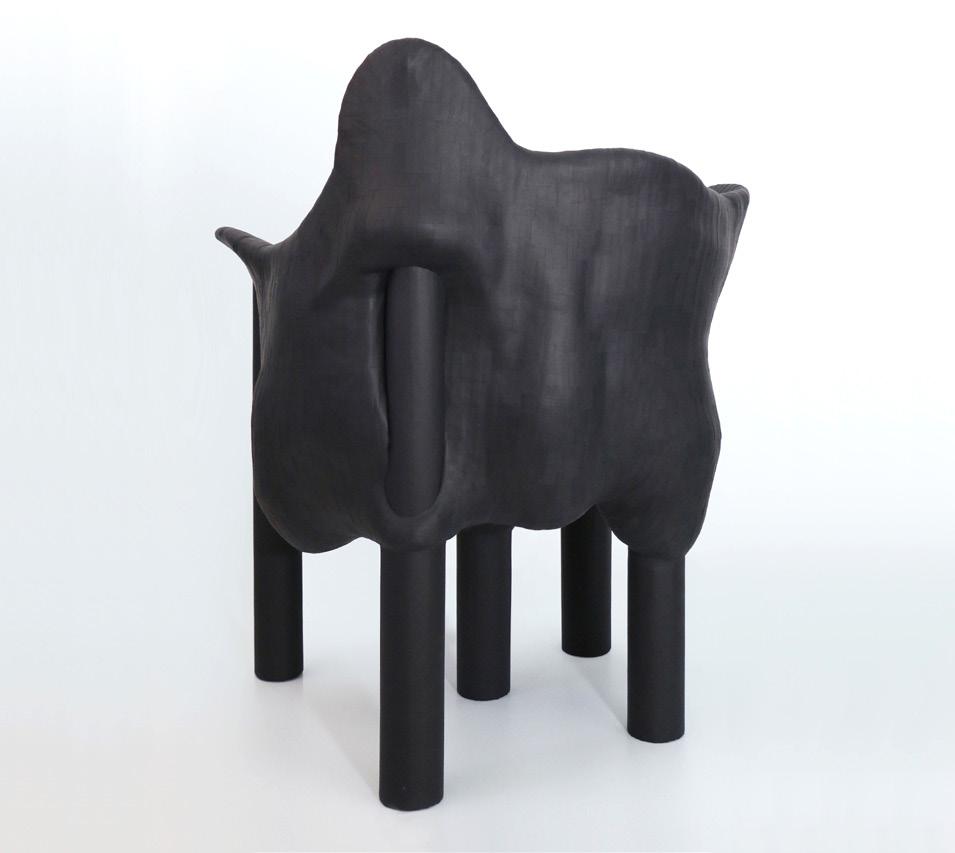
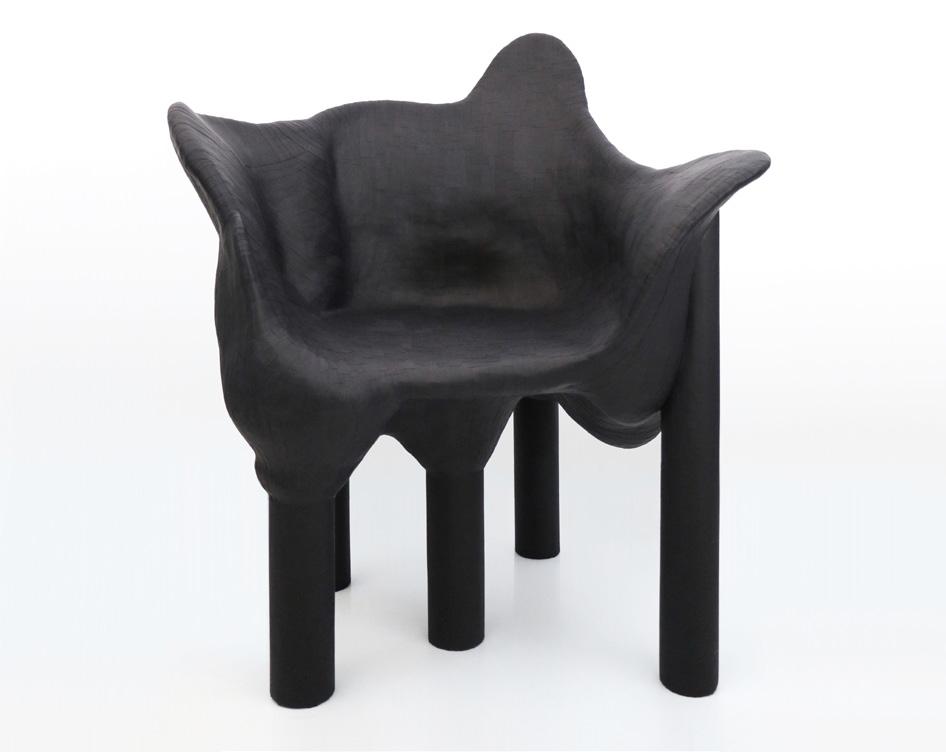
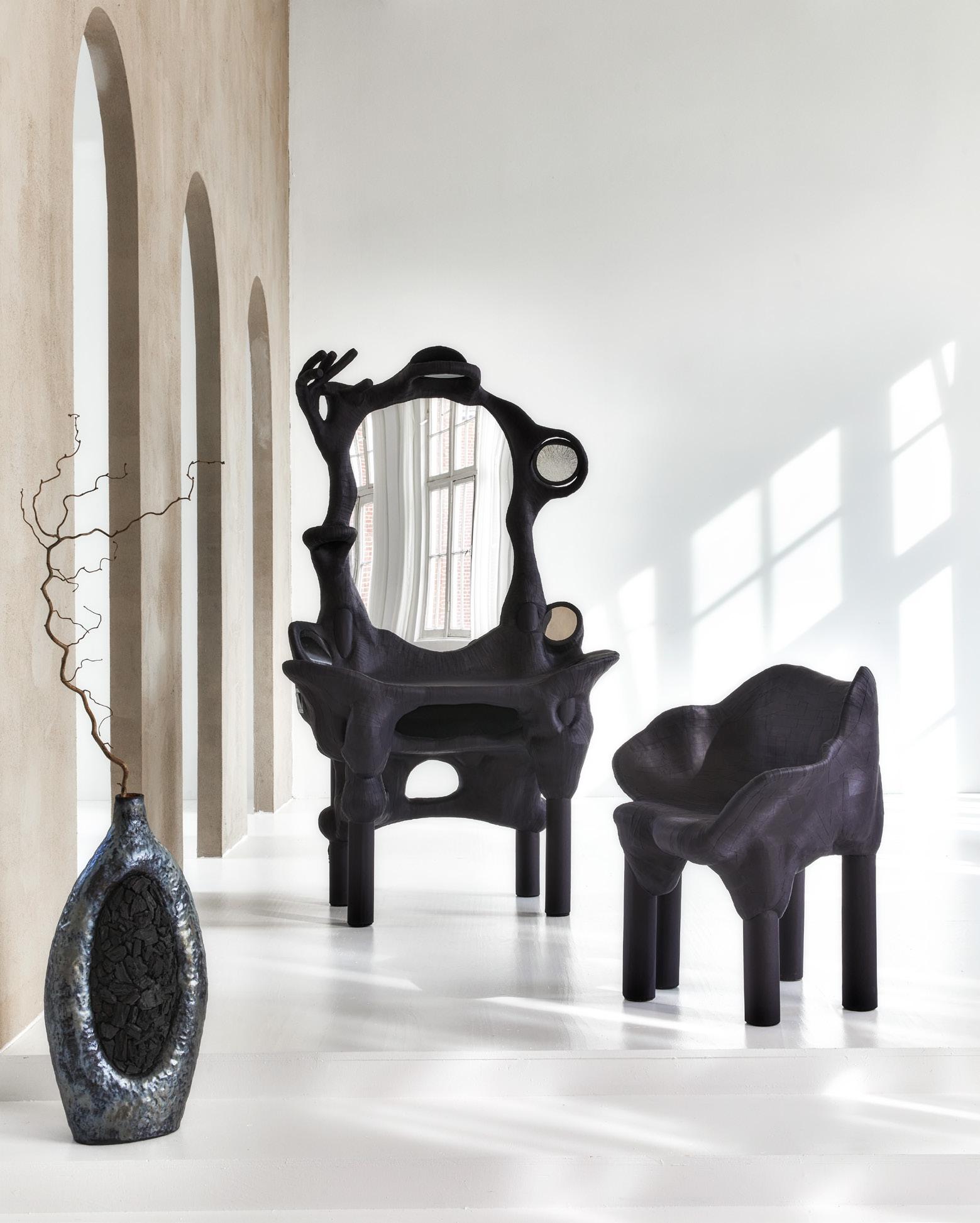
17
VADIM KIBARDIN | BLACK MIRROR COIFFEUSE & CHAIR
‘Duolly’ sofa, cardboard, black paper. Limited edition

18
VADIM KIBARDIN | DUOLLY SOFA
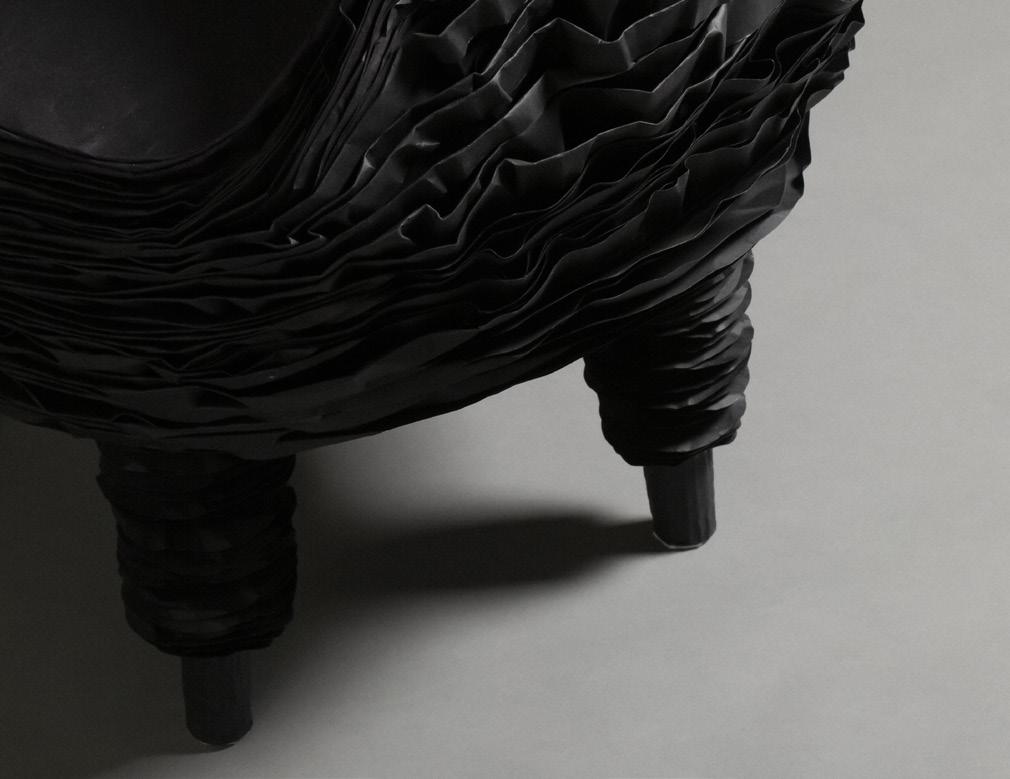

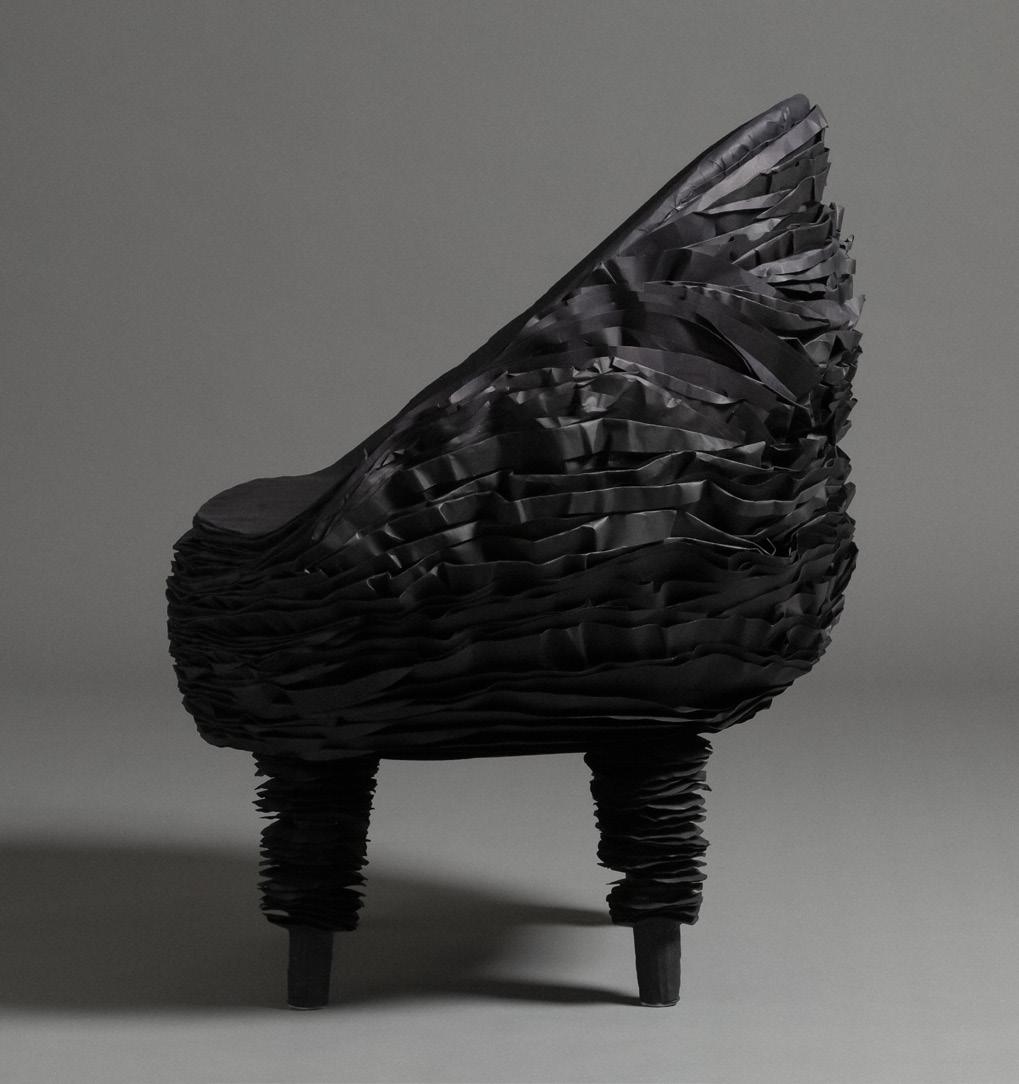
19
KIBARDIN | DOLLY CHAIR
VADIM

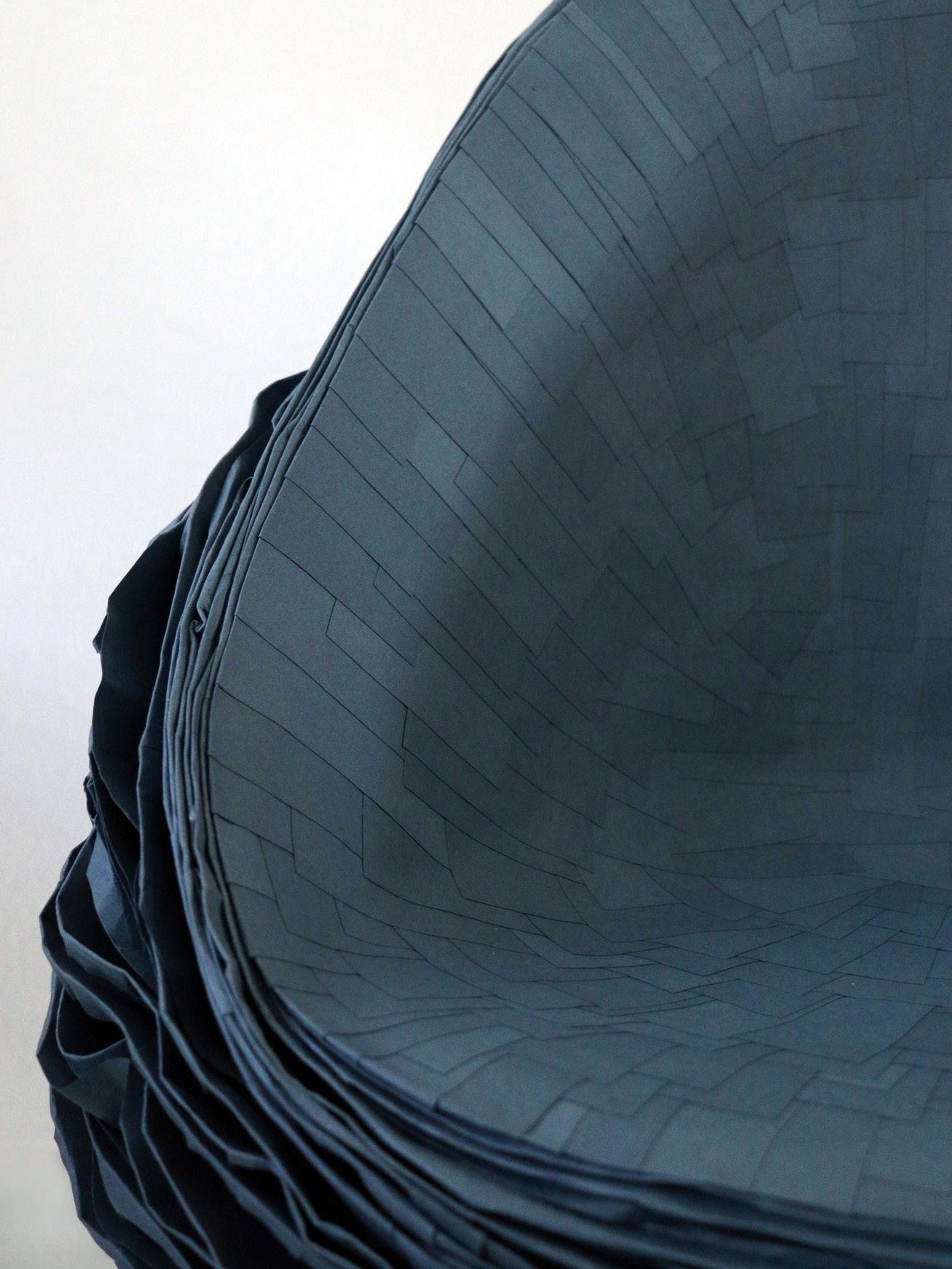
20
VADIM KIBARDIN | DOLLY BLUE
Dolly’ chair in color. Cardboard, blue paper. Limited edition
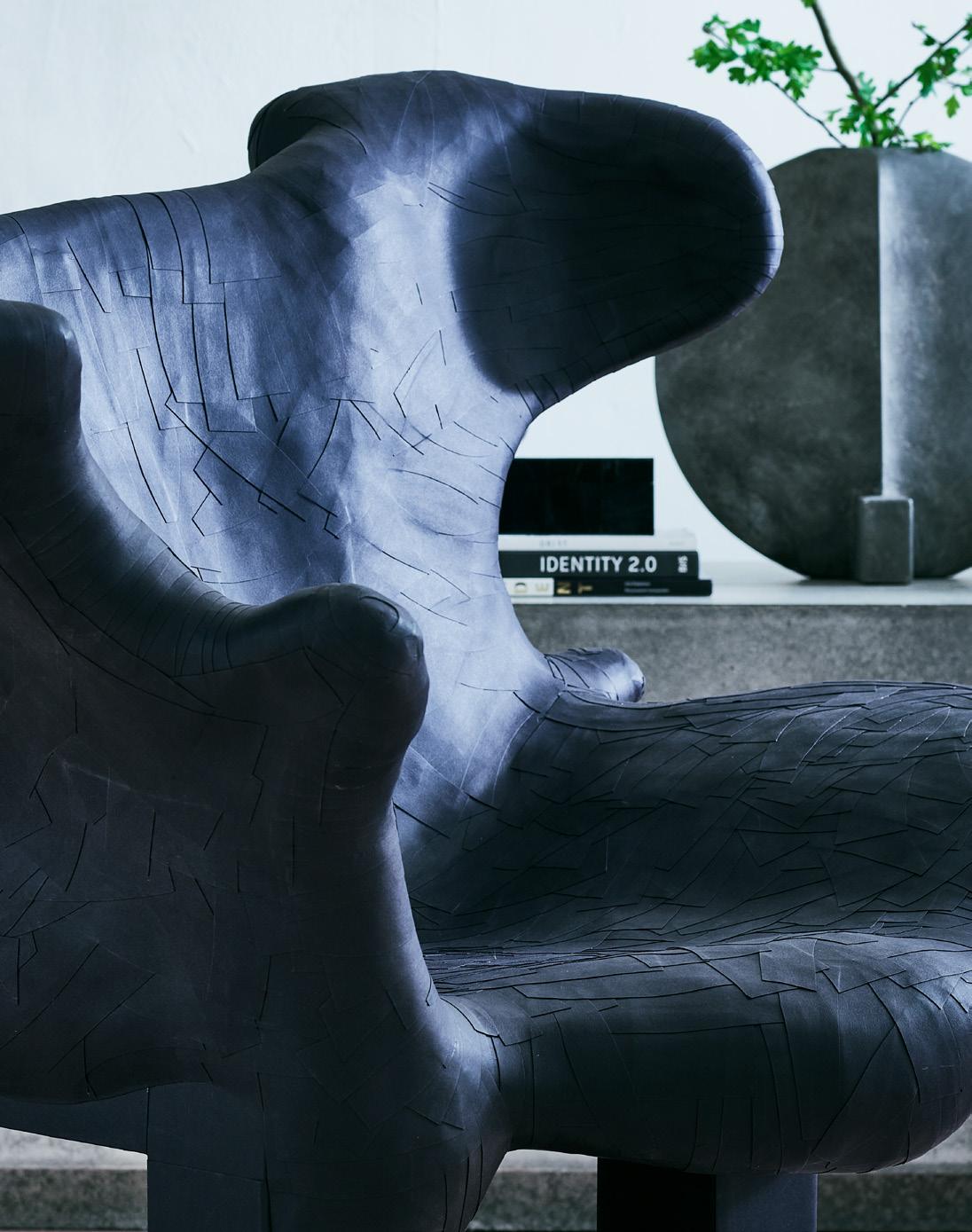
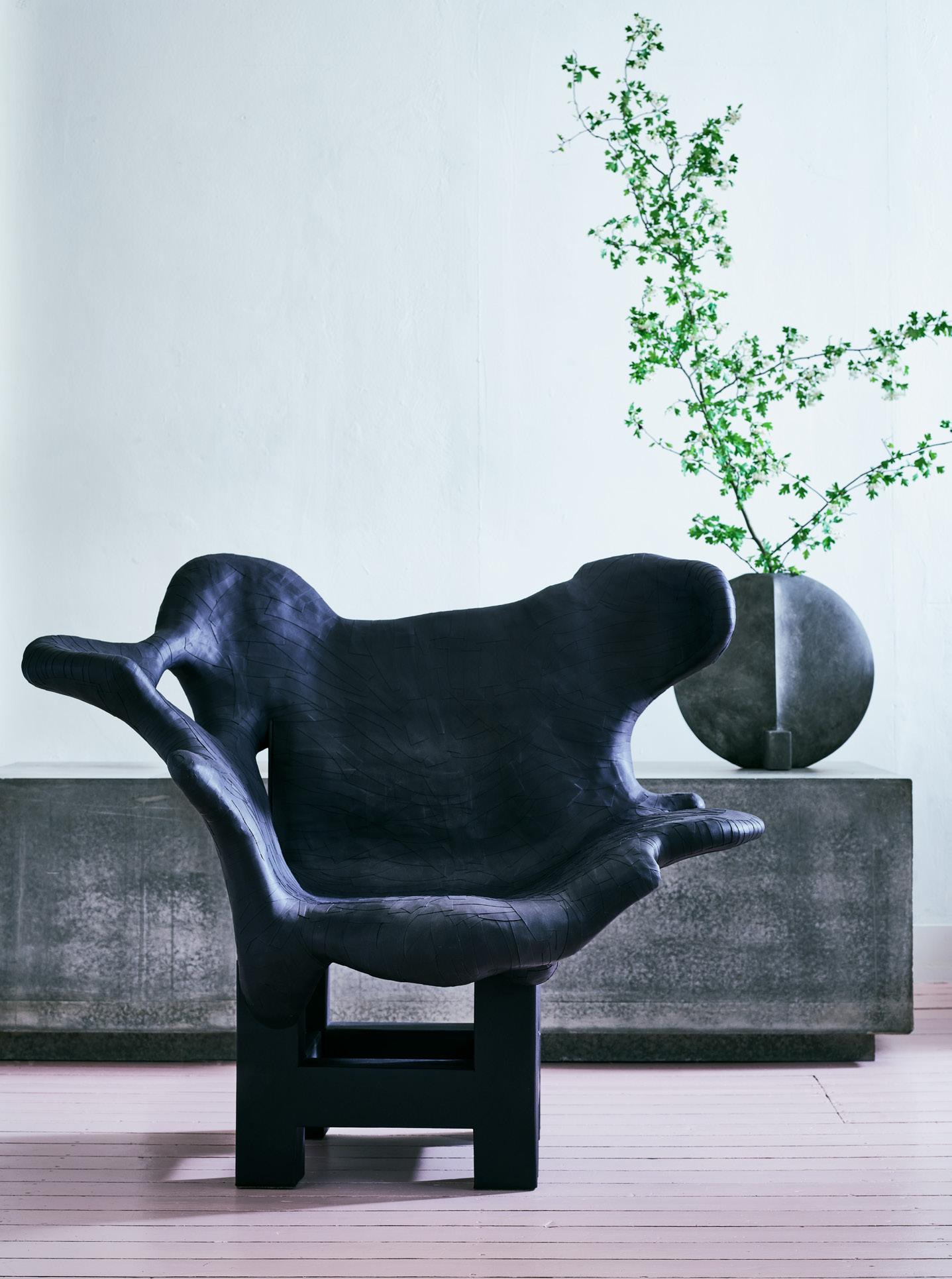
21
VADIM KIBARDIN | BLACK MIRROR CHAIR
’Black mirror’ chair, cardboard, black paper. Unique
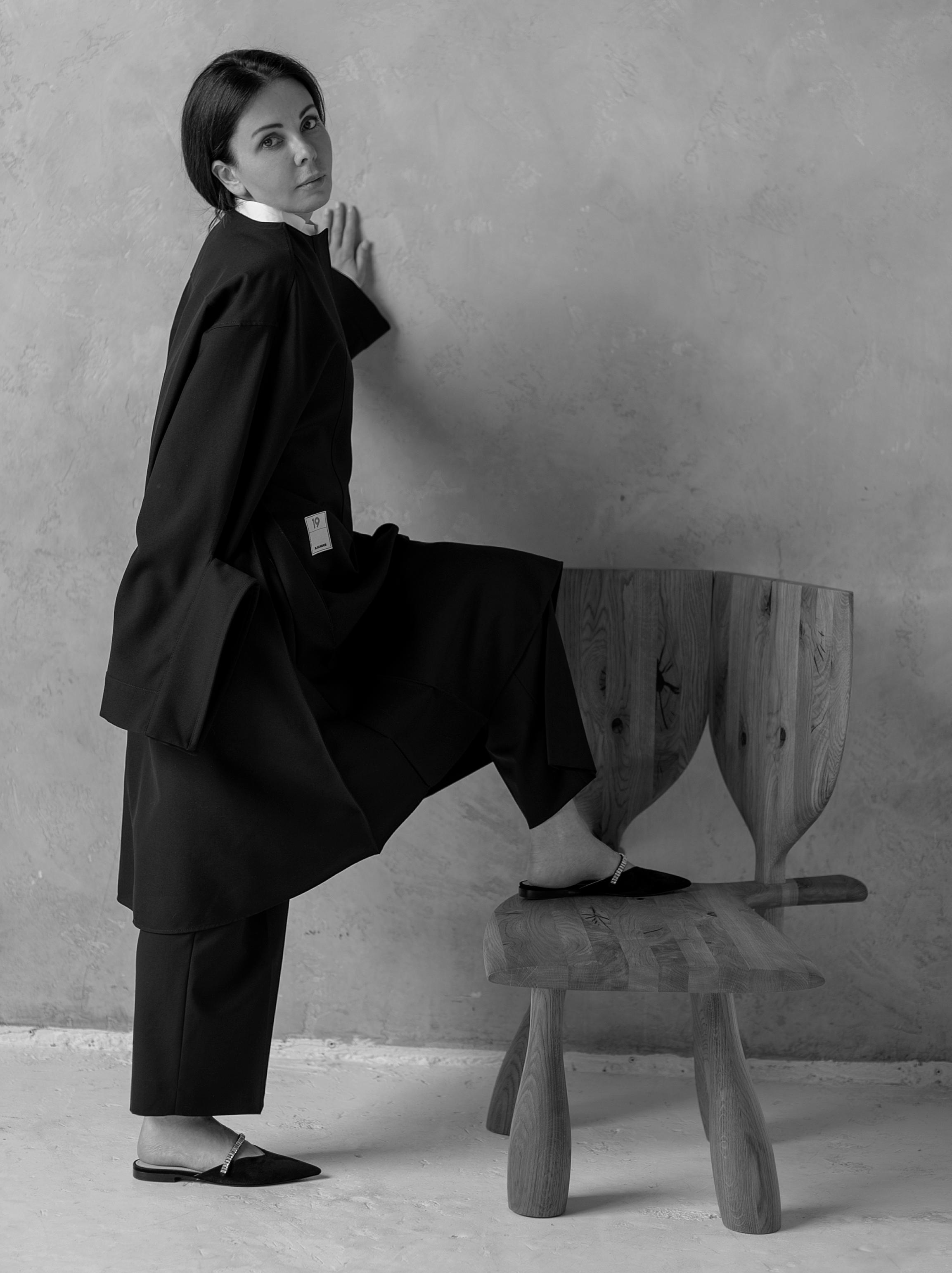
Olga Engel
Olga Engel harmoniously fuses materiality with minimalism while twisting functionality with a light mood and poetic touch of irony. Olga always takes cue from personal stories, bringing sensitivity and charisma to her works and the space they sit in. Her practice is fuelled by her desire to metamorphose ordinary objects into whimsical design pieces by giving them new, unexpected functions.
After graduating from the Moscow Textile Academy, Olga proceeded to practice graphic design and packaging design for cosmetic brands.
In 2010, Olga received an Interior Designer Diploma from Moscow’s “Details’’ Design School, and continued her studies at the KLC School of Design in London.
There, Olga interned at the studio of renowned British designer Mark Humphrey where she gained her experience as a product designer.
Olga currently works in between Latvia and France. Olga Engel’s pieces can be found in private collections across Europe and USA.
23
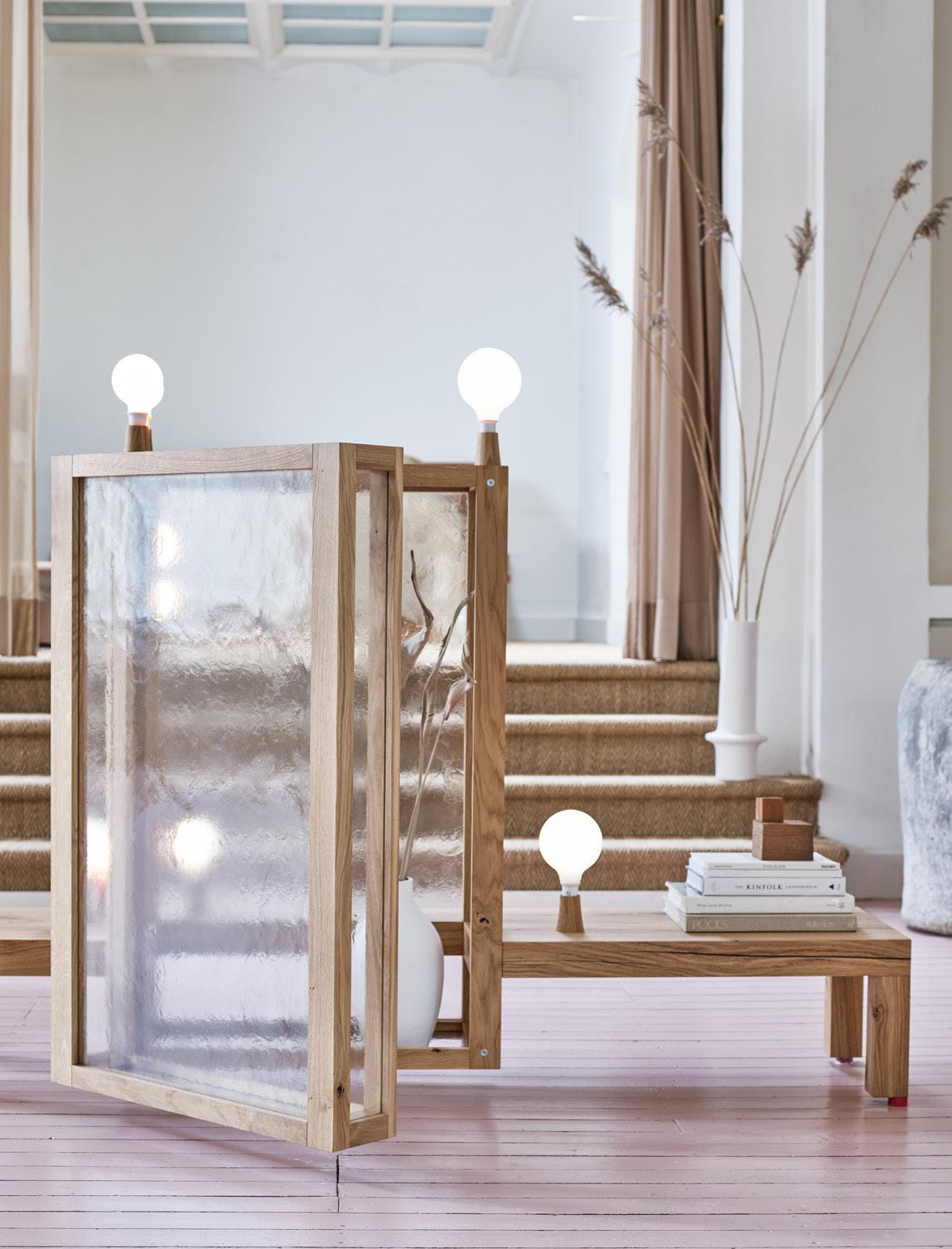
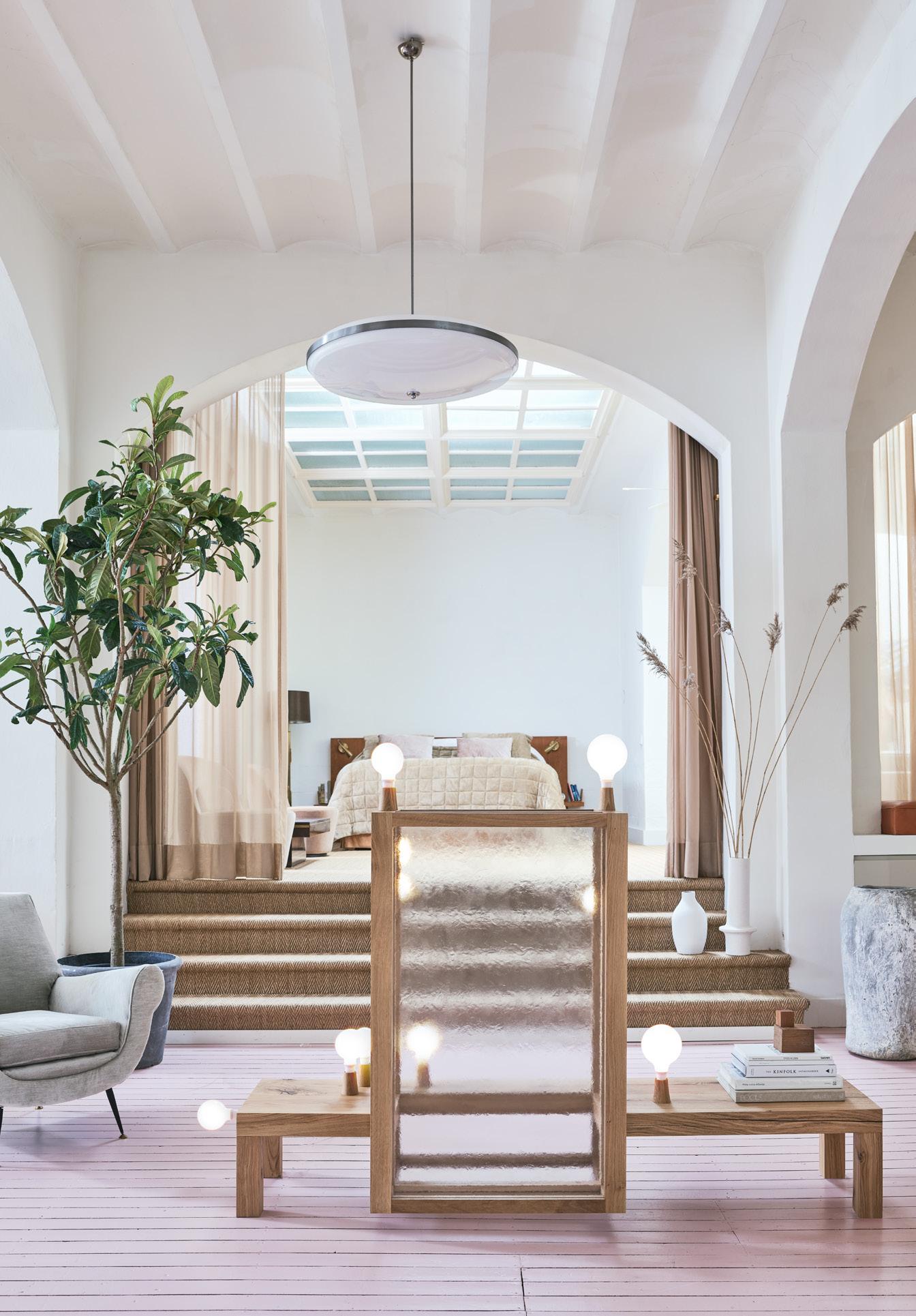
24 OLGA ENGEL | LIGHTBOX L2
’Lightbox L2’, oakwood, handmade glass, light. Limited edition
‘Flowers’ collection of seating. Limited edition
Similar to a floral arrangement in a vase, Olga’s ‘Flowers’ seating elements can be combined in different, minimalist compositions to create completely new, singular forms.
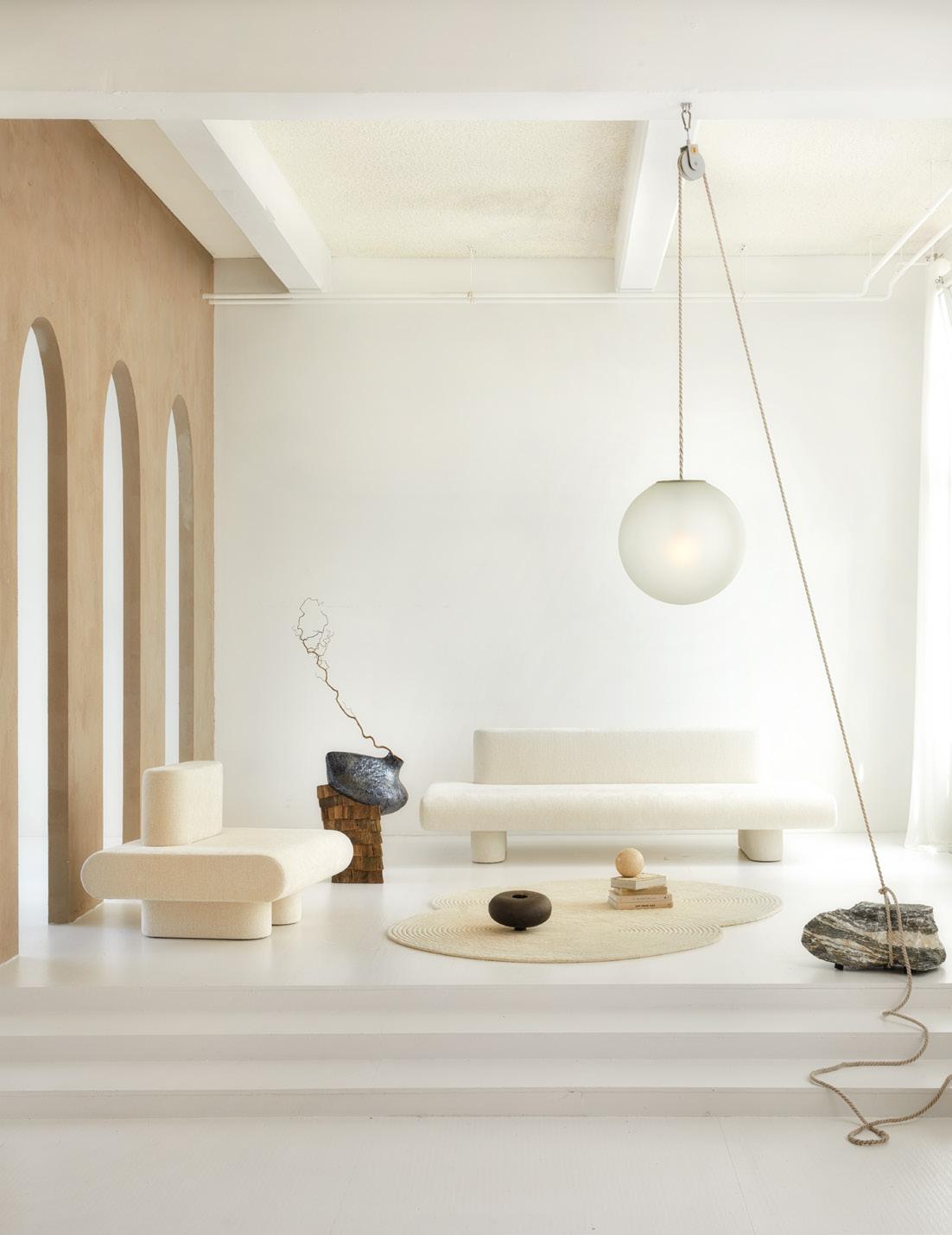
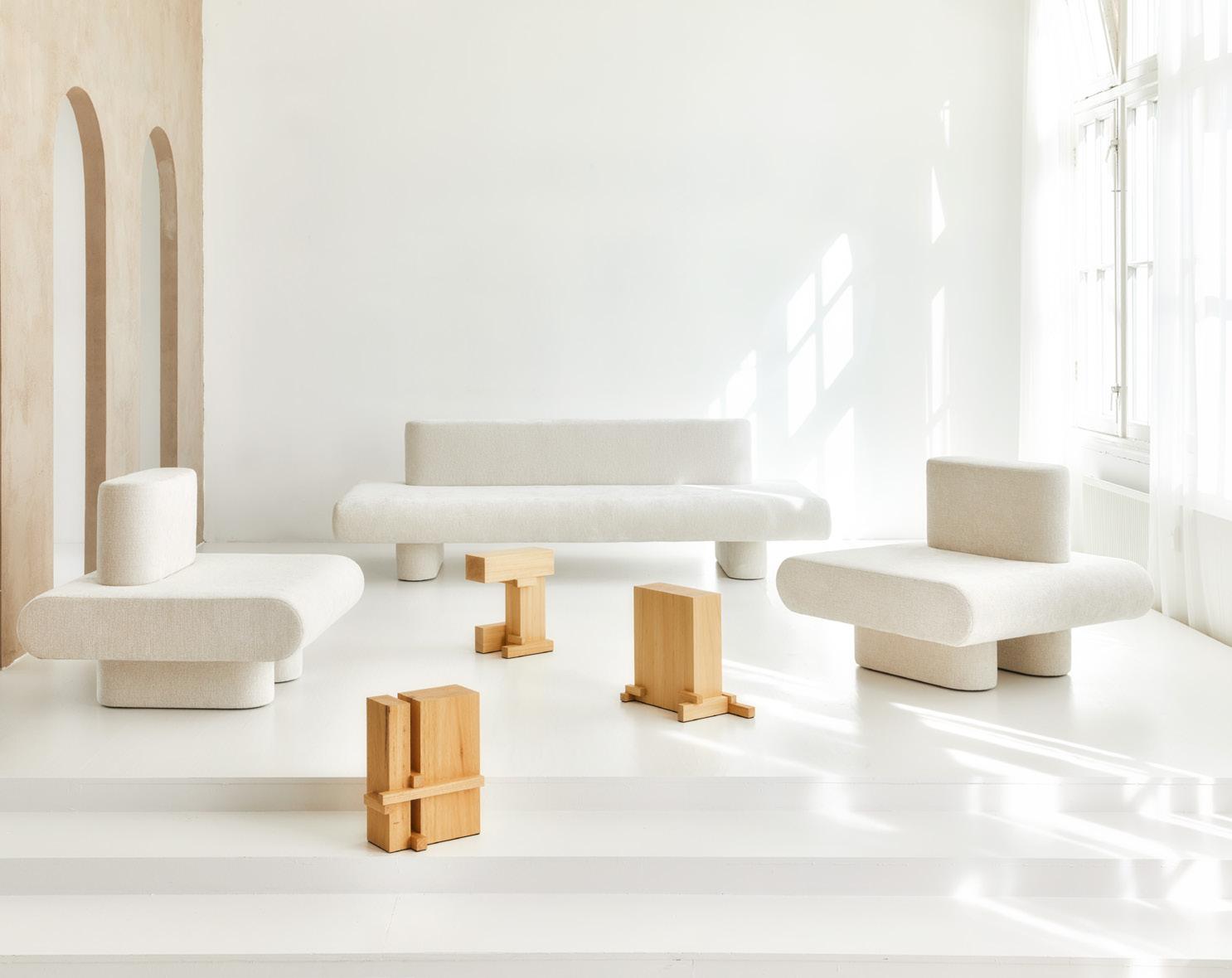
25
OLGA ENGEL | FLOWERS LOUNGE SOFA
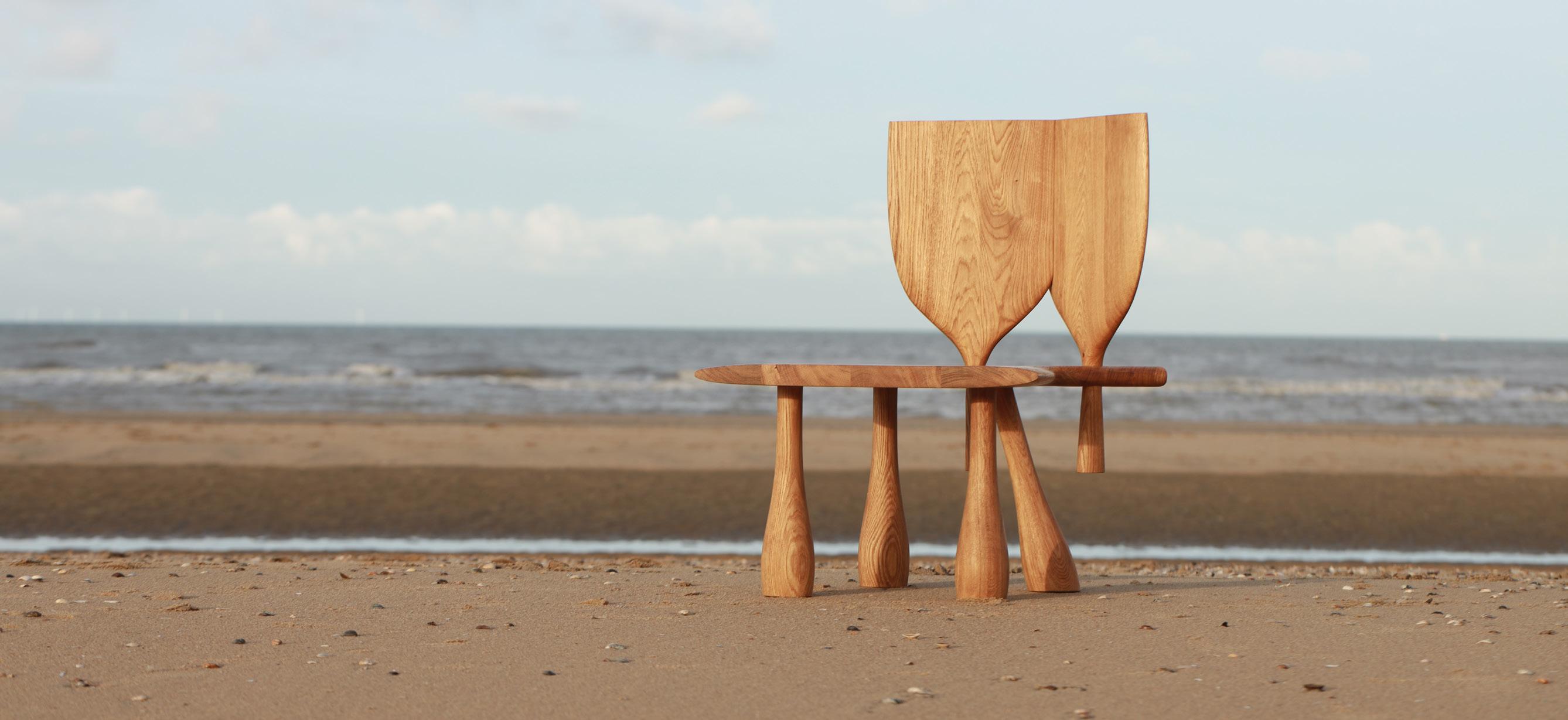
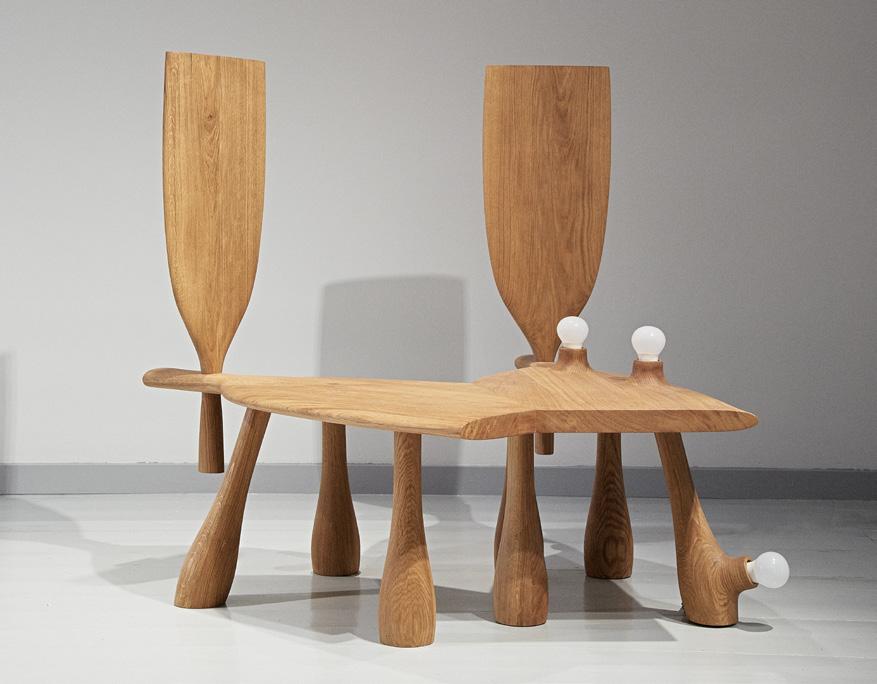
26
OLGA ENGEL | BABUSHKA
’Babushka’ collection of benches, oakwood, oil. Limited edition
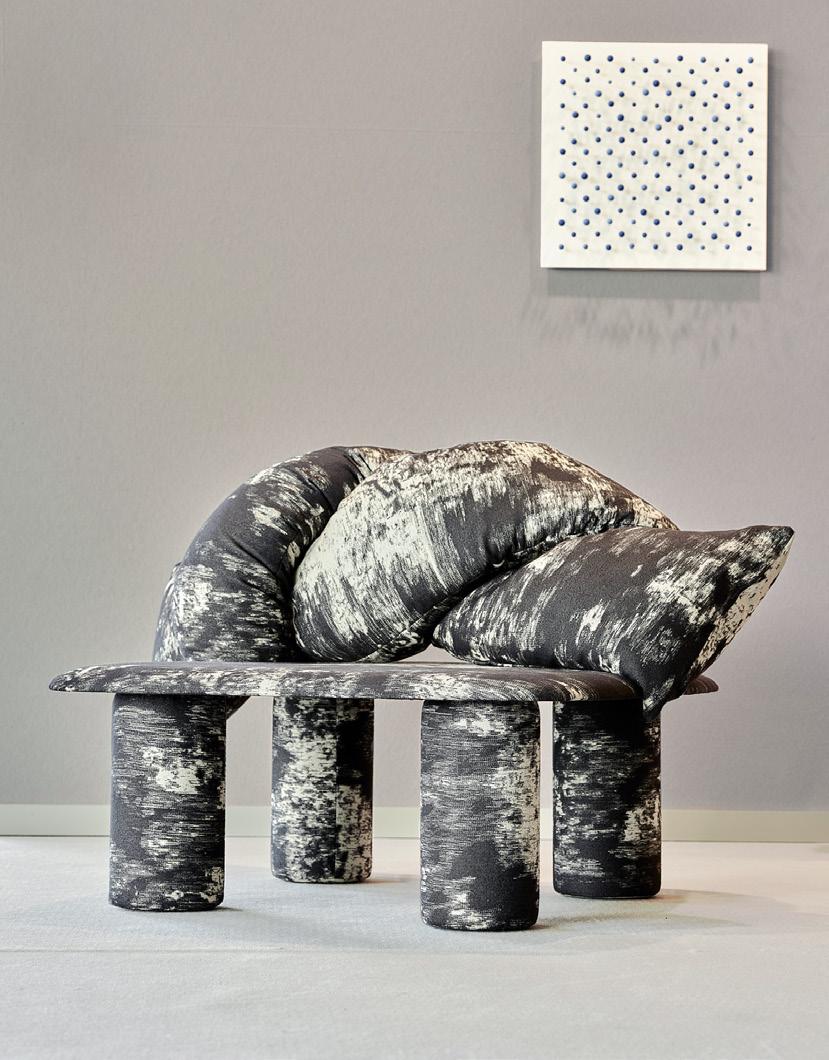
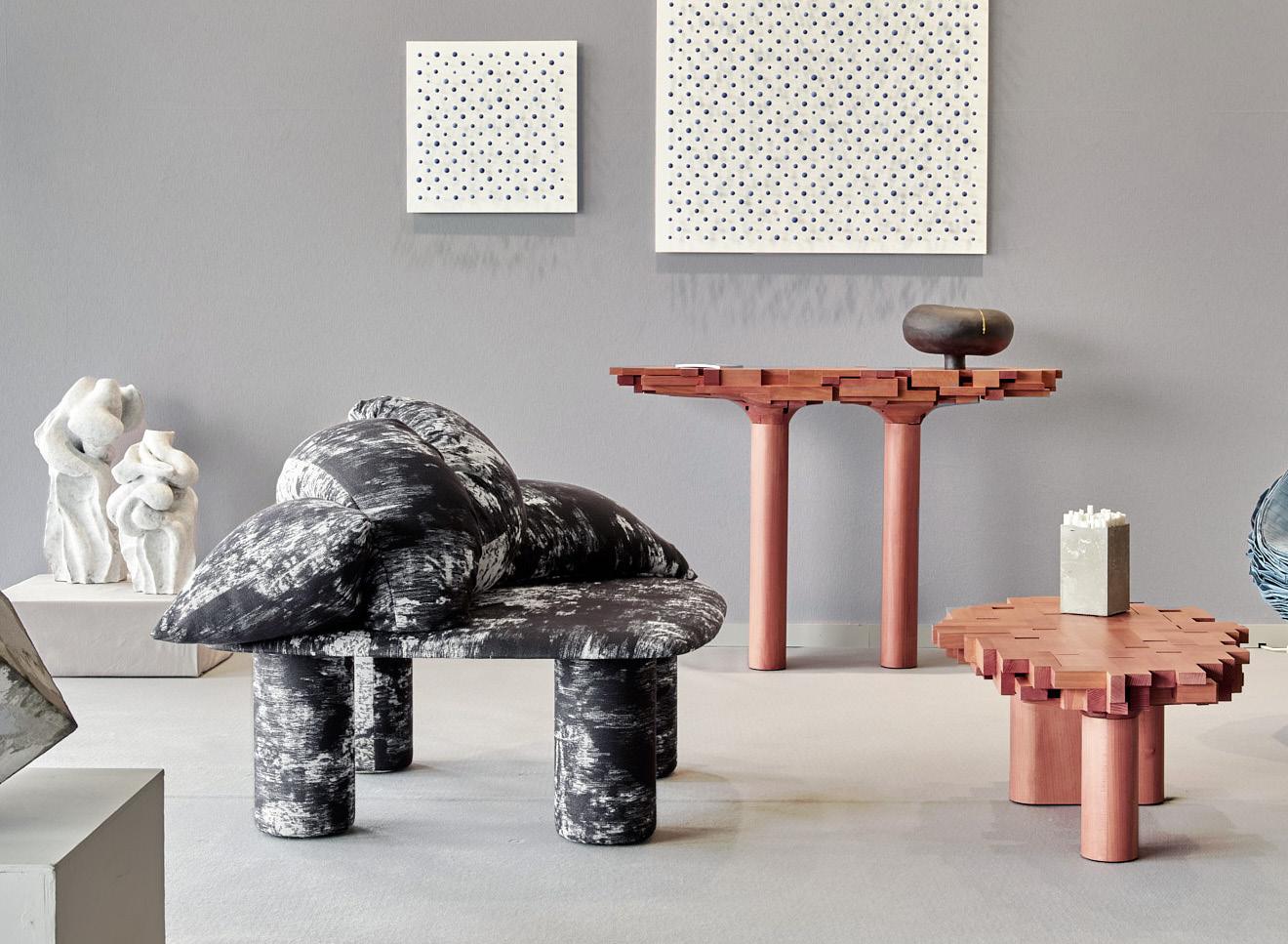
27 OLGA ENGEL | OBI
’Obi’ chair inspired by traditional Japanese kimono
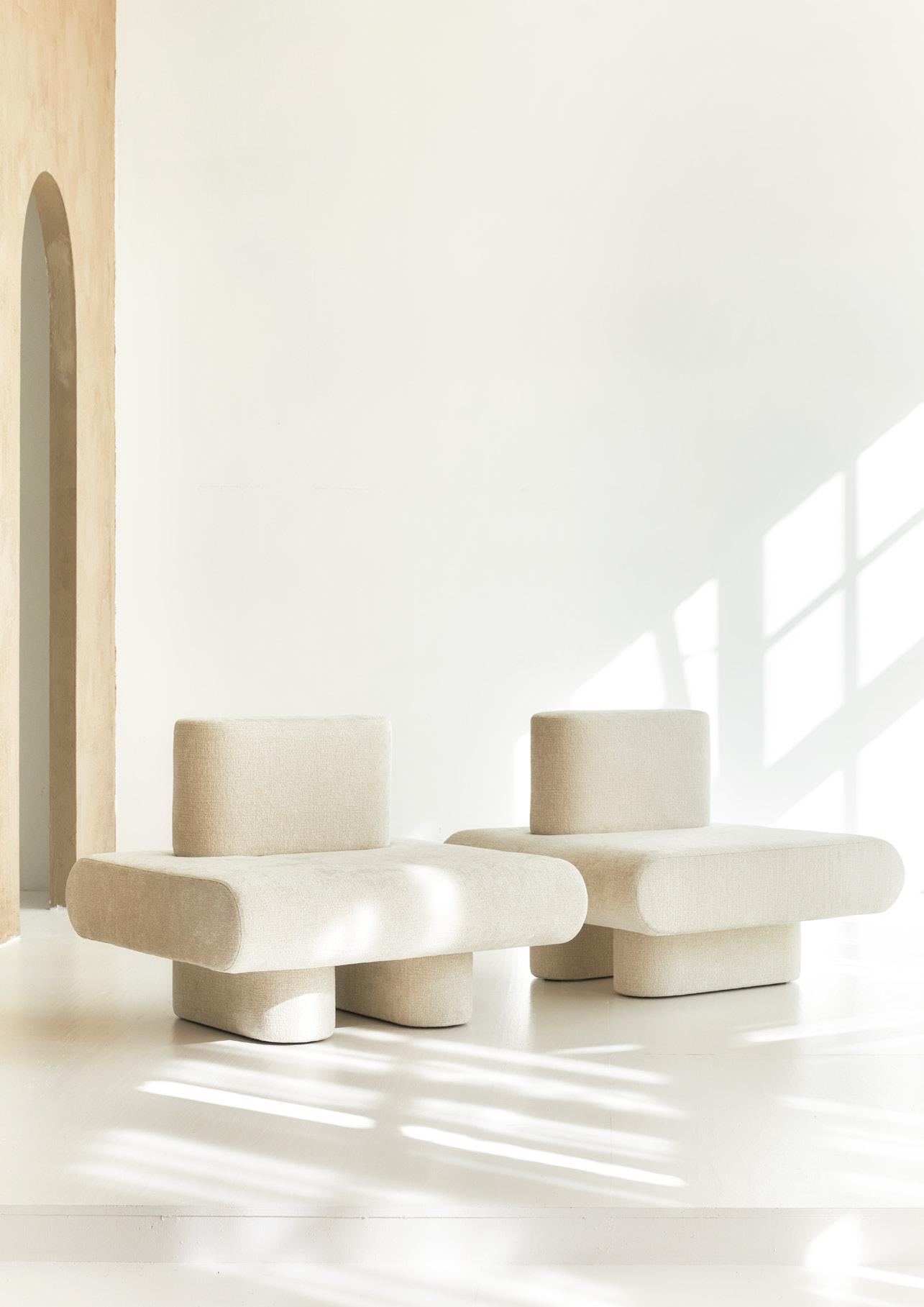
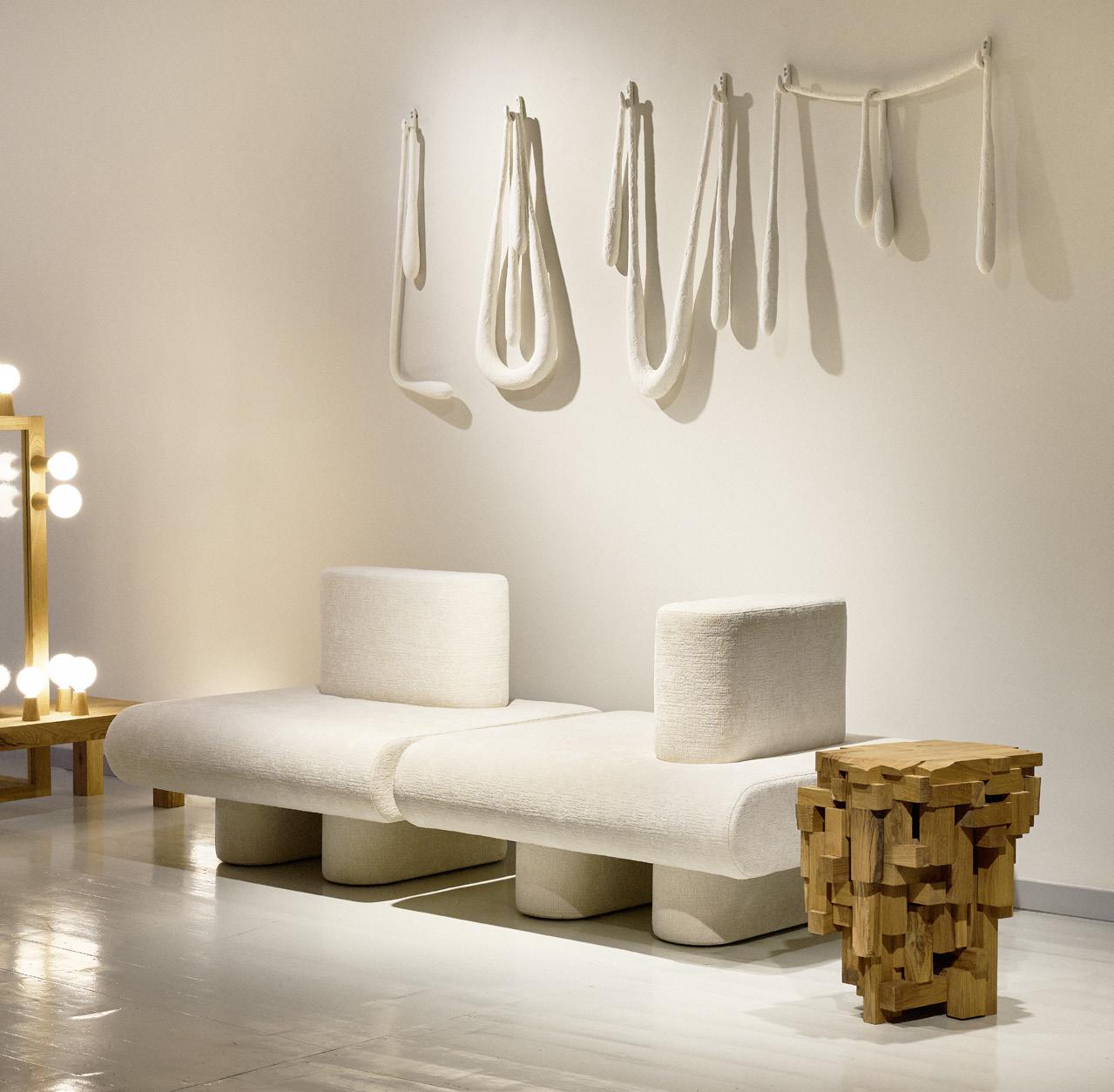
28 OLGA
|
ENGEL
FLOWERS CHAIR & LOVE WALL SCULPTURE
‘Flowers’ chairs and ‘Love’ wall sculpture by Olga Engel
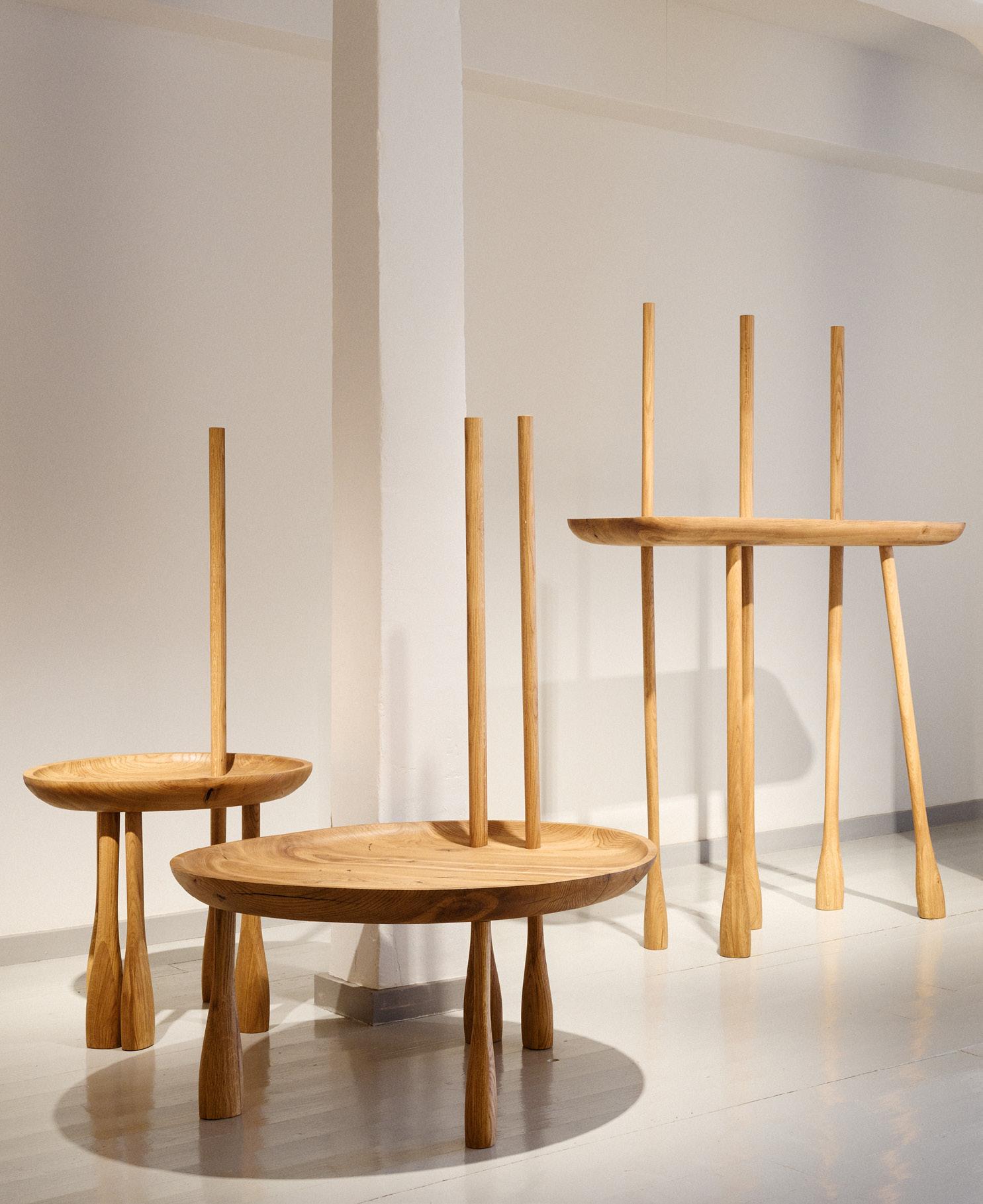
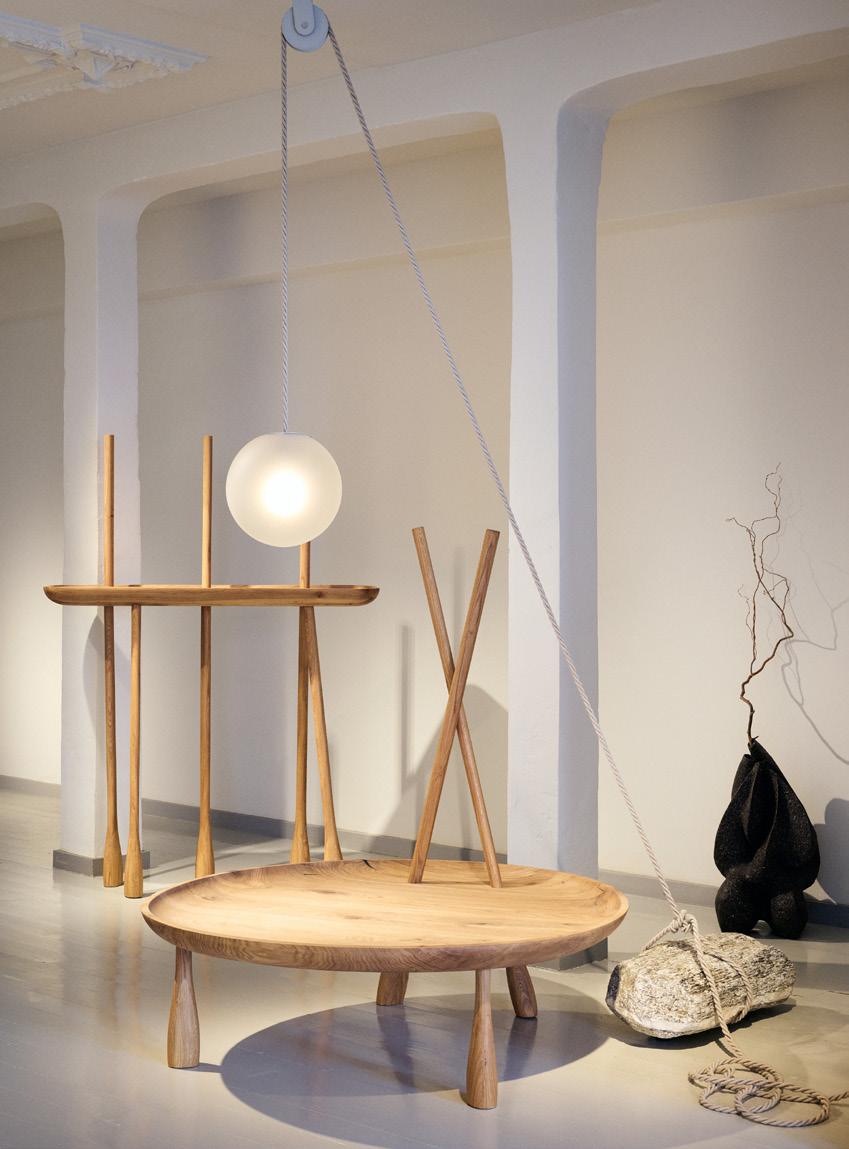
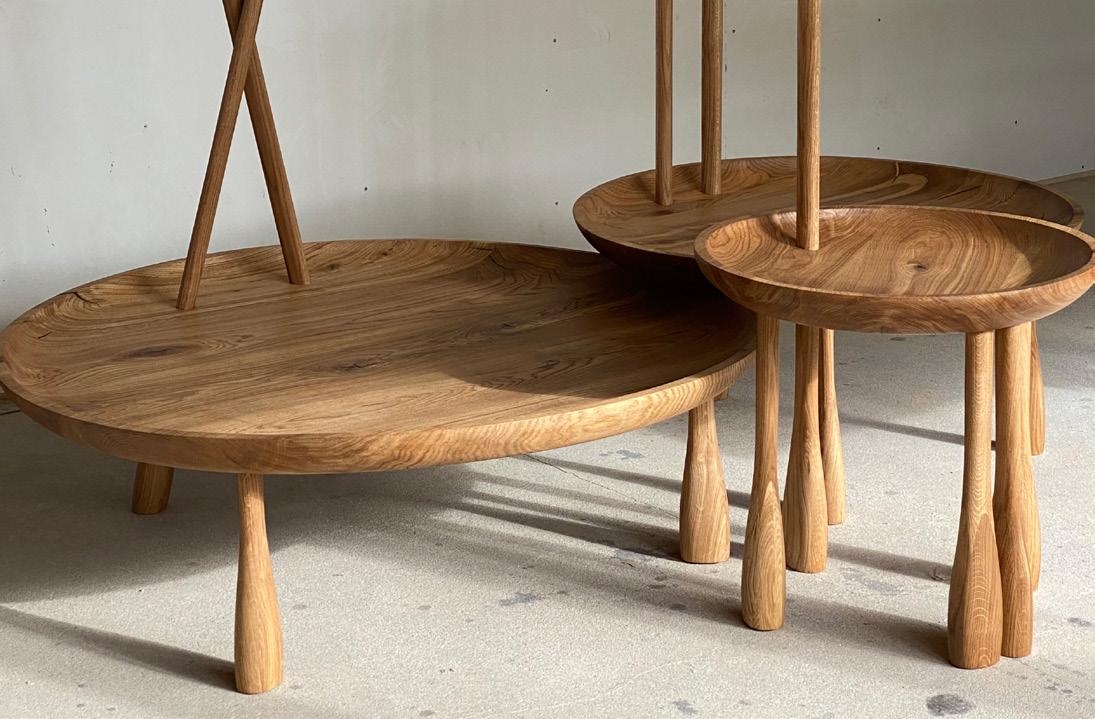
29 OLGA ENGEL | CHARLOTTE
‘Charlotte’ collection is inspired by poetic design of renowned French designer Charlotte Perriand. Minimalistic and ironic tables and consoles are made of warm oak wood.

Valery Pchelin
Valery Pchelin’s distinct approach to sculpture has been shaped by his early experience as a carpenter: different pieces of wood are assembled to construct intriguing artworks full of emotions.
Valery conceives his sculptures to physically capture the various feelings that surround him as the artist while also evoking an emotional response from the viewer. To him, the language of sculpture is unmatched by any other art forms: sculptures possess weight and texture, they are contoured by light and project innumerable shadows.
With his Drifters collection, Valery has created a range of extraordinary characters who are cast in a state of extreme emotions. They are placed in a realm of perpetual conflict between the spiritual and the material, between good and evil. Such a state is an eternal pursuit with no eventual results.
Valery’s works are in the collection of the State Russian Museum and the number of private collections in the Netherlands, Germany, Switzerland, Argentina, Russia, Sweden and Austria.
31
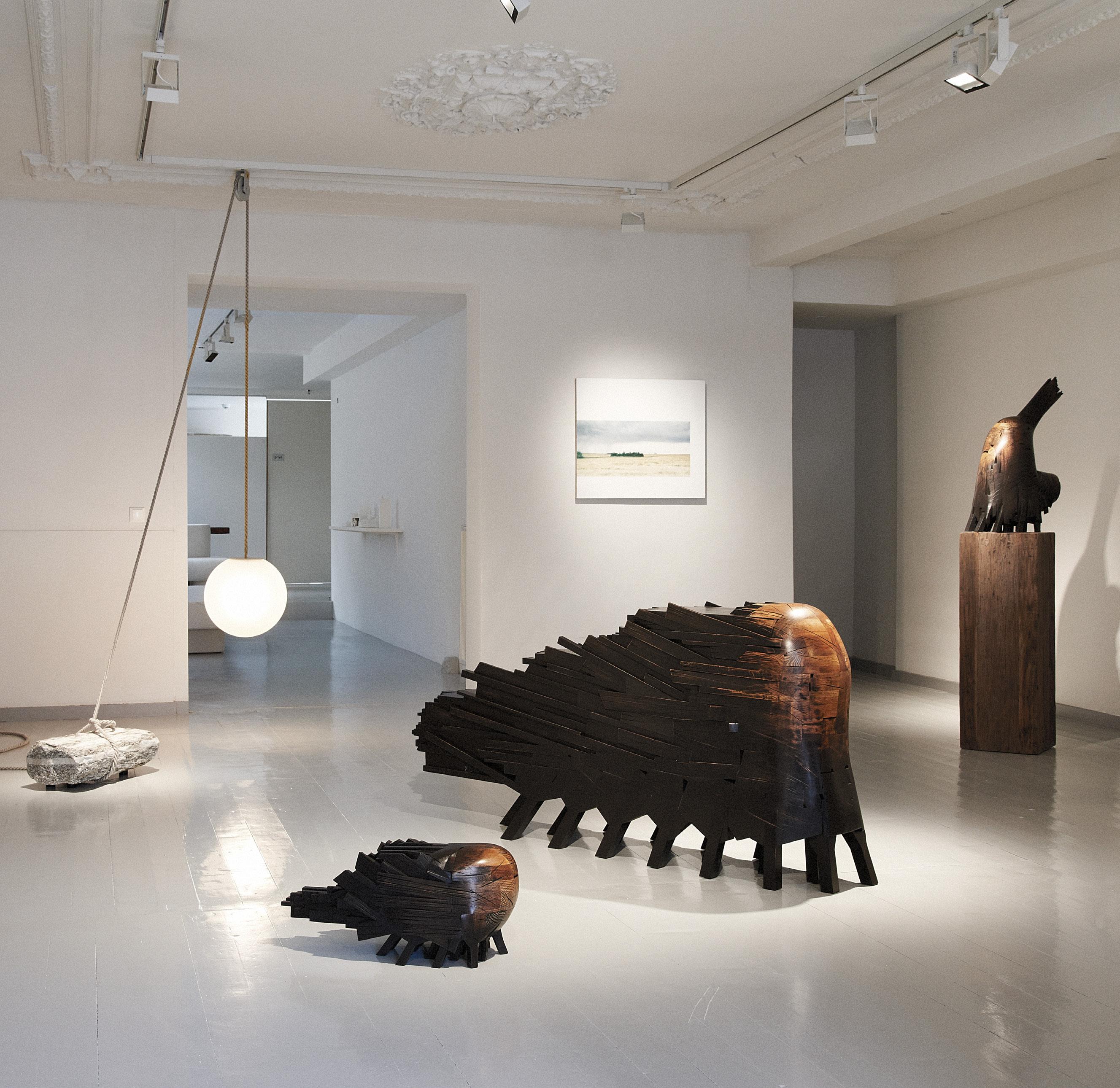
32 VALERY PCHELIN | DRIFTER
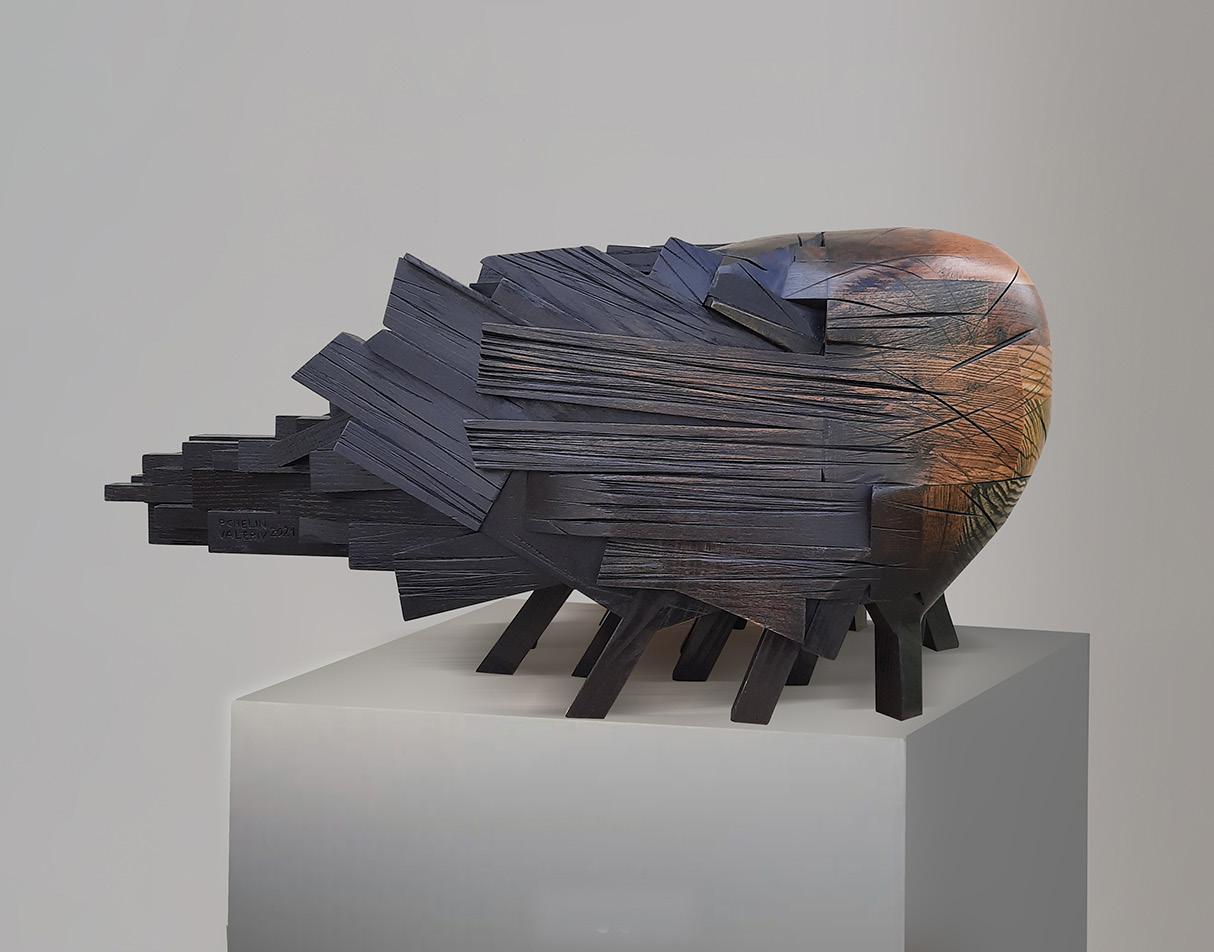
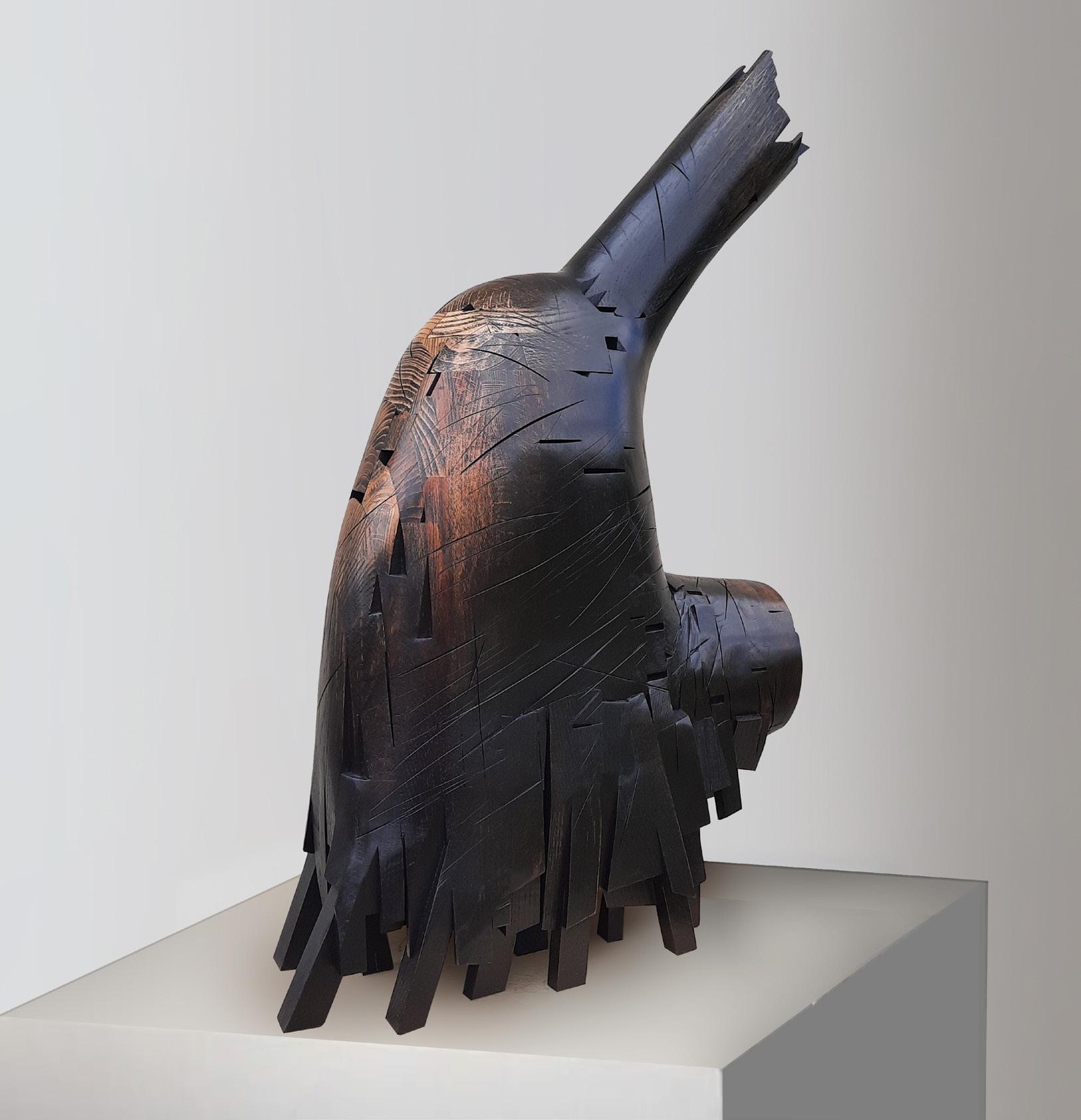
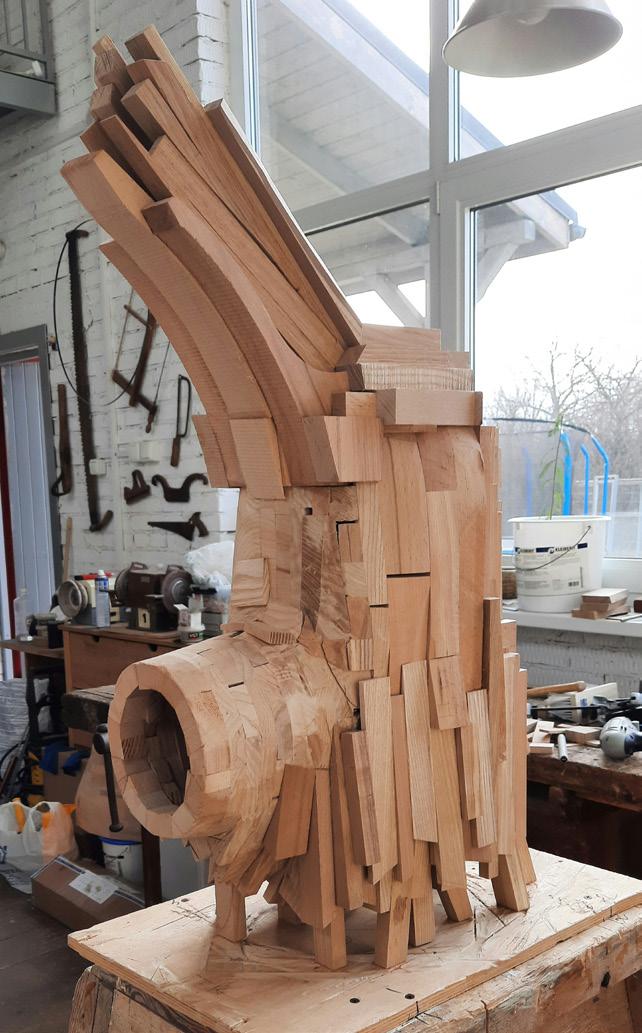
33 VALERY PCHELIN | DRIFTER
Wooden sculpture ‘Drifter’. Limited edition
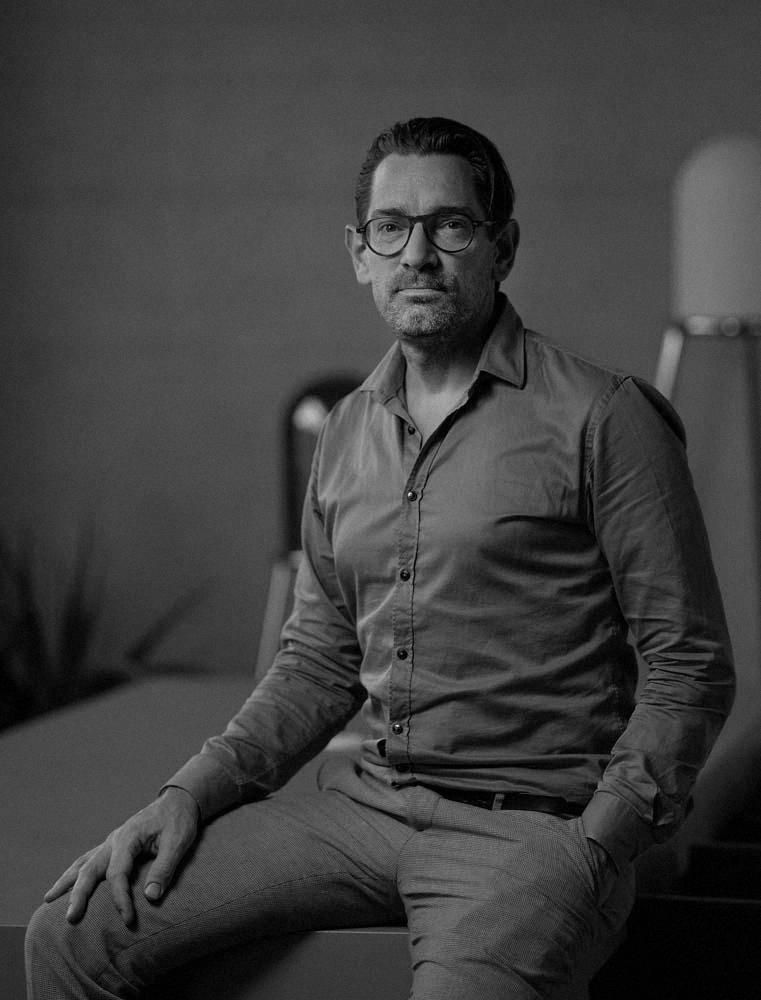
Jesse Visser
Jesse Visser is a Dutch designer, graduate of the Utrecht School of Product Design and the Piet Zwart Institute. Jesse is an industrial designer creating furniture and light objects which were ac-knowledged with several international design awards.
The gallery presents an artistic collection by Jesse Visser called “Beacon of Light”. Born as a search of tranquility and balance the Beacon is a combination of wandering and holding energies. Each object has a unique boulder, created by nature. A sandblasted glass sphere balanced by a minimalist custom-made pulley.
The Beacon of light is a poetic functional sculpture, encouraging serenity in its viewer through its form and content. Similar to lighthouse and an anchor in the mist Beacon is the fragile point of balance or fulcrum in a world of confusion and uncertainty.
35
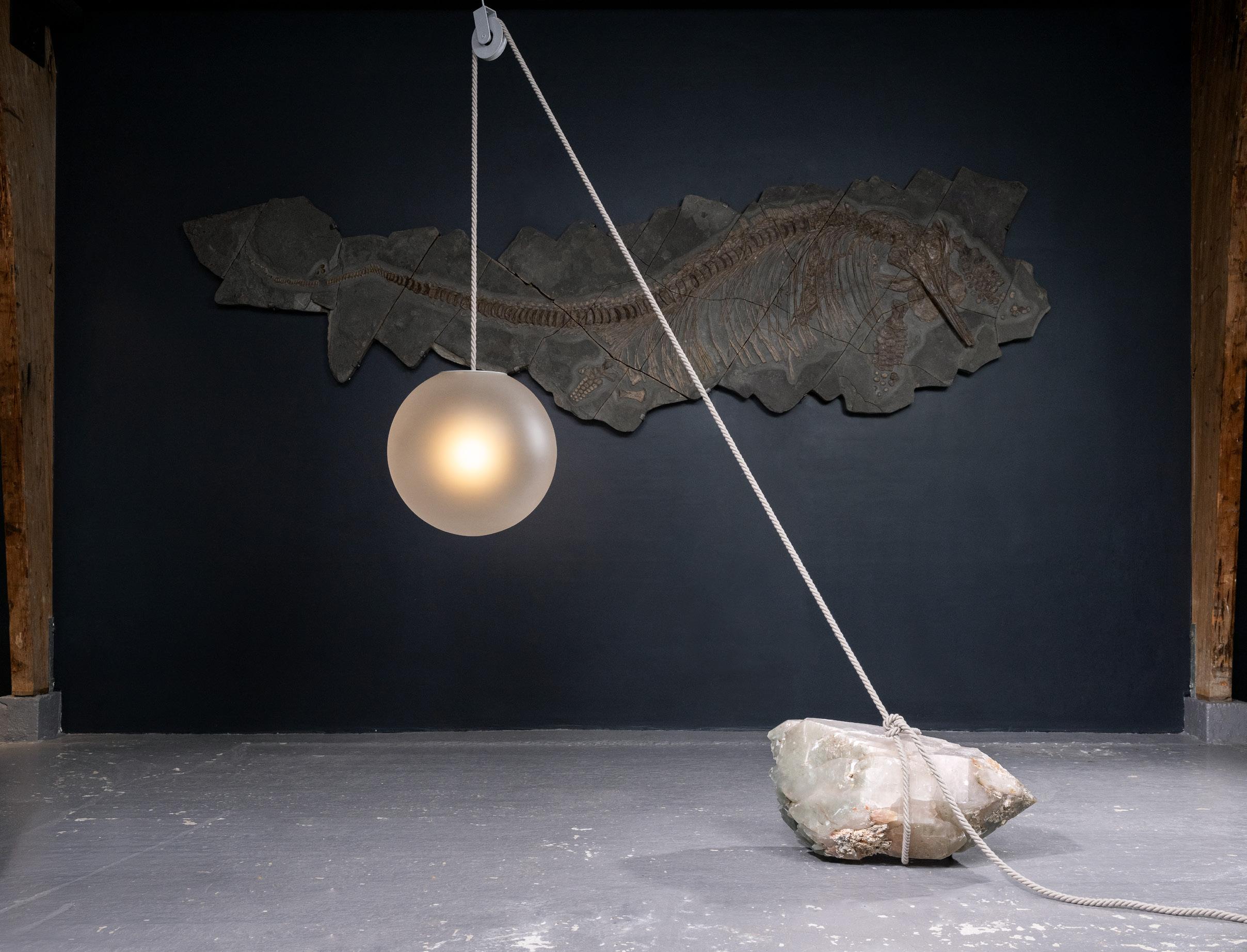
36 JESSE VISSER | BEACON OF LIGHT

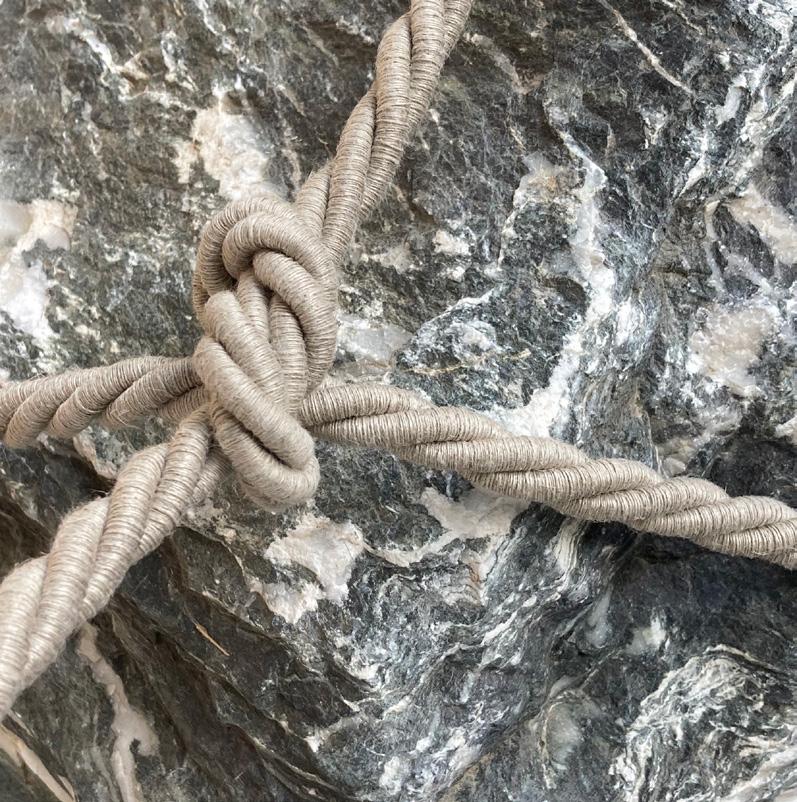
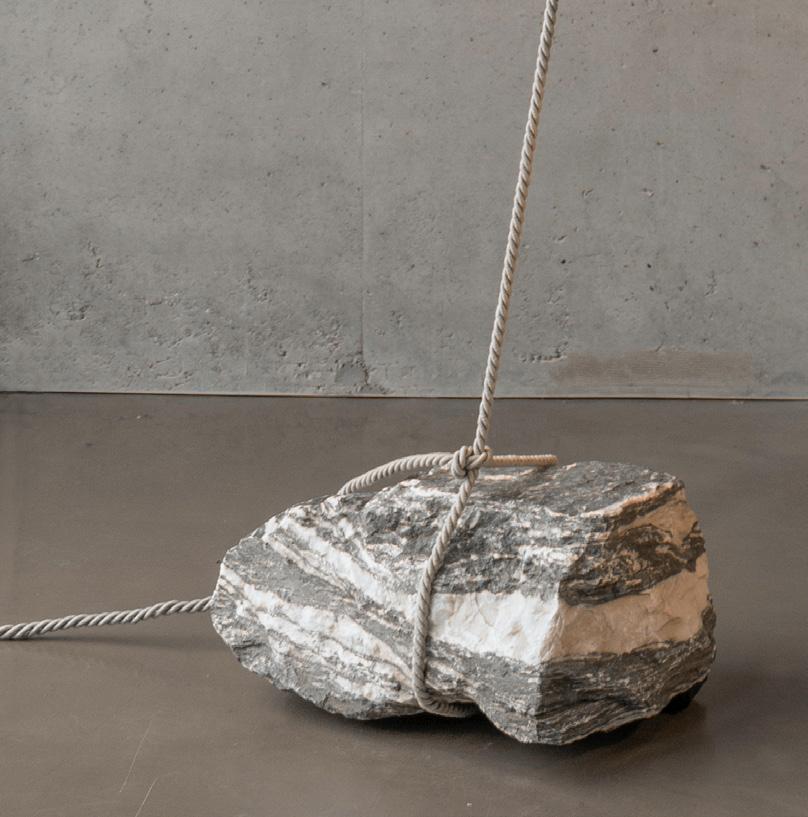
37 JESSE VISSER | BEACON OF LIGHT
‘Beacon of light’, matt glass ball, jute rope, unique bolder. Limited edition
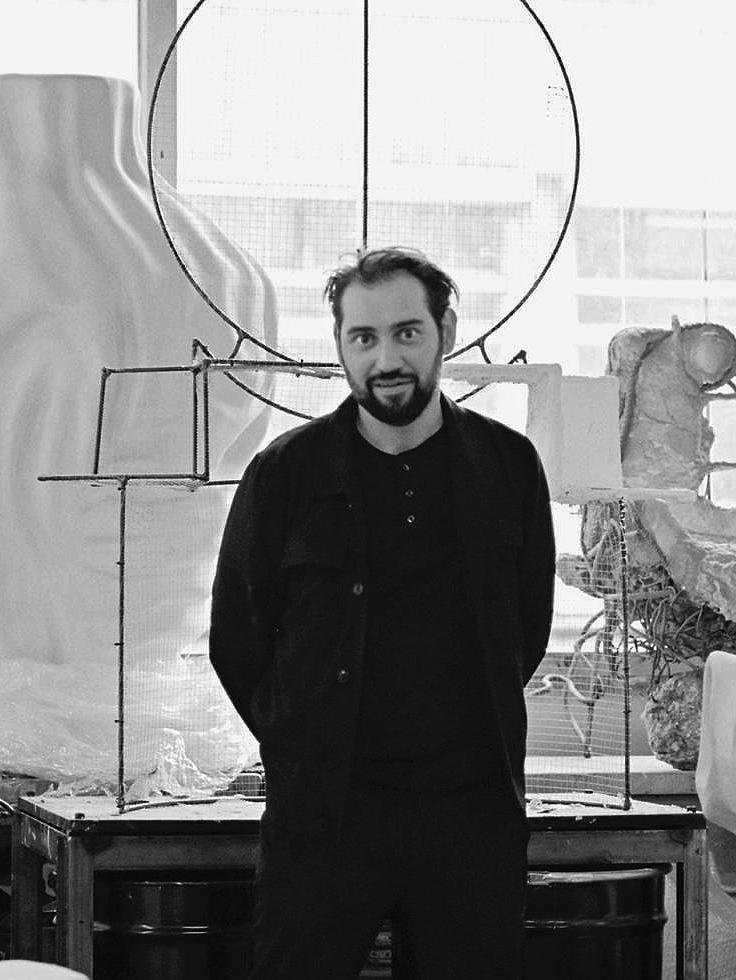
Jordan van der Ven
Jordan van der Ven aka JORDAN ARTISAN is a Dutch designer from Nijmegen, the Netherlands. Starting his education as a carpenter, Jordan graduated from Akademie St. Joost, Breda in 2005. After experimenting he has found an innovative way of using construction materials to give them new aesthetics.
Mia Karlova Galerie presents ‘Curved Sculptures’ collection by Jordan van der Ven.
The process of designing it is art-based: starting by draw-ing in rebar metal to construct and contemplate curves and crossing lines of the framework composition. Then transforming it by applying layers of white cement to create volume and softness. Jordan’s work is a vivid articulation of “functional sculpture” - an object on the edge of contemporary art and design.
39
ment, mixed media, matt laсqueк. Limited edition
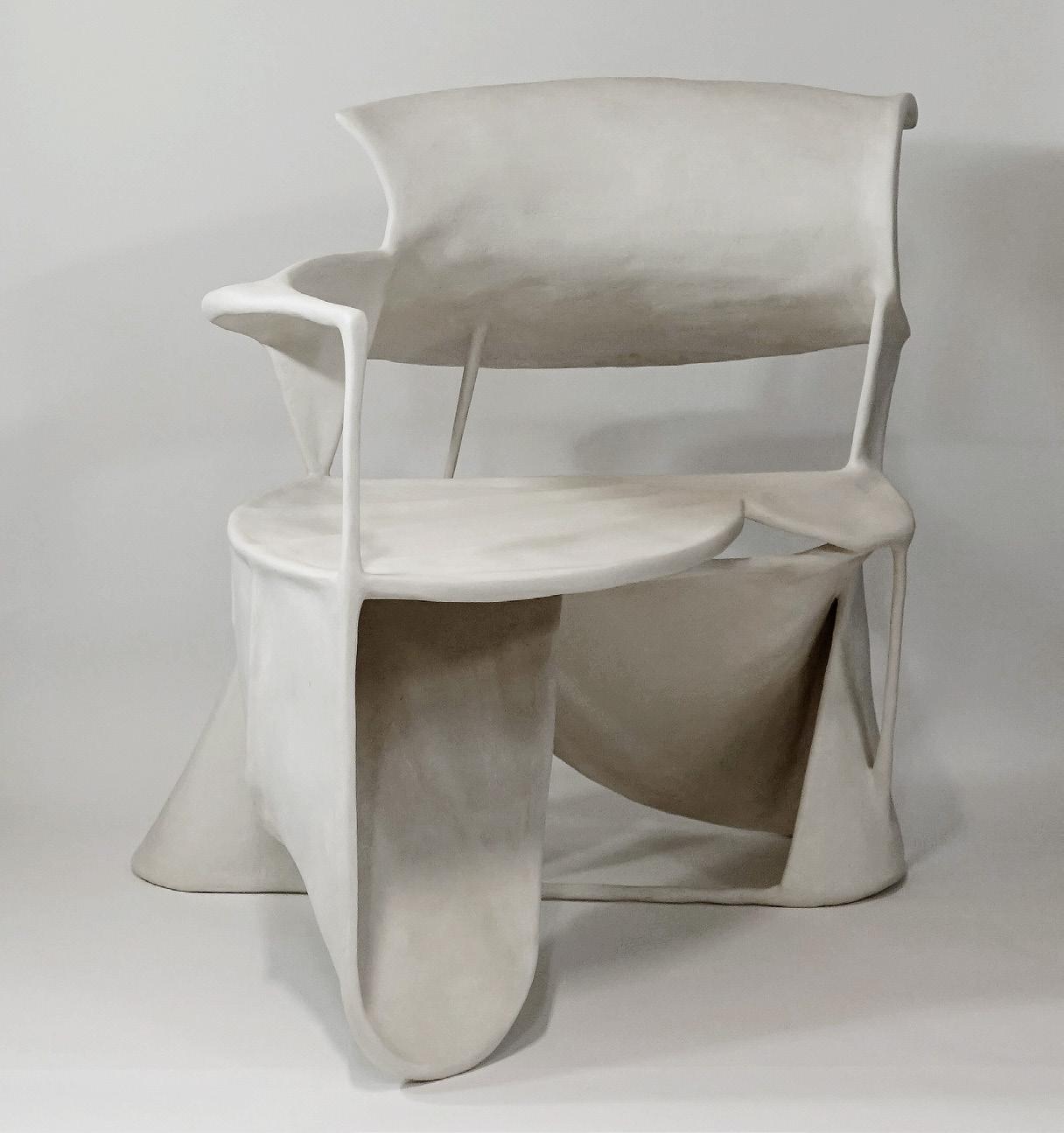
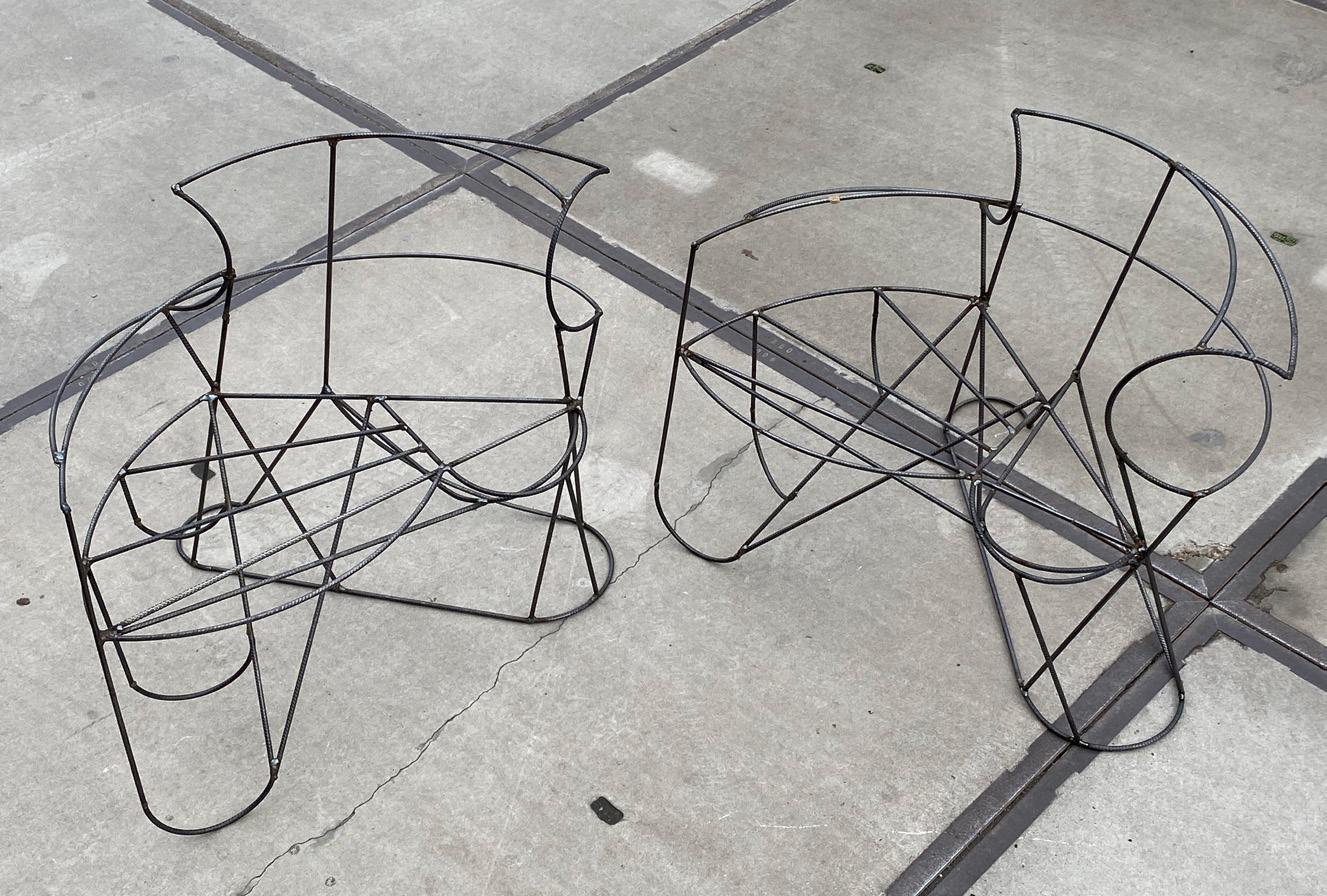
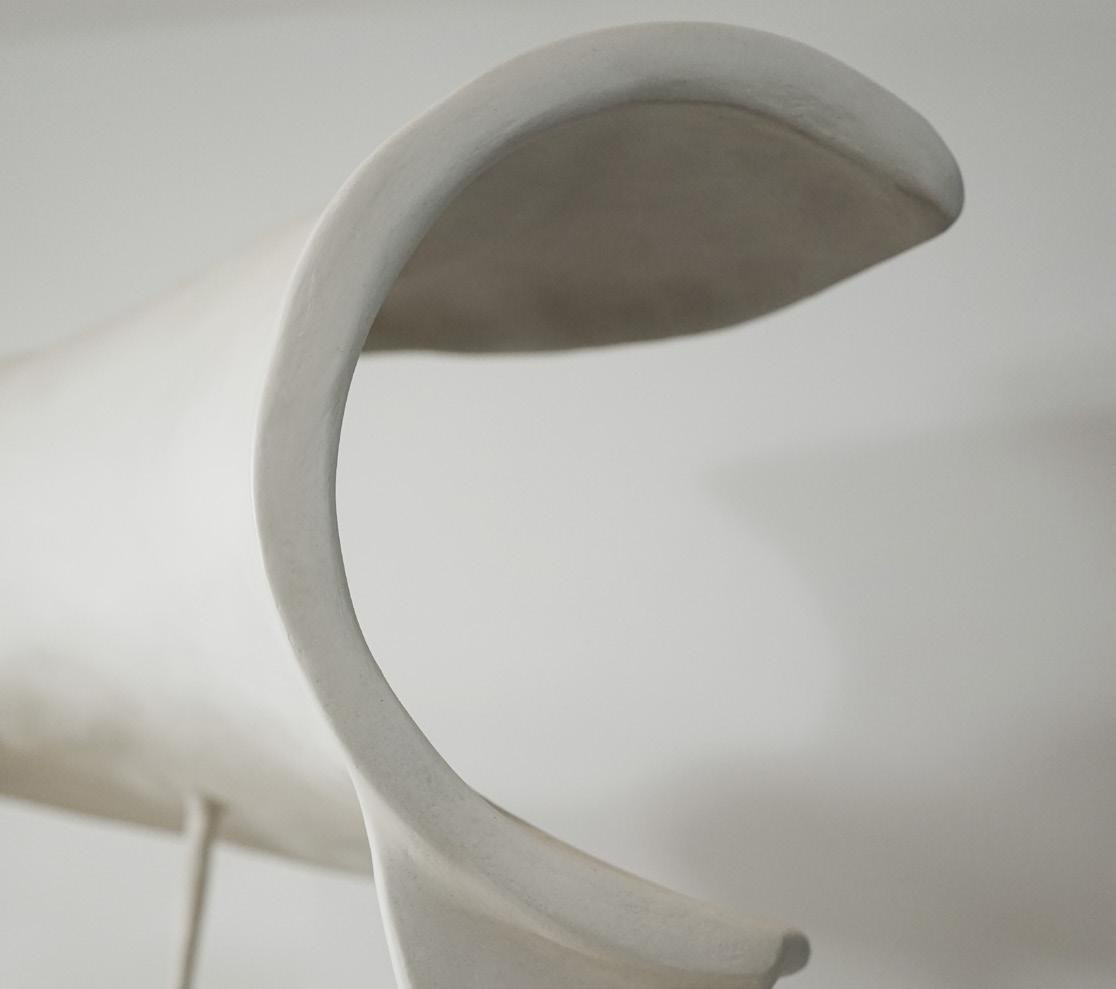
40 JORDAN VAN DER VEN | SCULPTURAL CHAIR
’Curved Sculptures’ chair, rebar, ce-
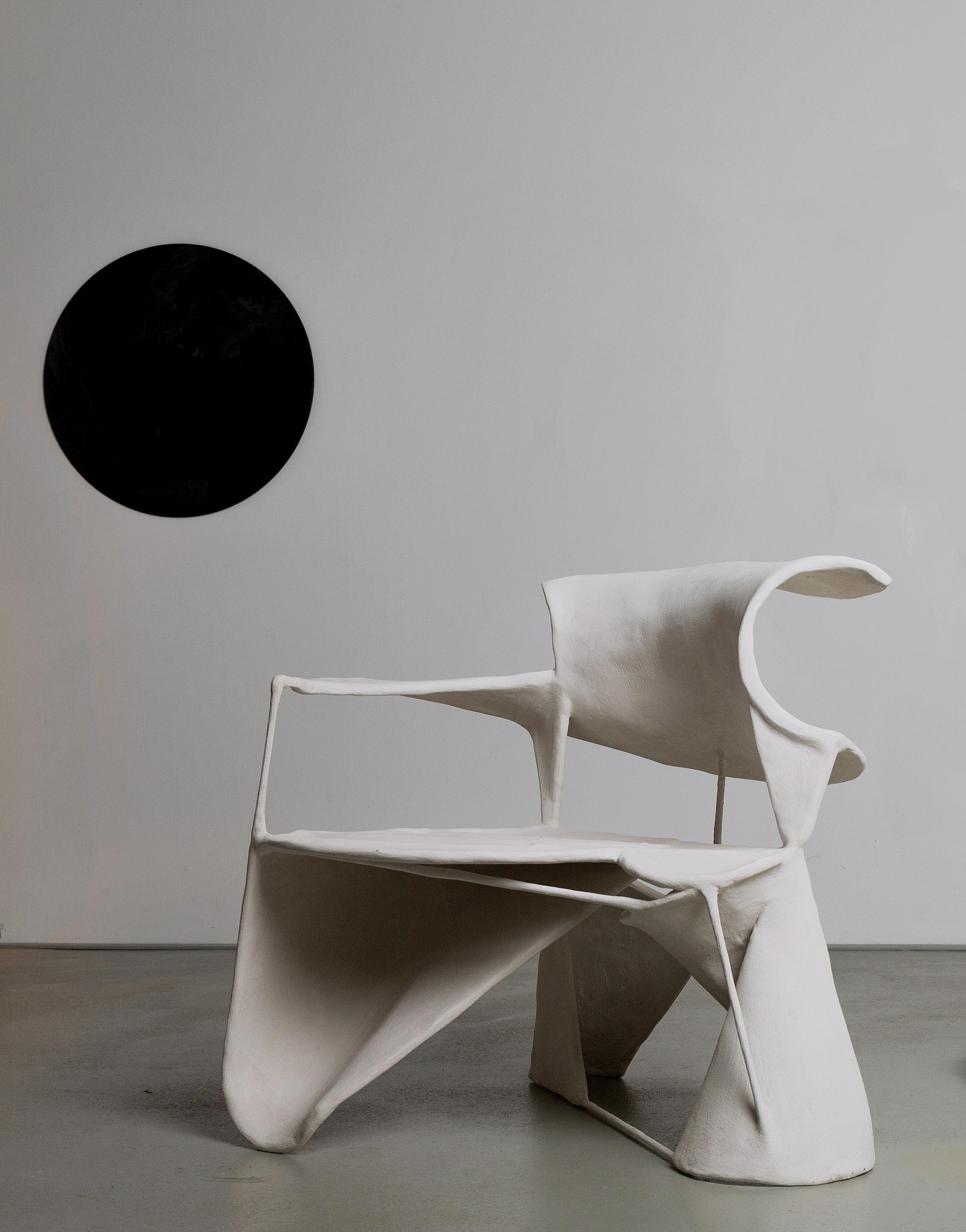
41 JORDAN VAN DER VEN | SCULPTURAL CHAIR
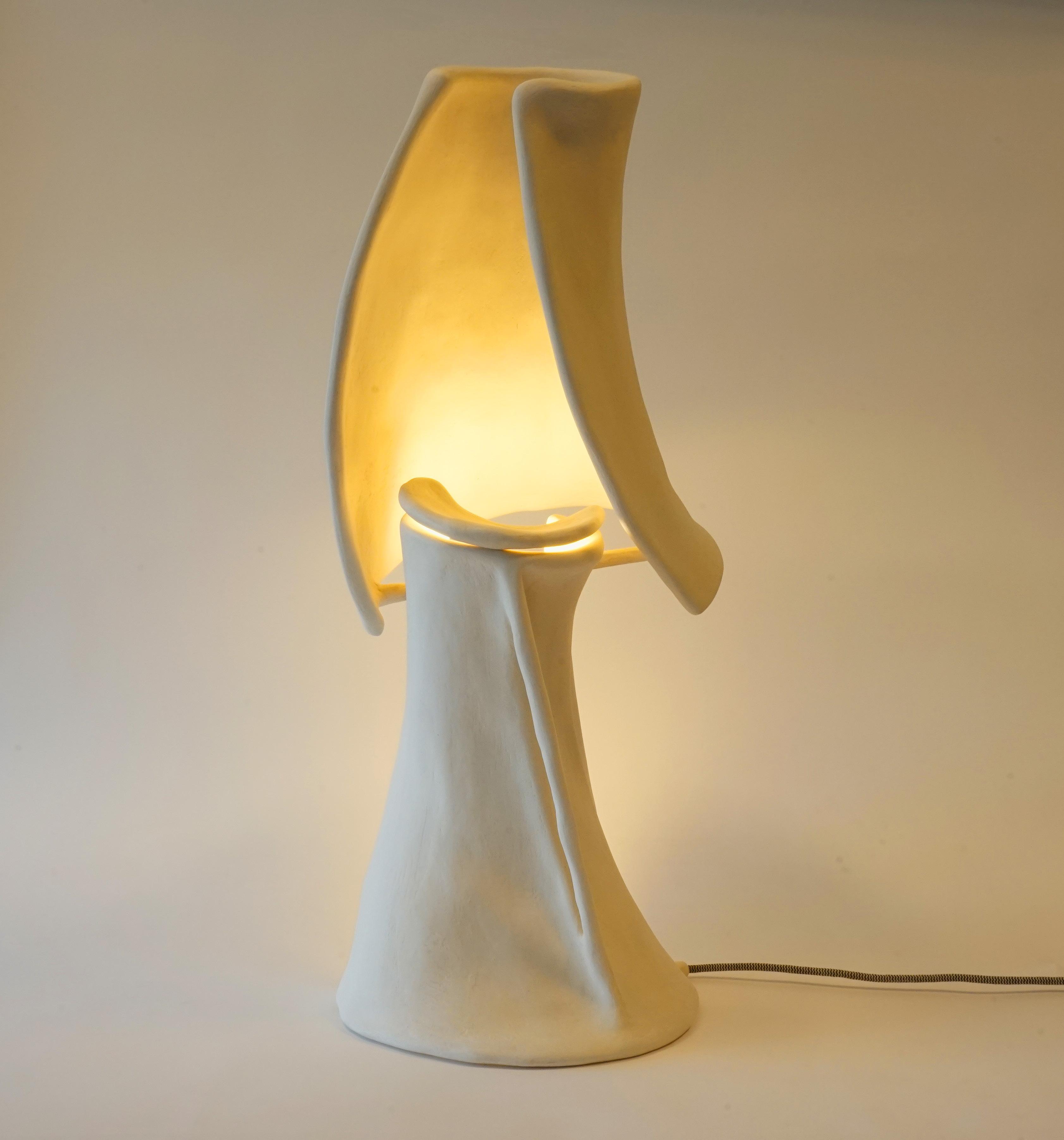
42 JORDAN VAN DER VEN |
LAMP
SCULPTURAL
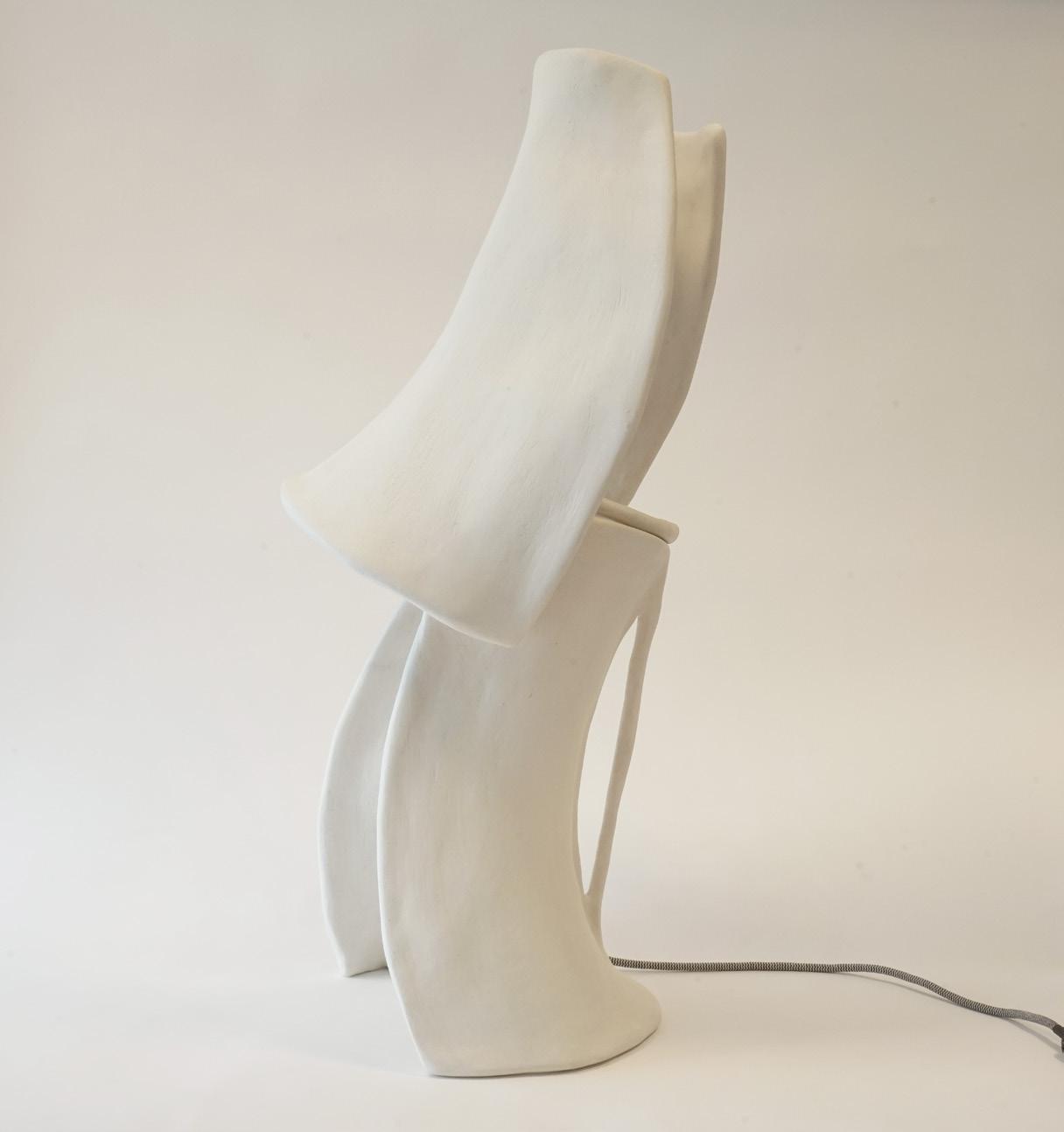
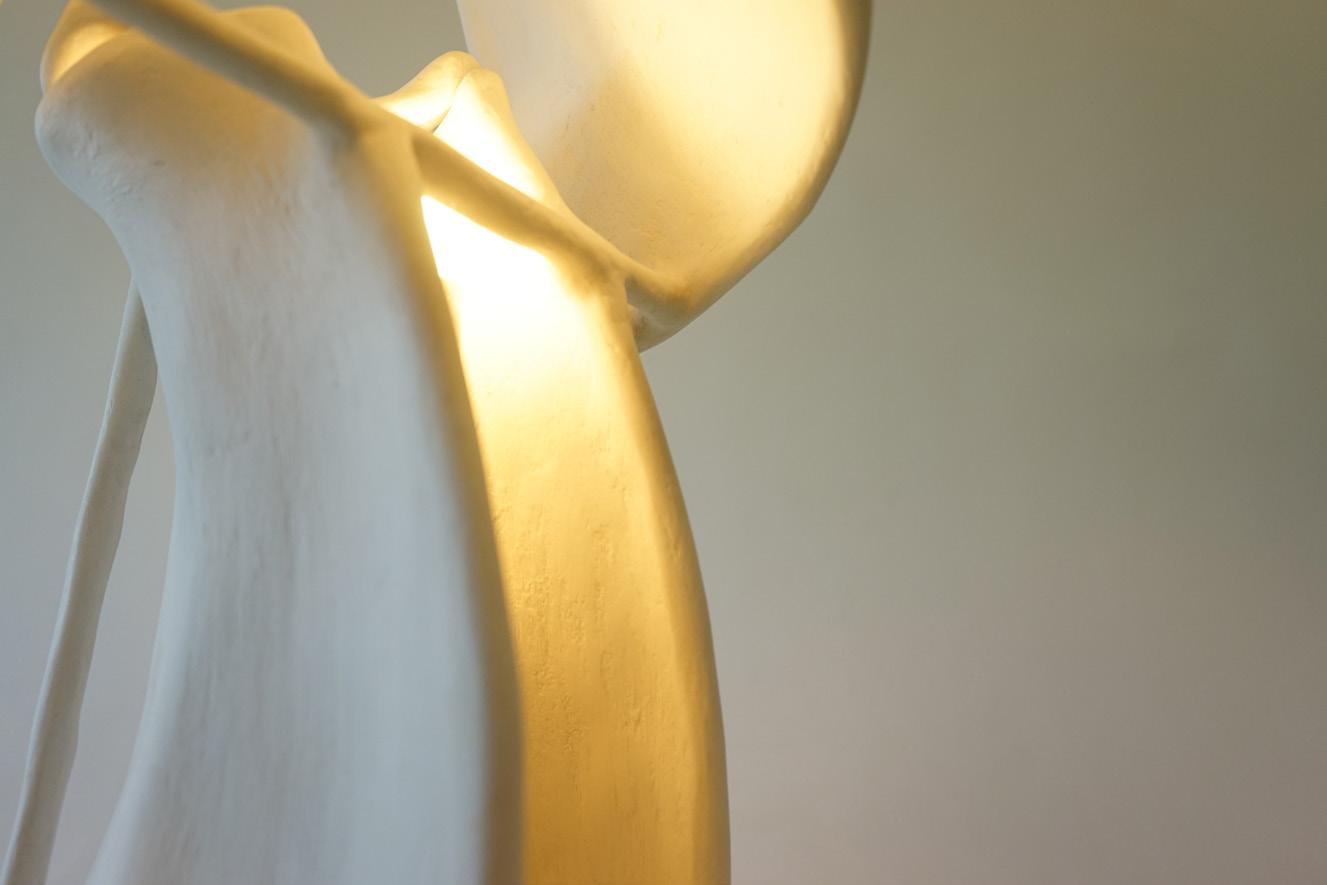
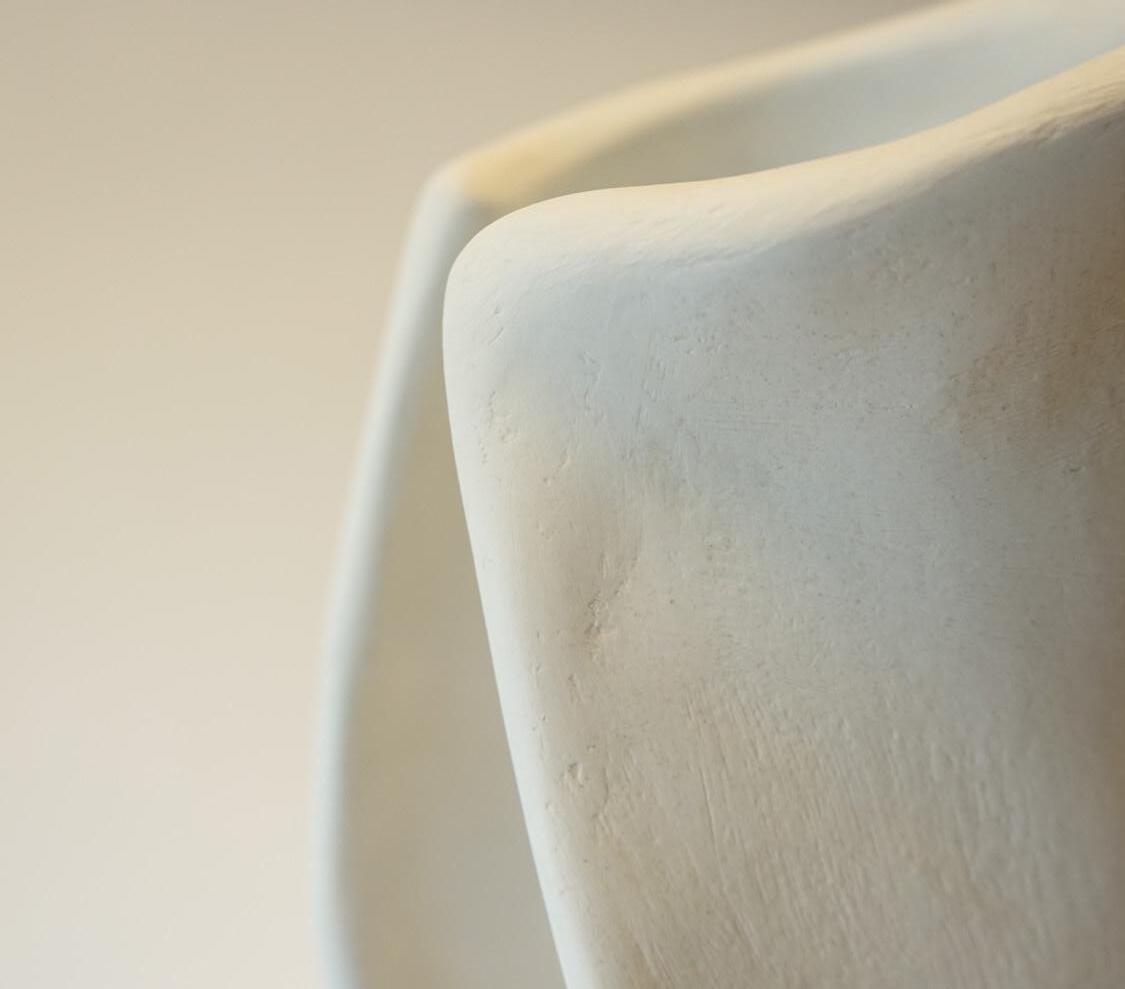
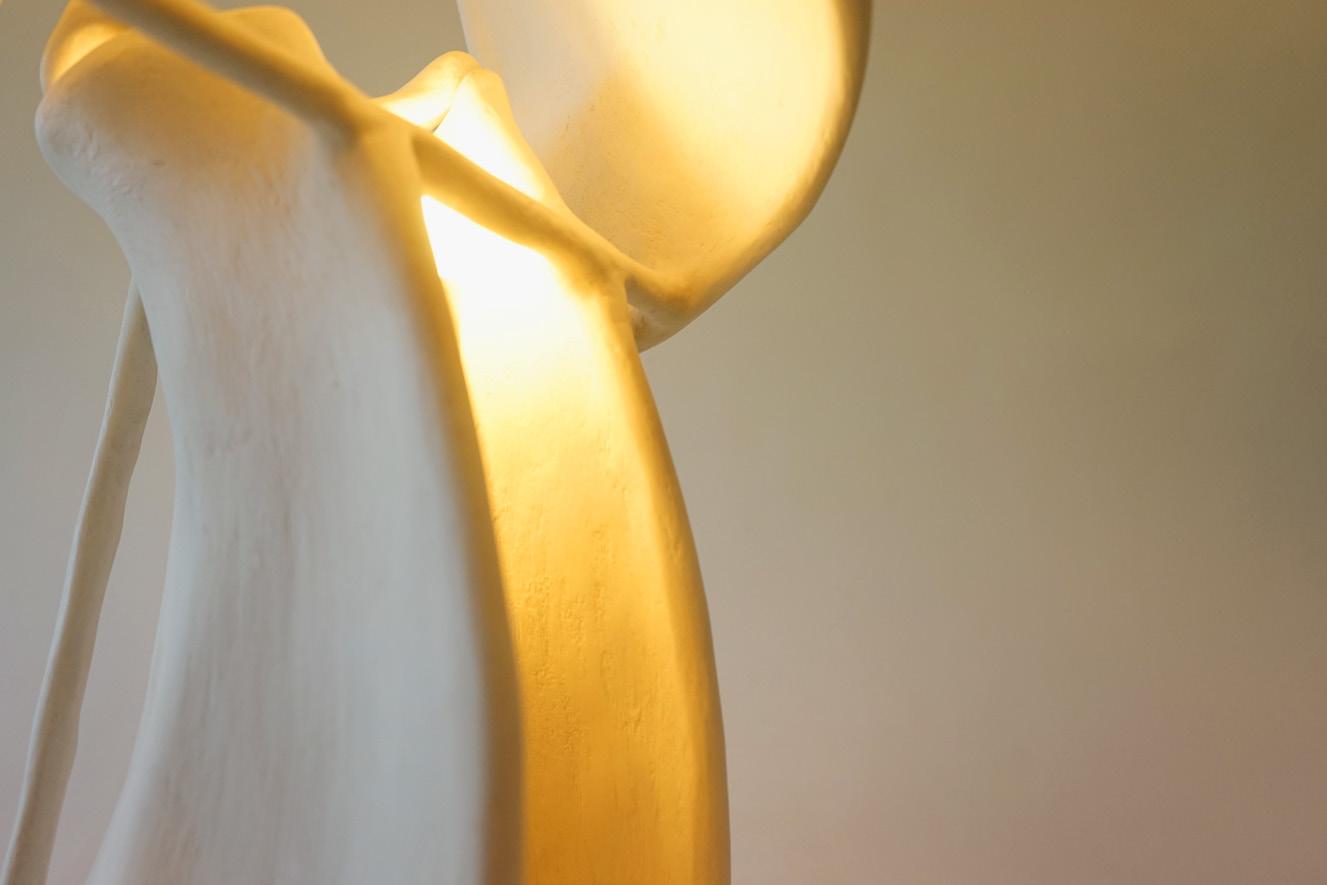
43 JORDAN VAN DER VEN | SCULPTURAL LAMP
Lamp from ‘Curved Sculpters’. Limited edition
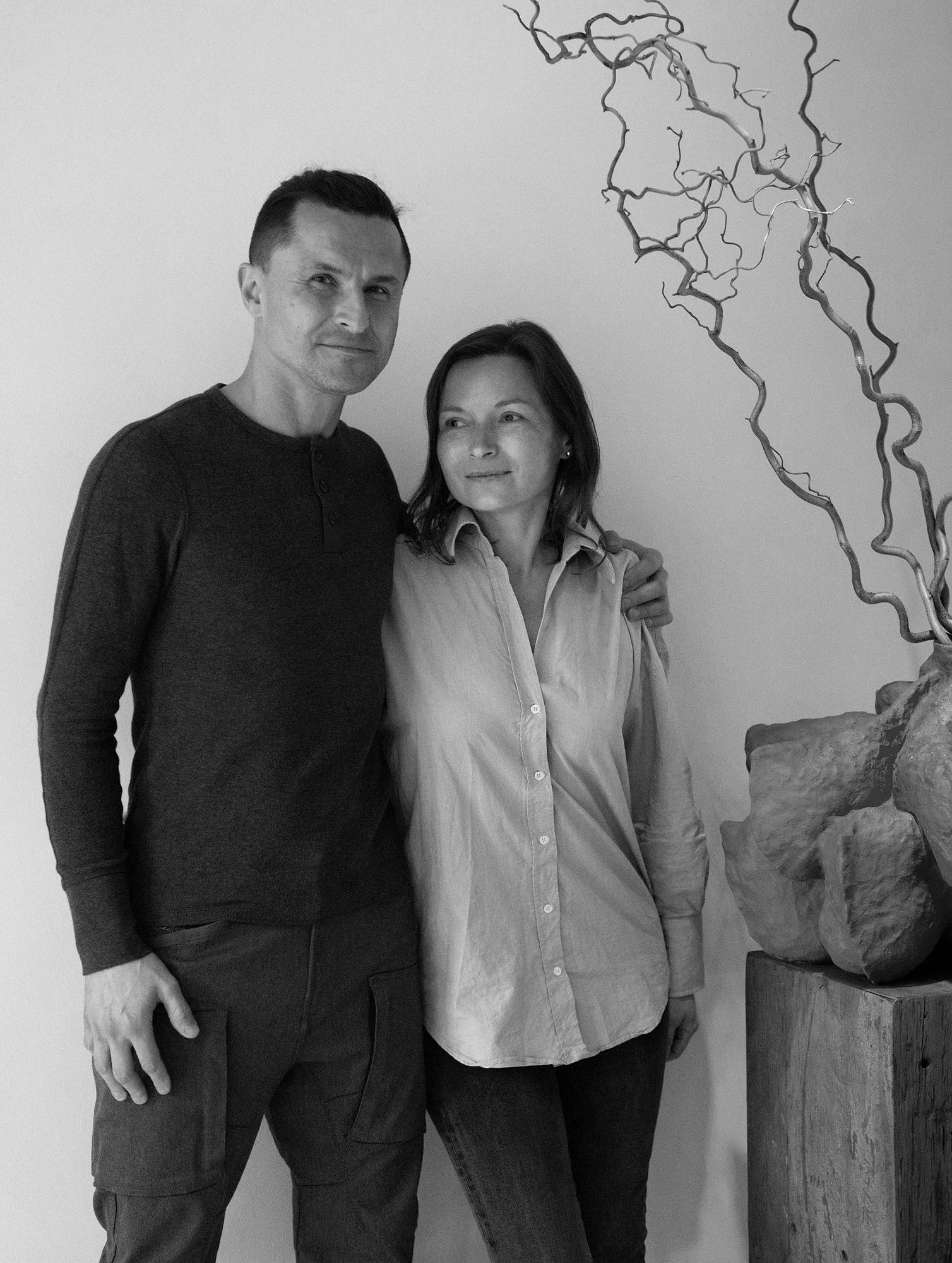
Olesya & Andriy Voznicki
Andriy and Olesya Voznicki are well established Ukranian artists. They have both graduated from Lviv Academy of Art in Ukraine, Olesya - from Art Glass department and Andriy as a sculptor. They were well known artictic studio based in the Ukranian town Uzhgorod.
Forced to recently flee their home in Ukraine and relocate to the Netherlands, Olesya and Andriy Voznicki have restarted their practice in vicinity to Amsterdam and been supported by Mia Karlova Galerie to create a new series of ceramic pieces using locally-sourced materials. Their pieces – which combine wood, clay and coal – demonstrate our innate desire to form deep connections with the natural world and the materials that surround us.
Voznicki explains: “Our practice is very much rooted in the environment in which we find ourselves at any given moment in our lives. When we arrived in Amsterdam, we visited a salvage market and found a myriad of old materials that formed the basis of our new pieces. There’s something truly magical about transforming elements that were once utilitarian into unexpected, tactile objects.’
45
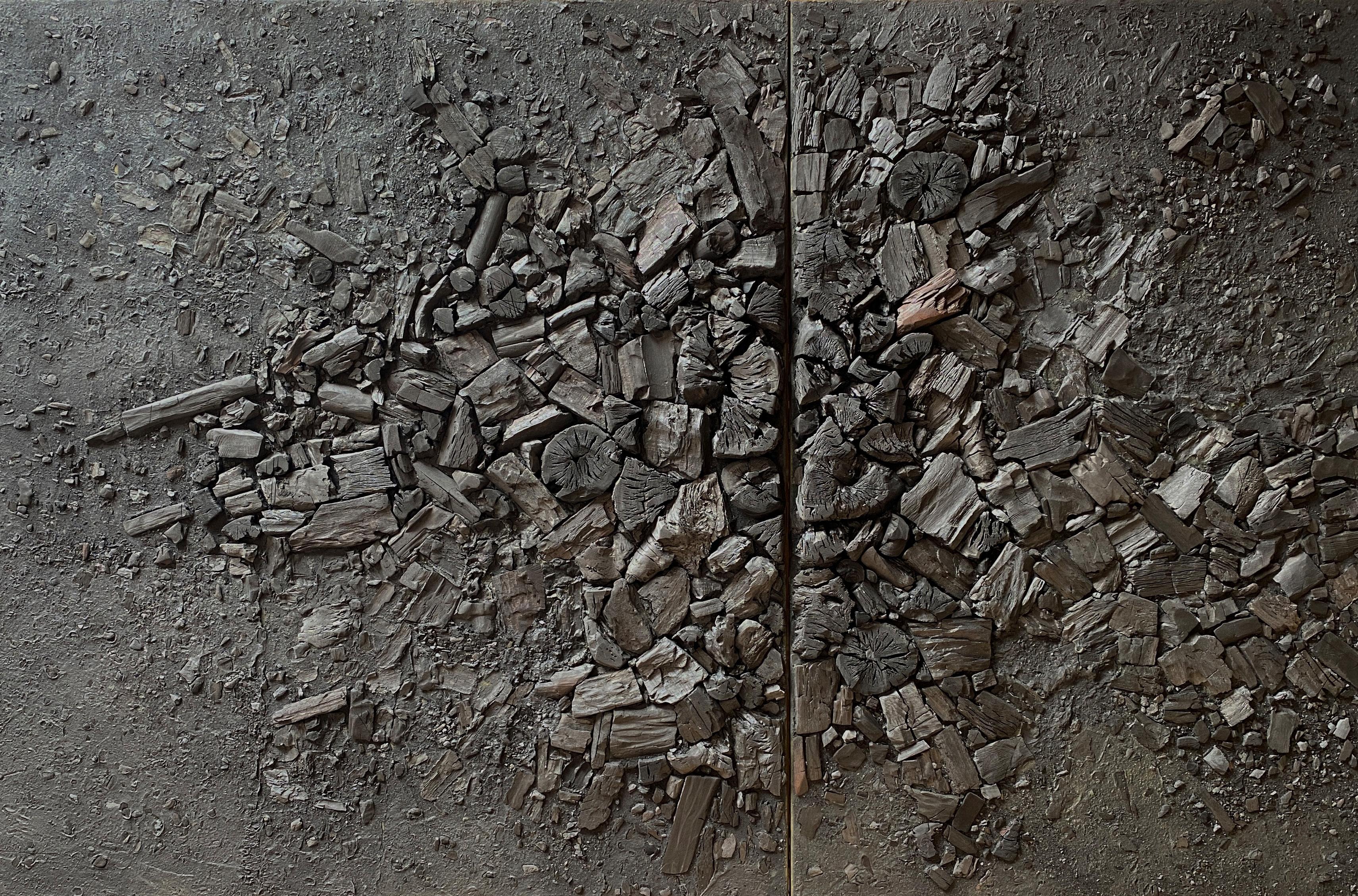
46 OLESYA & ANDRIY VOZNICKI | REBIRTH
Rebirth’ wall diptych , burnt wood, dry grasses, clay, ash on canvas; Unique
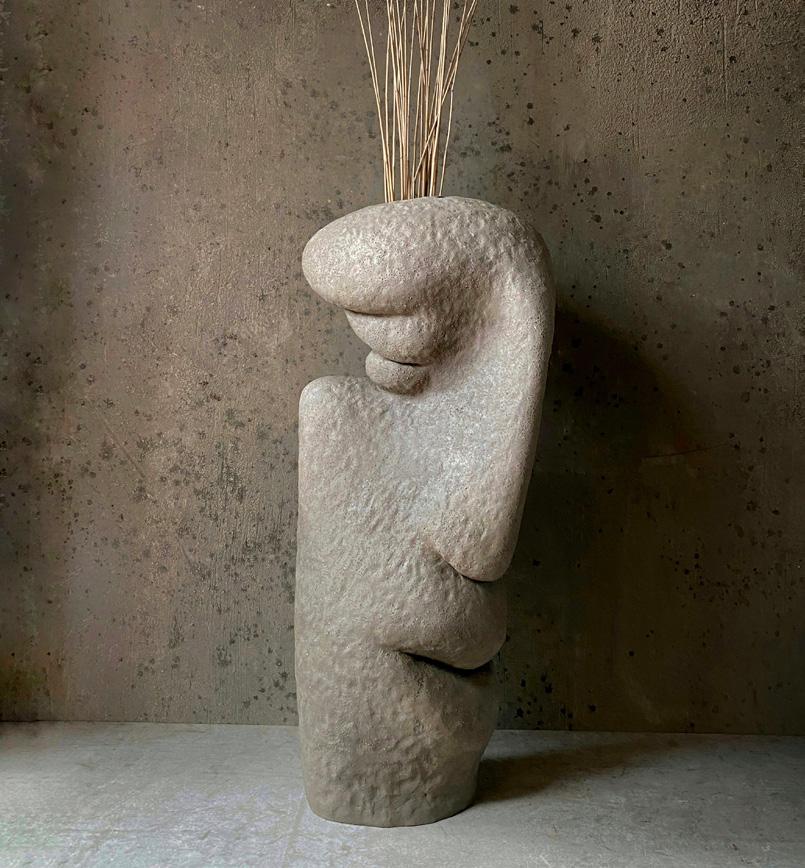
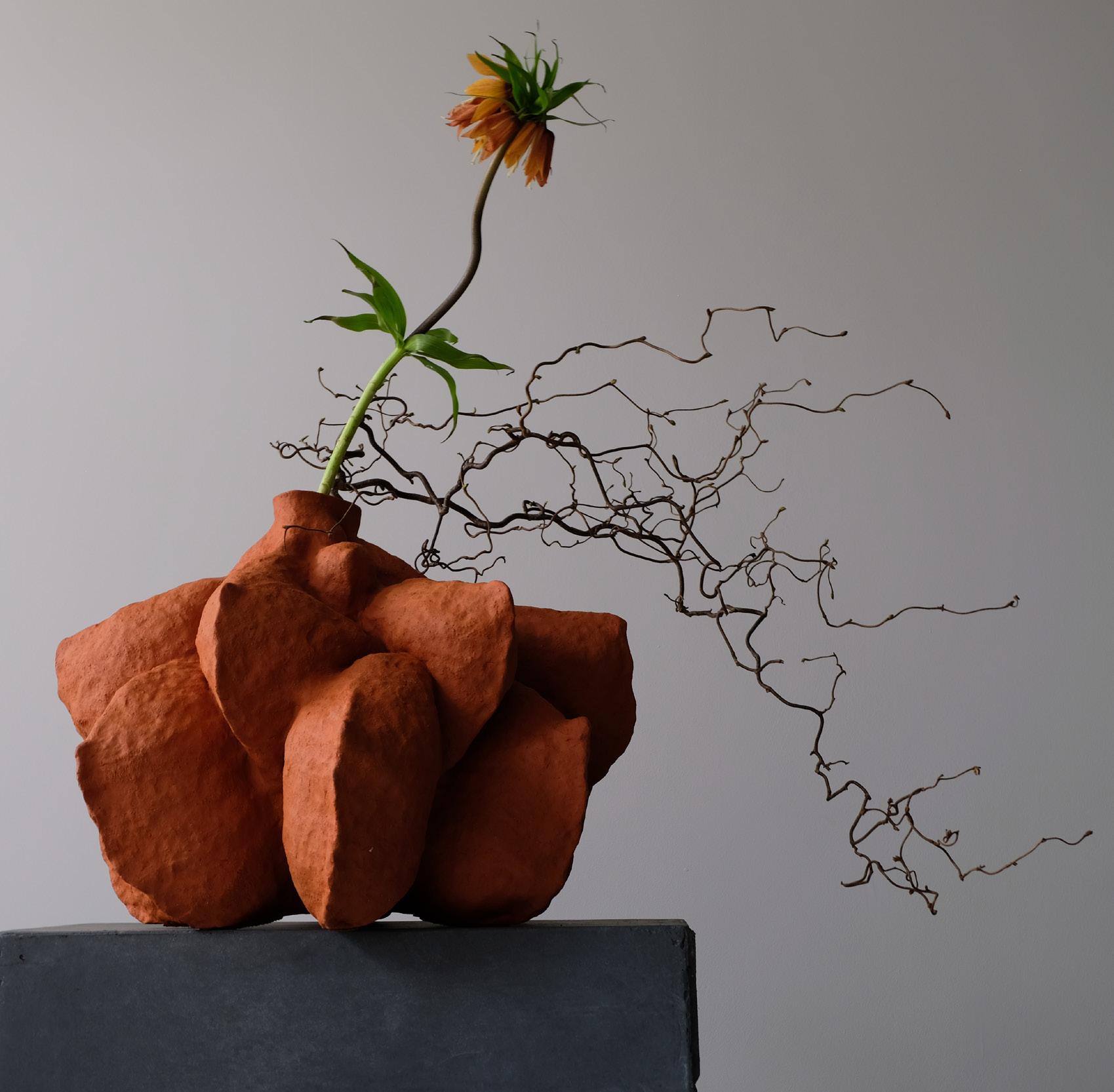
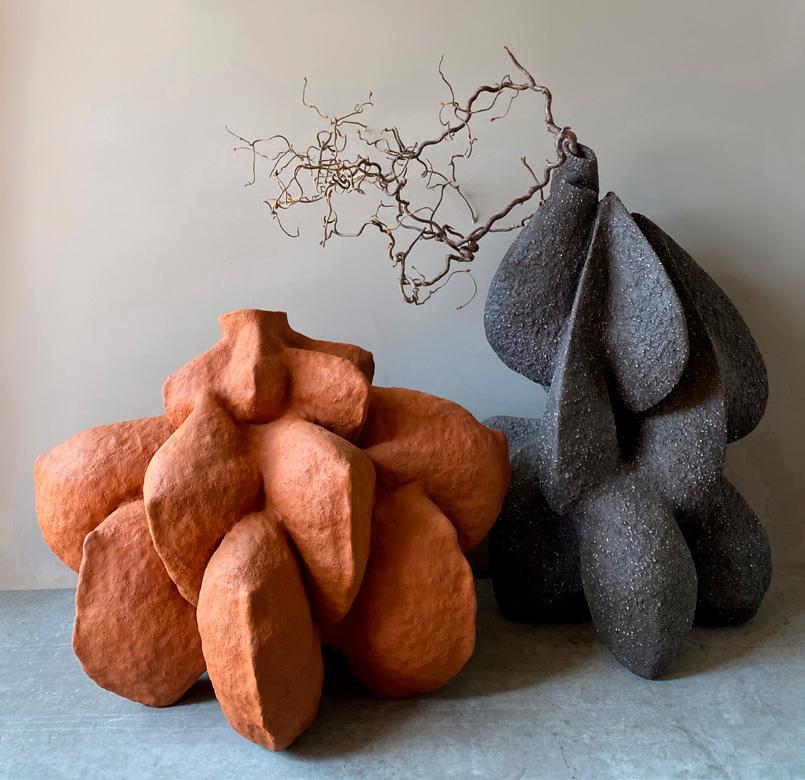
47
Voznicki combine wood, coal dry grasses and various types of clay in their practice. Terracotta and chamotte vases. Unique objects
OLESYA & ANDRIY VOZNICKI | MAMA, NEOLITHIC, FACE
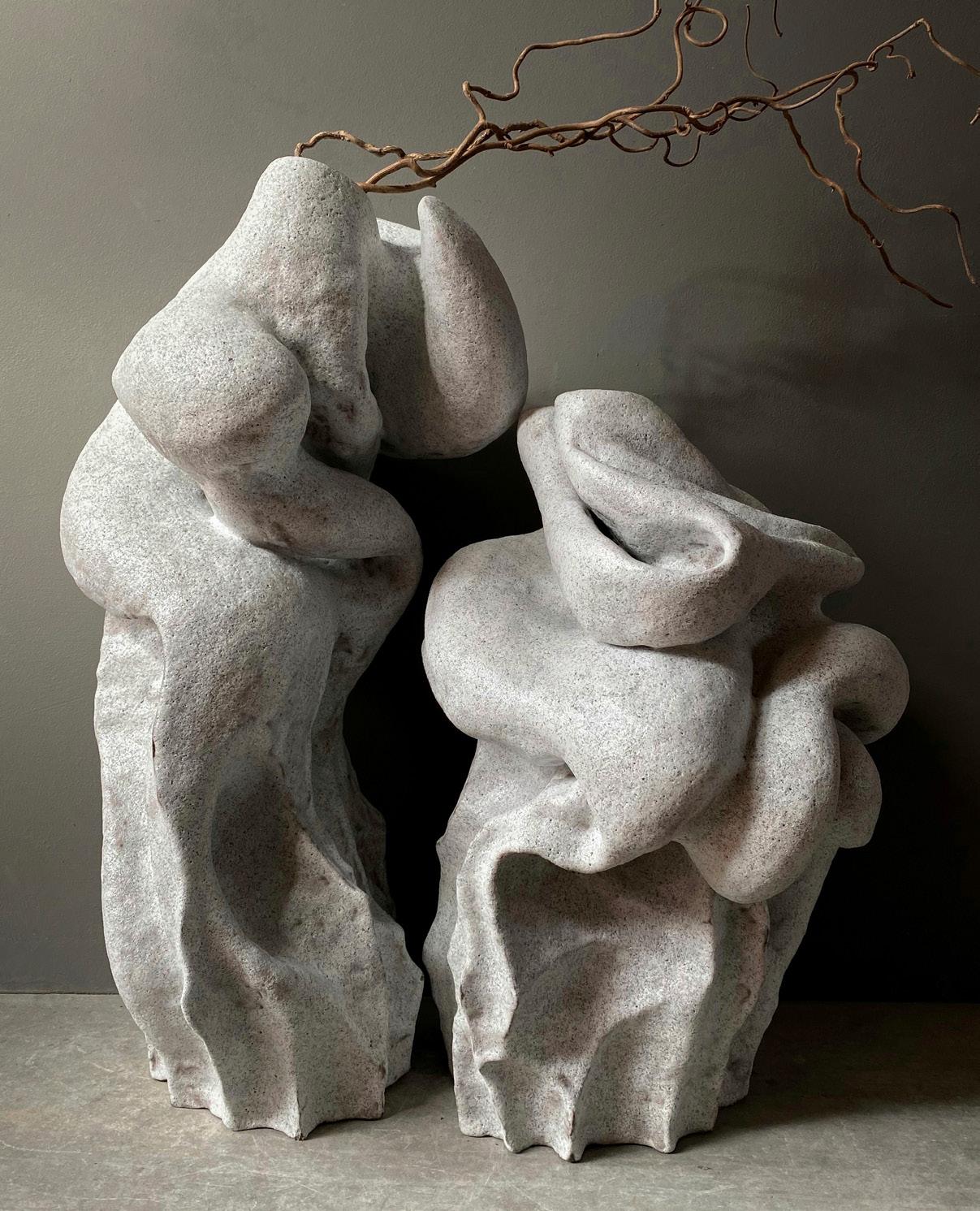
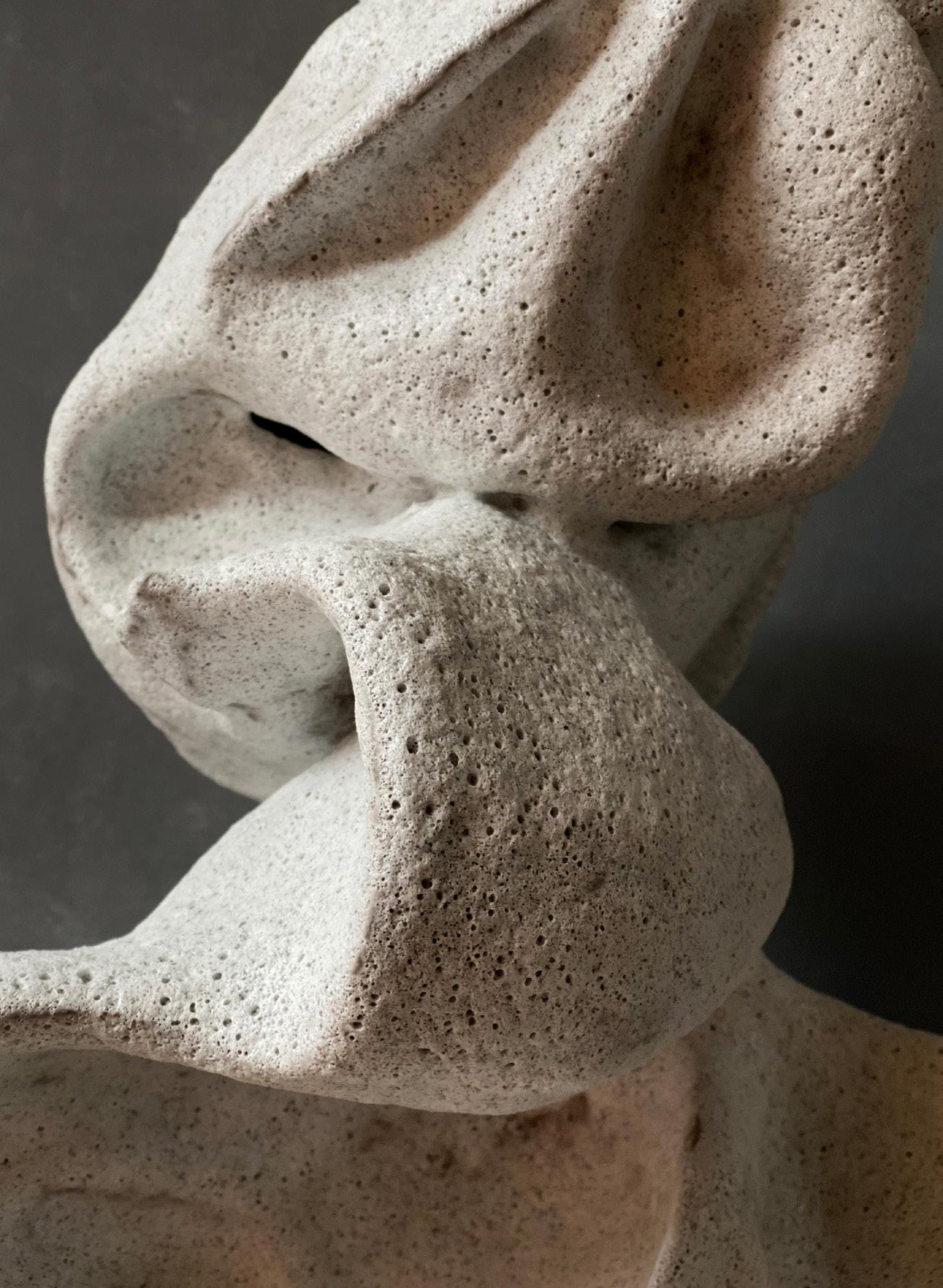
48
‘Ephemeral’ series of vases. Chamotte, matt glazing.
OLESYA & ANDRIY VOZNICKI | EPHEMERAL
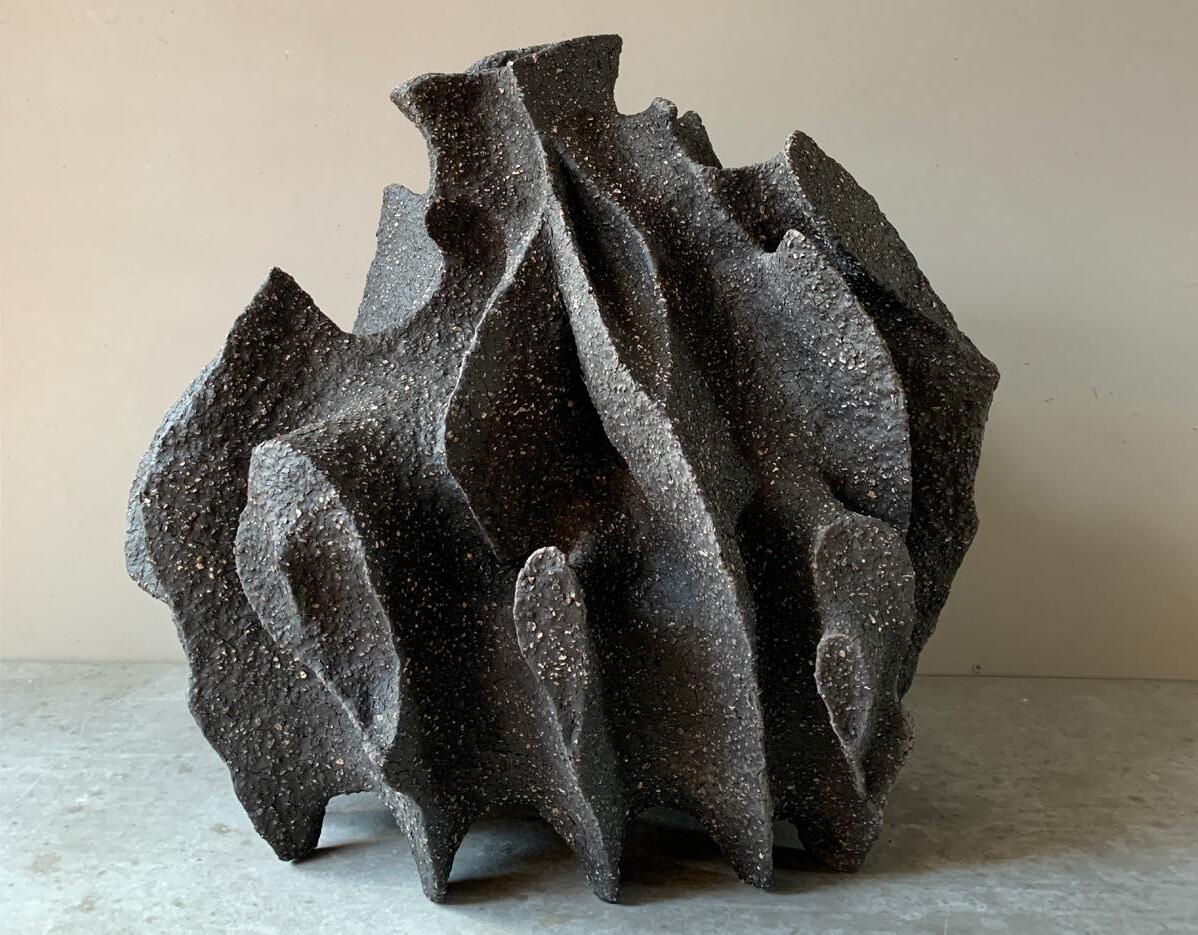
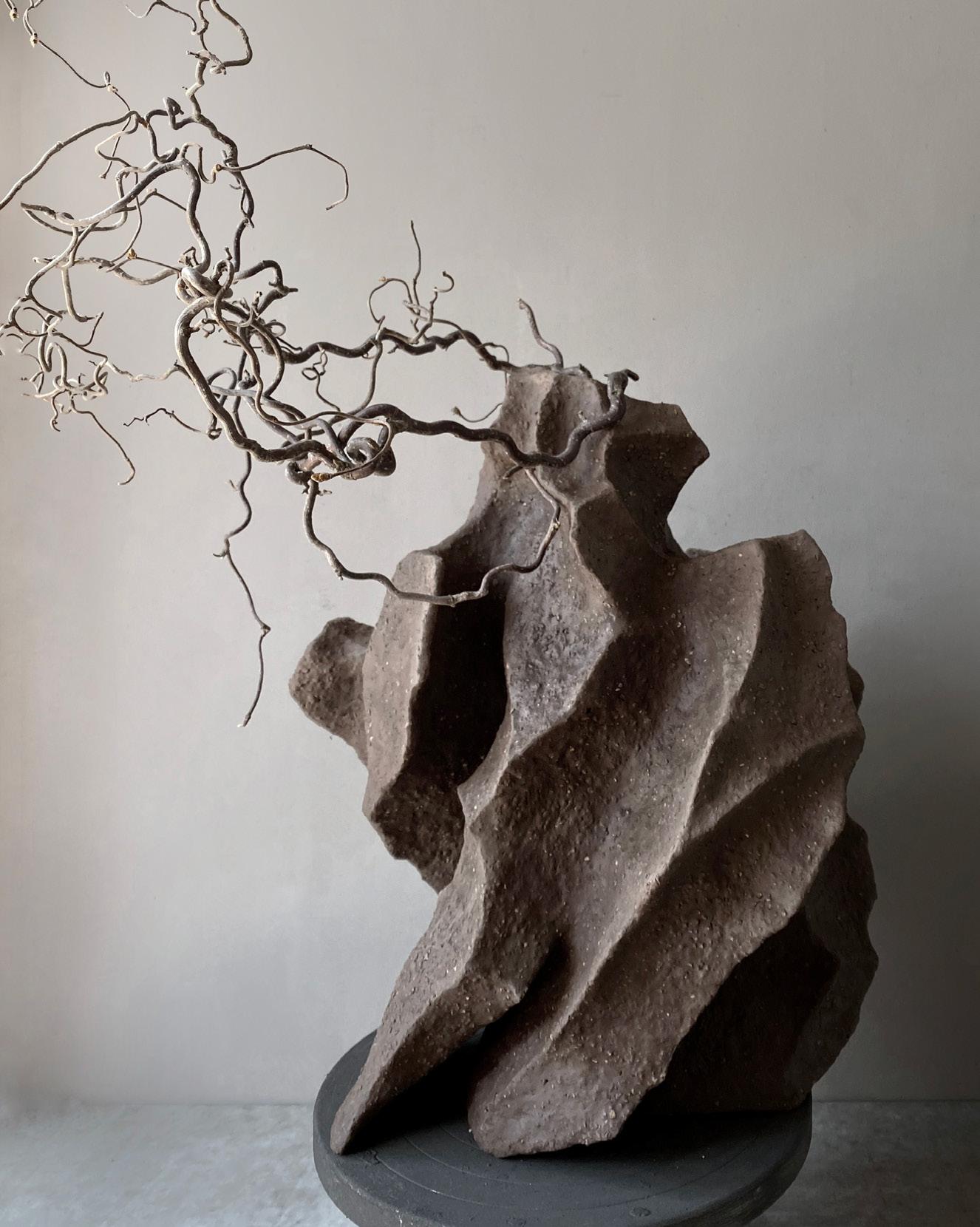
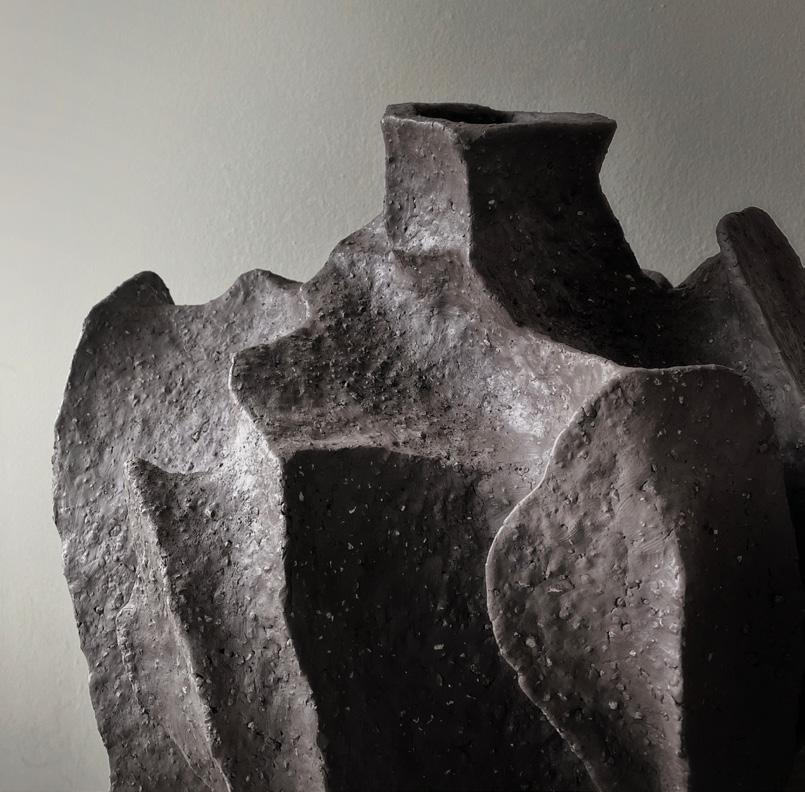
49
OLESYA & ANDRIY VOZNICKI | PINZEL
‘Pinzel’ series of chamotte vases is an hommage to the heritage of Johann Georg Pinzel -Ukrainian-Czech baroque sculptor of the XVIII century.
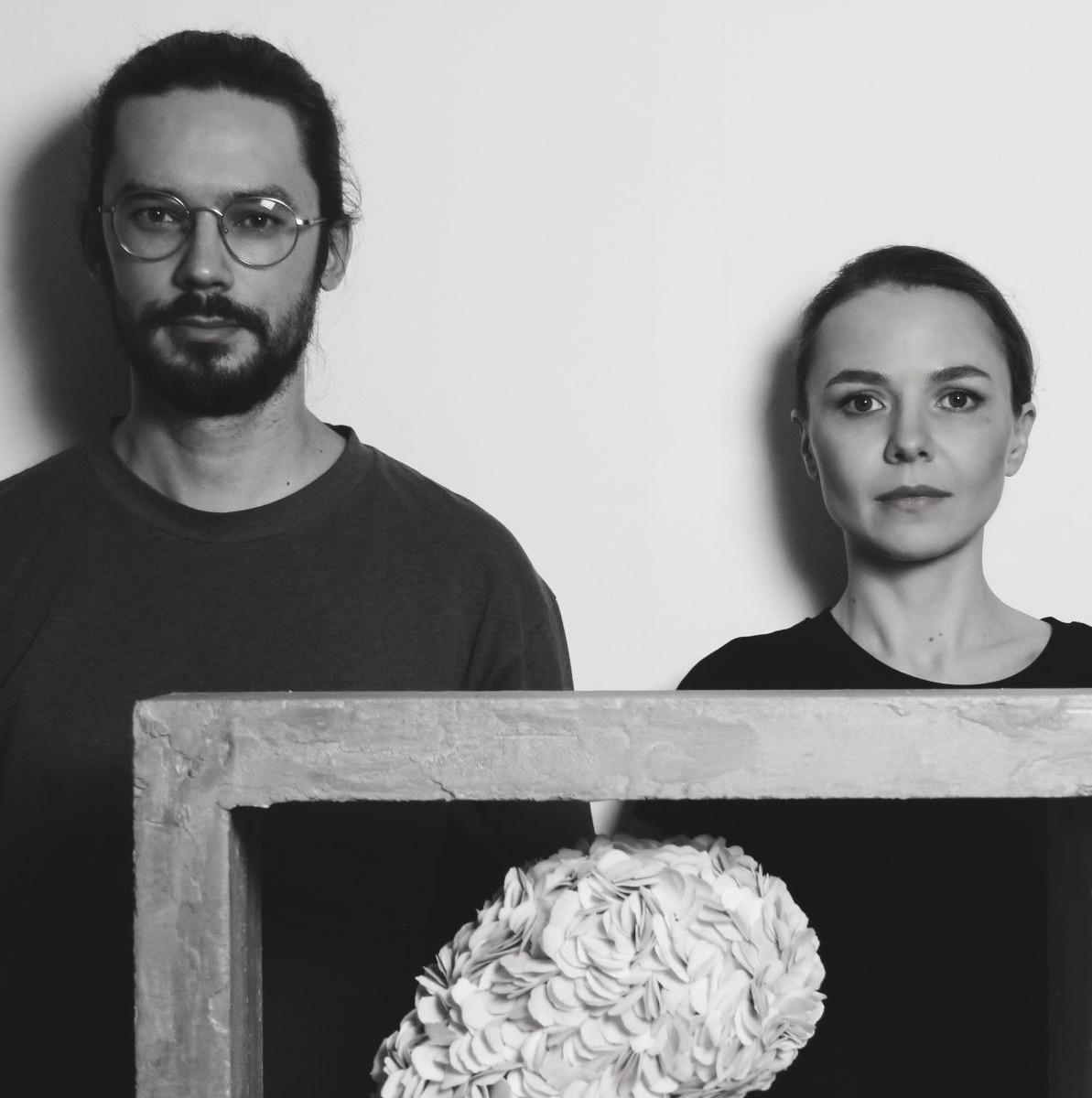
Yulia Batyrova & Marat Mukhametov
Nomad artistic duo of Yulia Batyrova and Marat Mukhametov sees their sculptures as the motion of multiple elements, constantly changing their shape. The finished form of the sculpture for them is a primitive way to embrace shapeless fluidity that denies any form. The combination of concrete and porcelain speaks about the human loss of harmony with nature and the infertility of attempts to restore it.
Batyrova and Mukhametov meticulously assemble countless number of finest porcelain feathers seeking to follow this motion creating extraordinary sculptures. Thoughts or emotions in their purest form, an attempt to capture something intangible, rapidly escaping and constantly changing, is one of the main themes of their research. The subtle differences in every detail are the result of handwork.
51
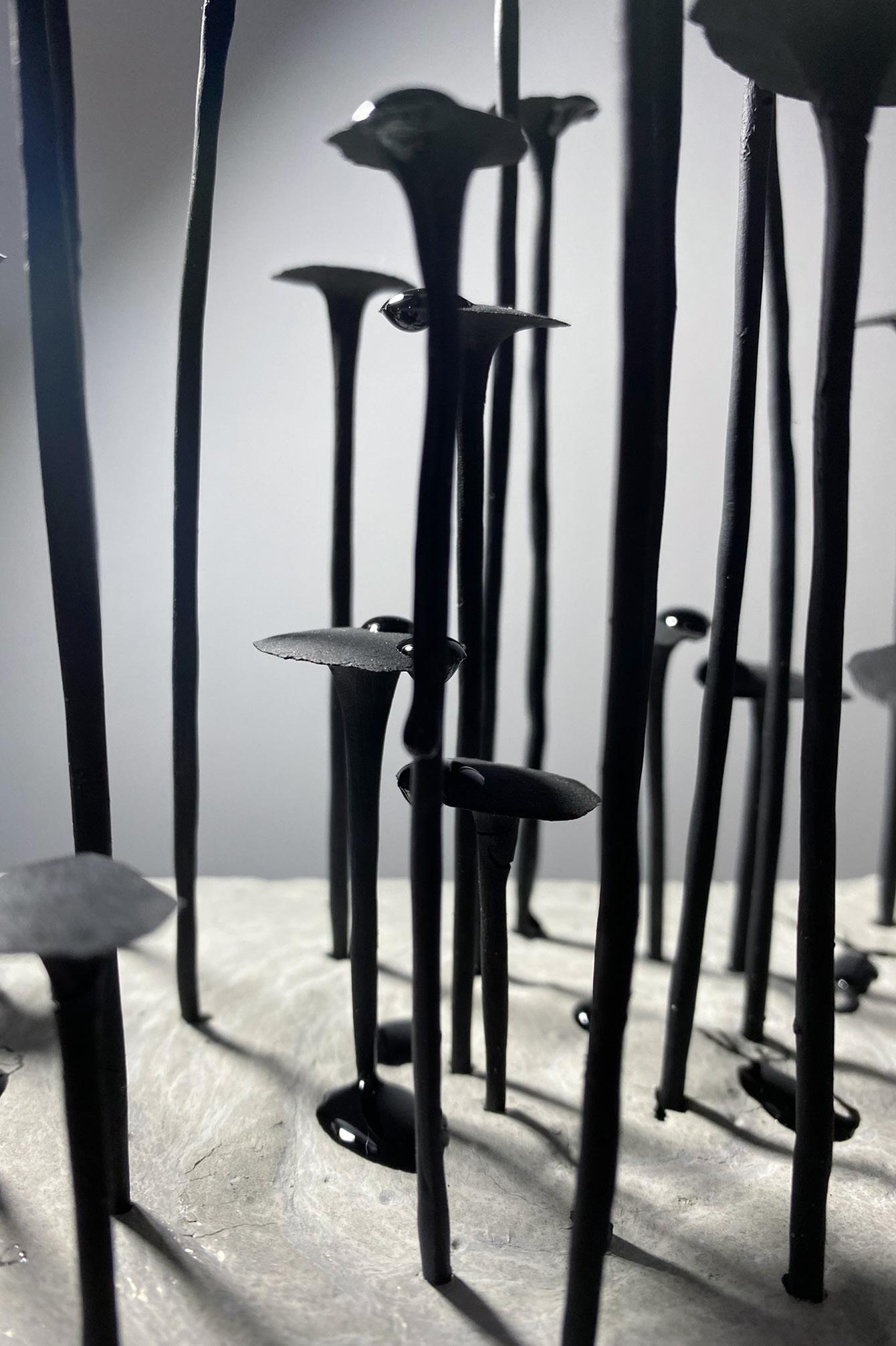
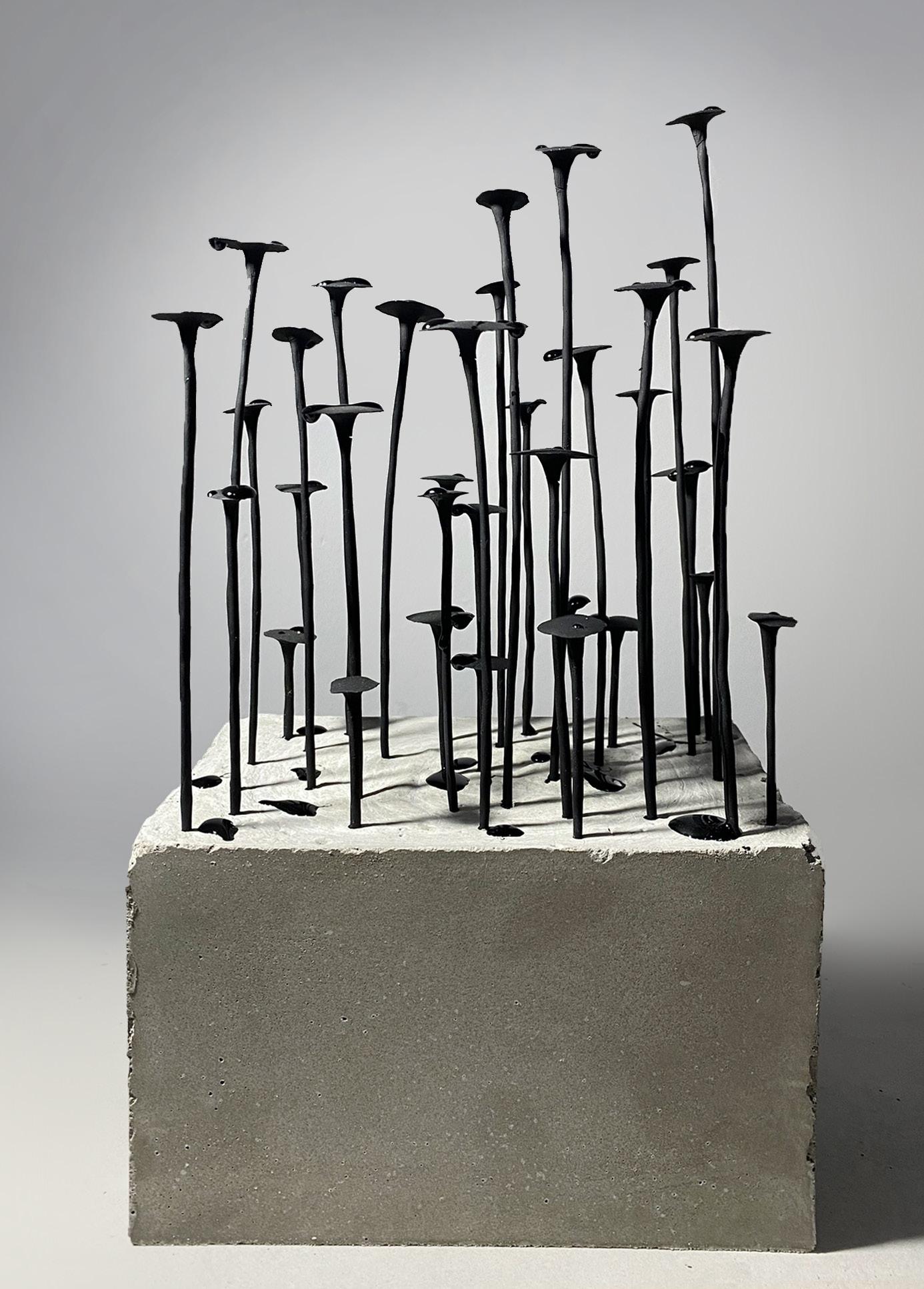
52
YULIA BATYROVA & MARAT MUKHAMETOV | SECRET GARDEN
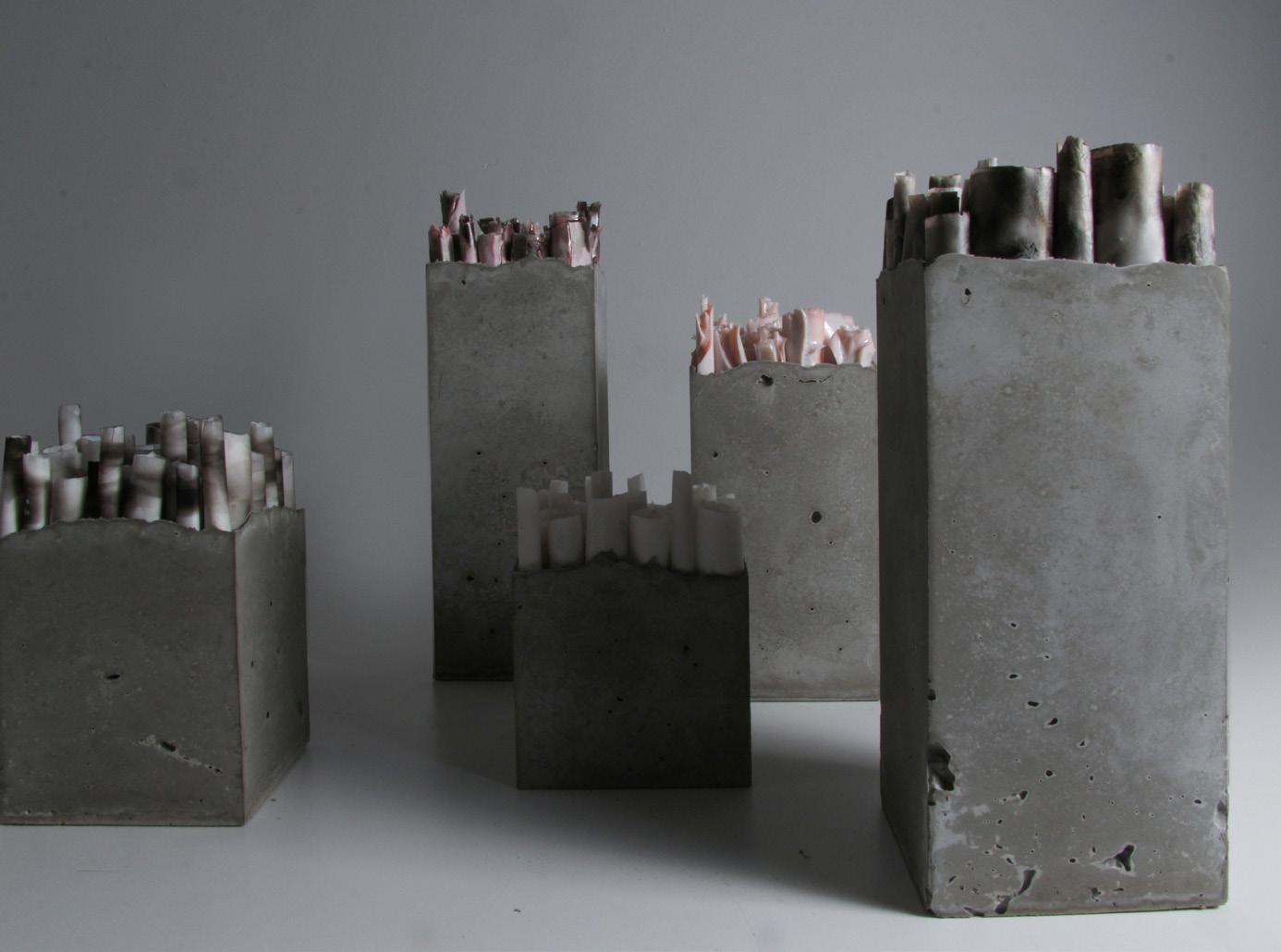
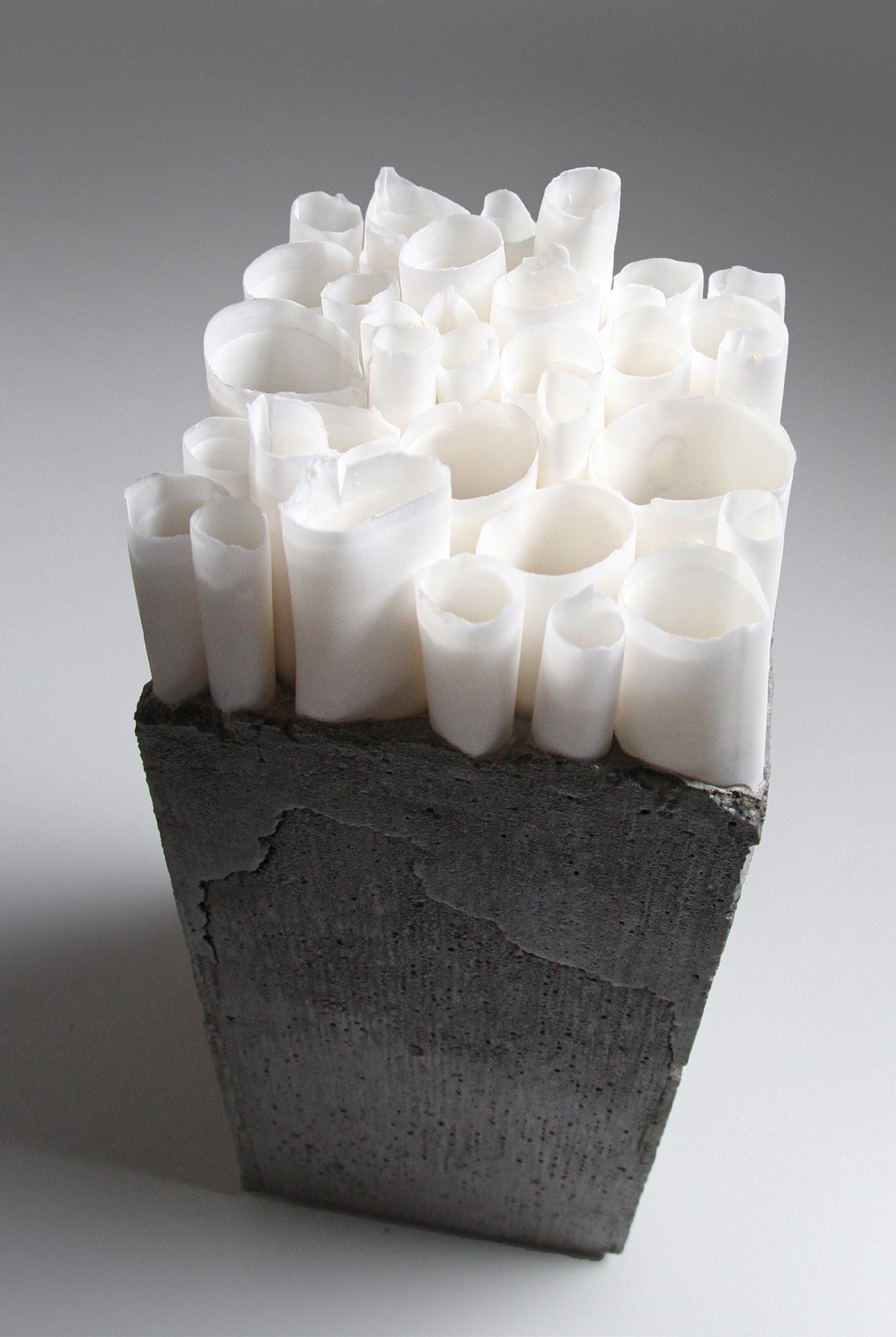
53
Small forms - a combination of brutal cement and fragile porcelain explores relations between and nature and humanity.
YULIA BATYROVA & MARAT MUKHAMETOV | SECRET GARDEN
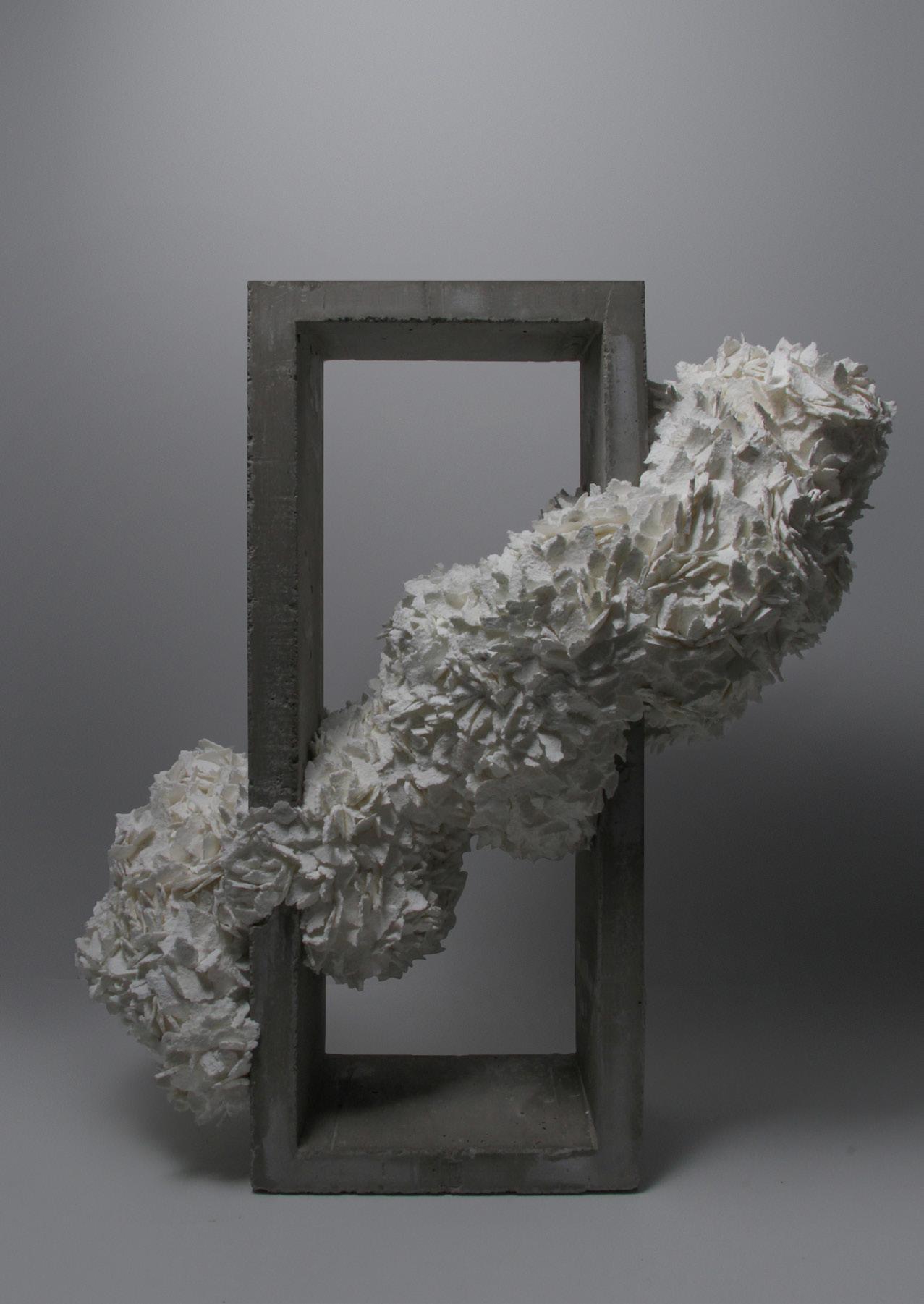

54
YULIA BATYROVA & MARAT MUKHAMETOV | GACELA I
‘Gacela I’, cement, porcelain. Unique
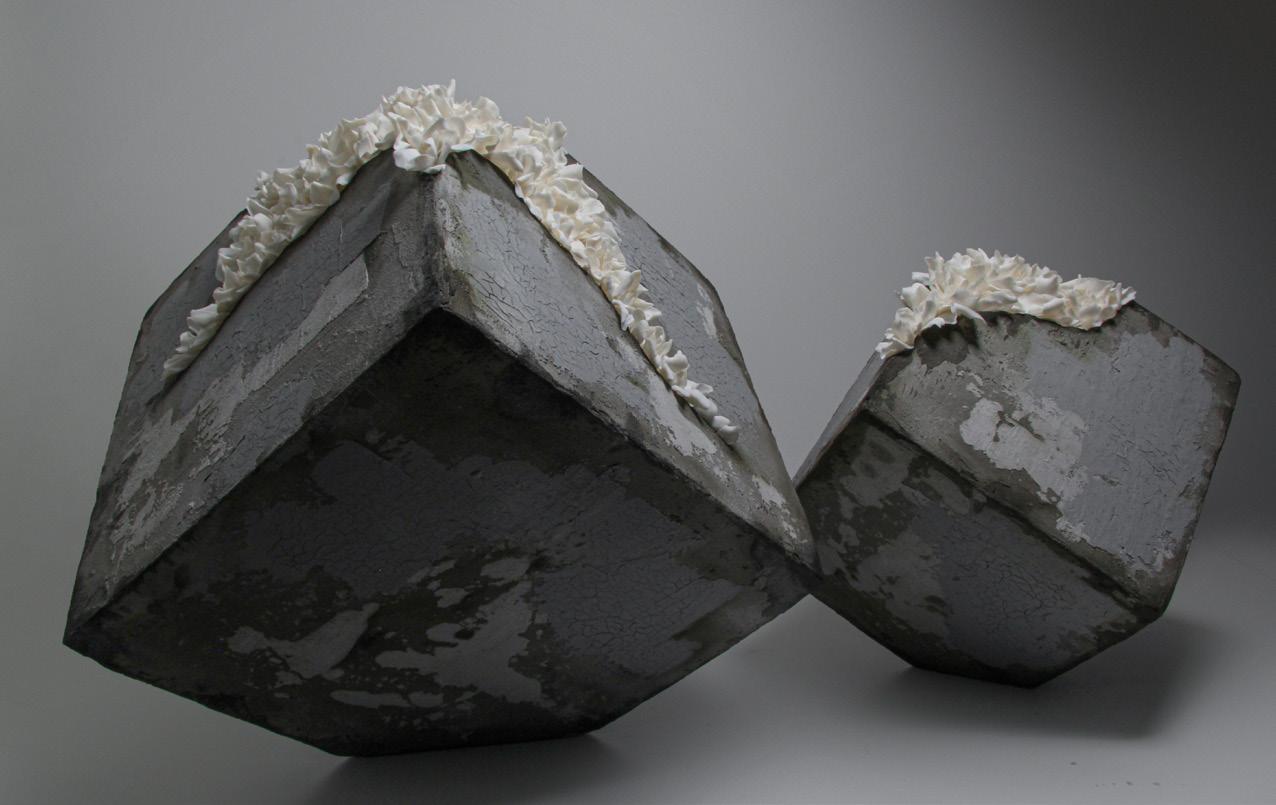
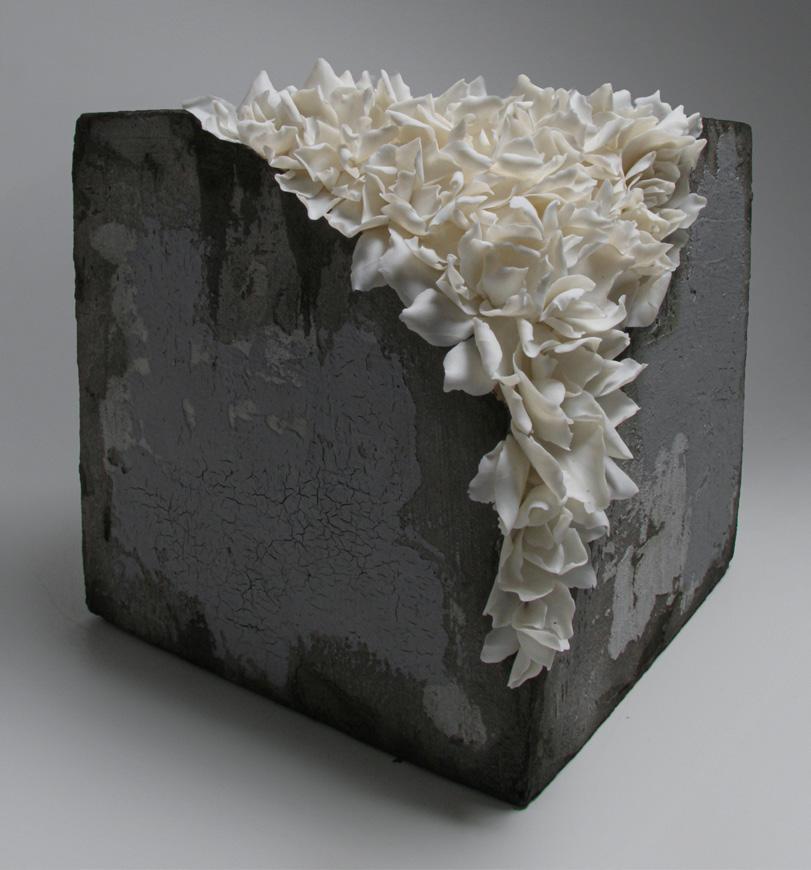
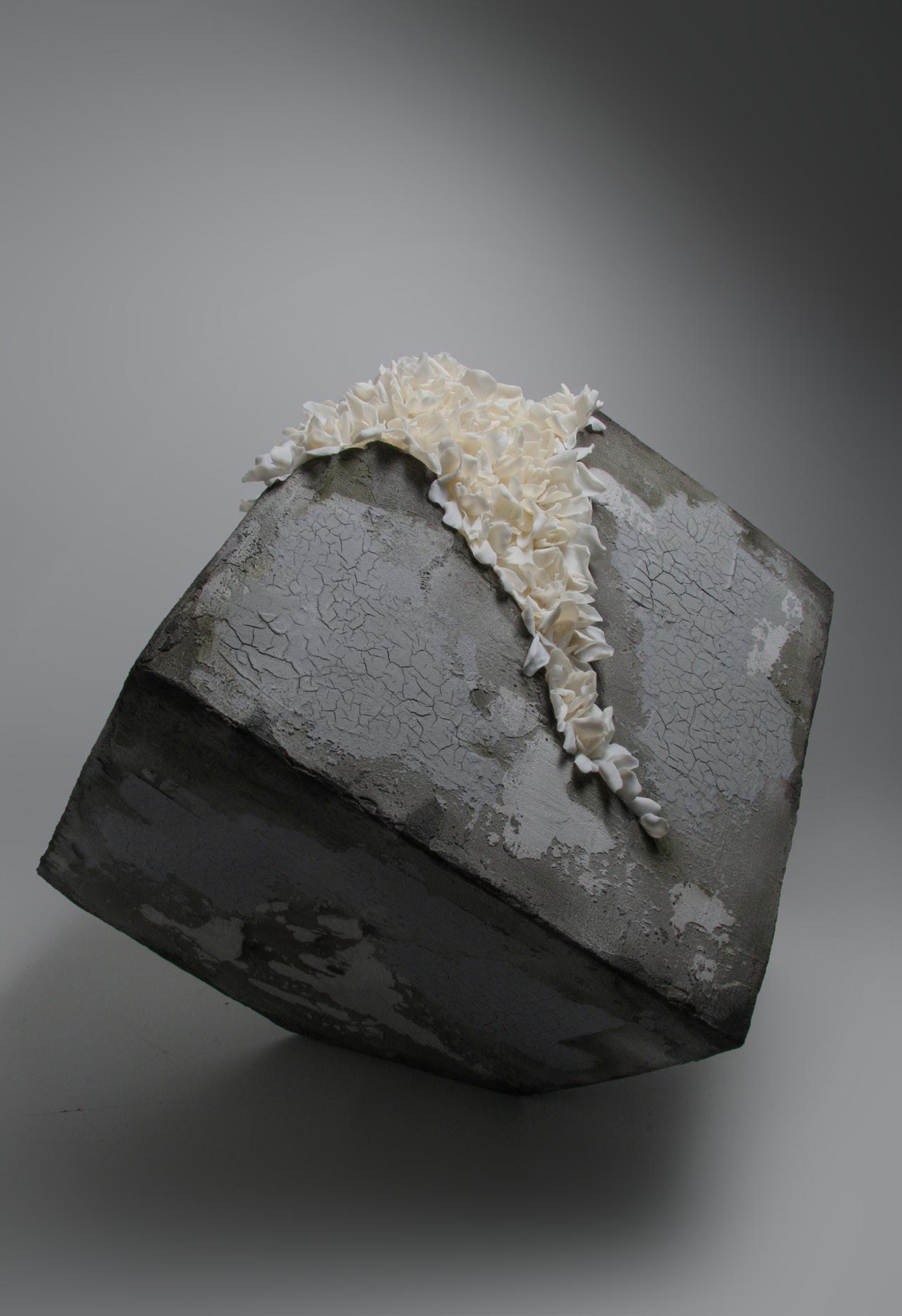
55
‘Cube’ series of small sculptures.
YULIA BATYROVA & MARAT MUKHAMETOV | CUBES
‘Fluid’, cement, porcelain. Unique
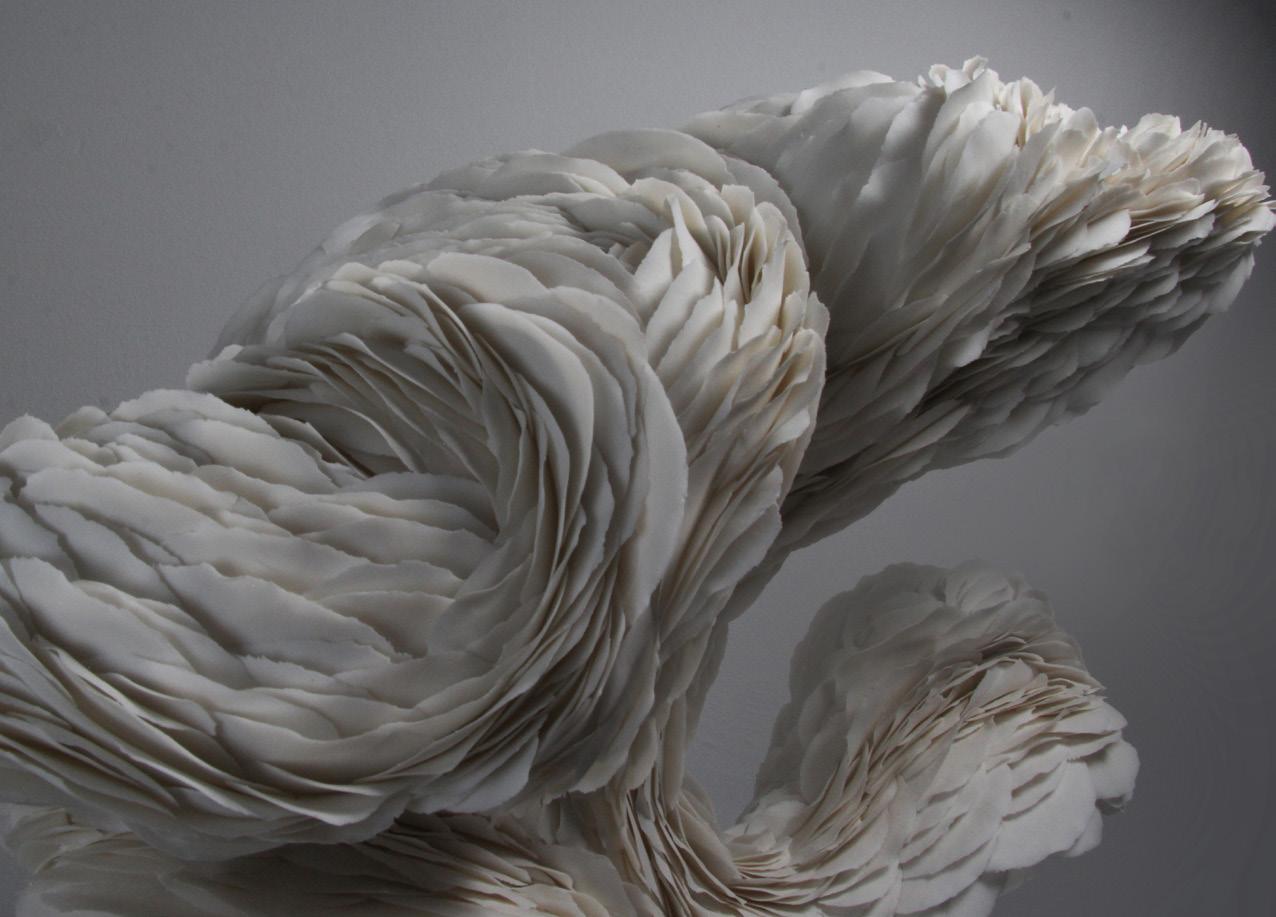
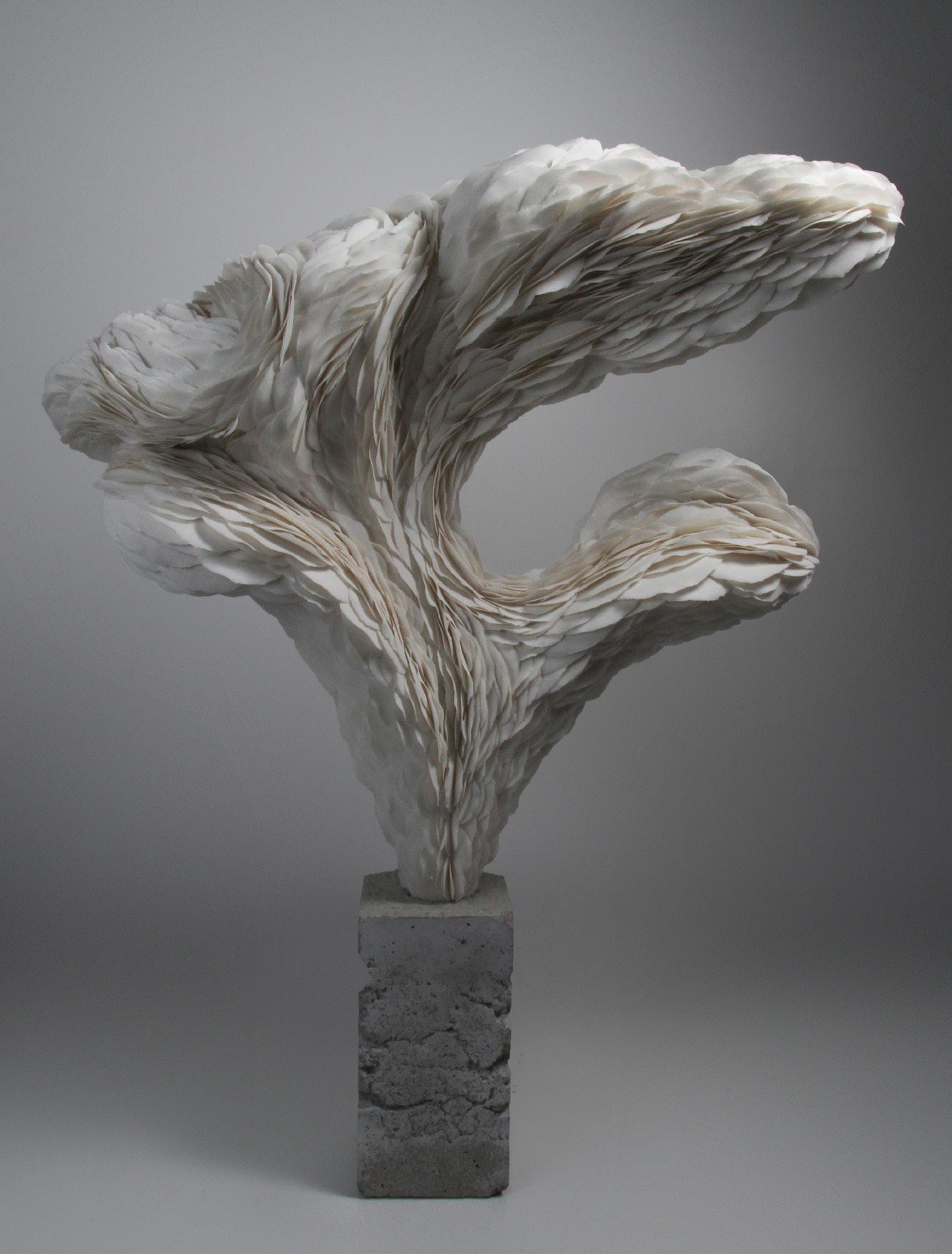
56
YULIA BATYROVA & MARAT MUKHAMETOV | FLUID
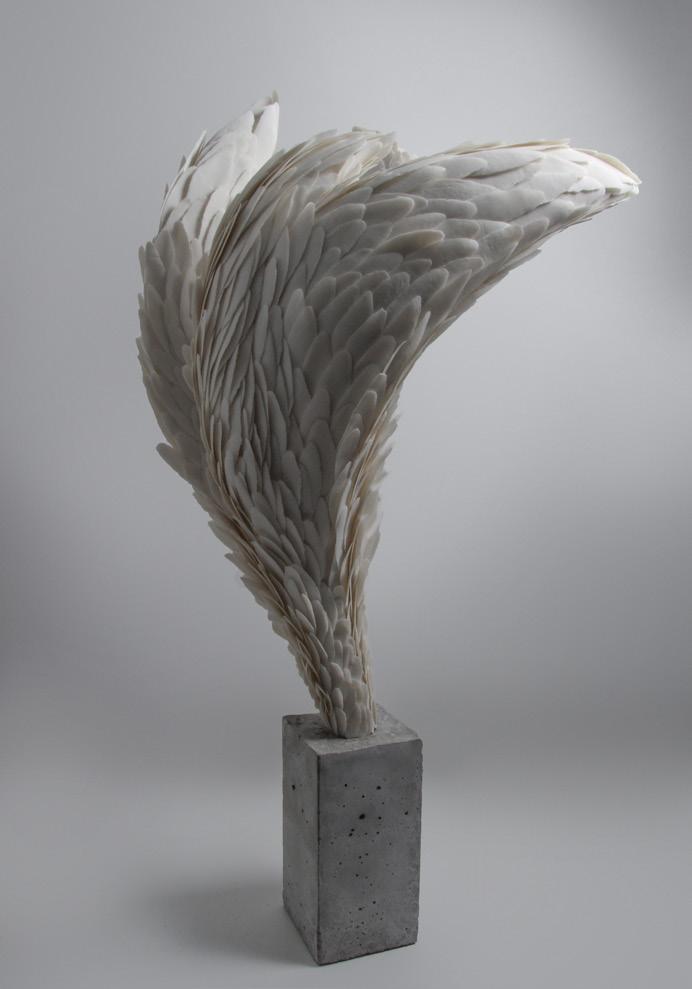
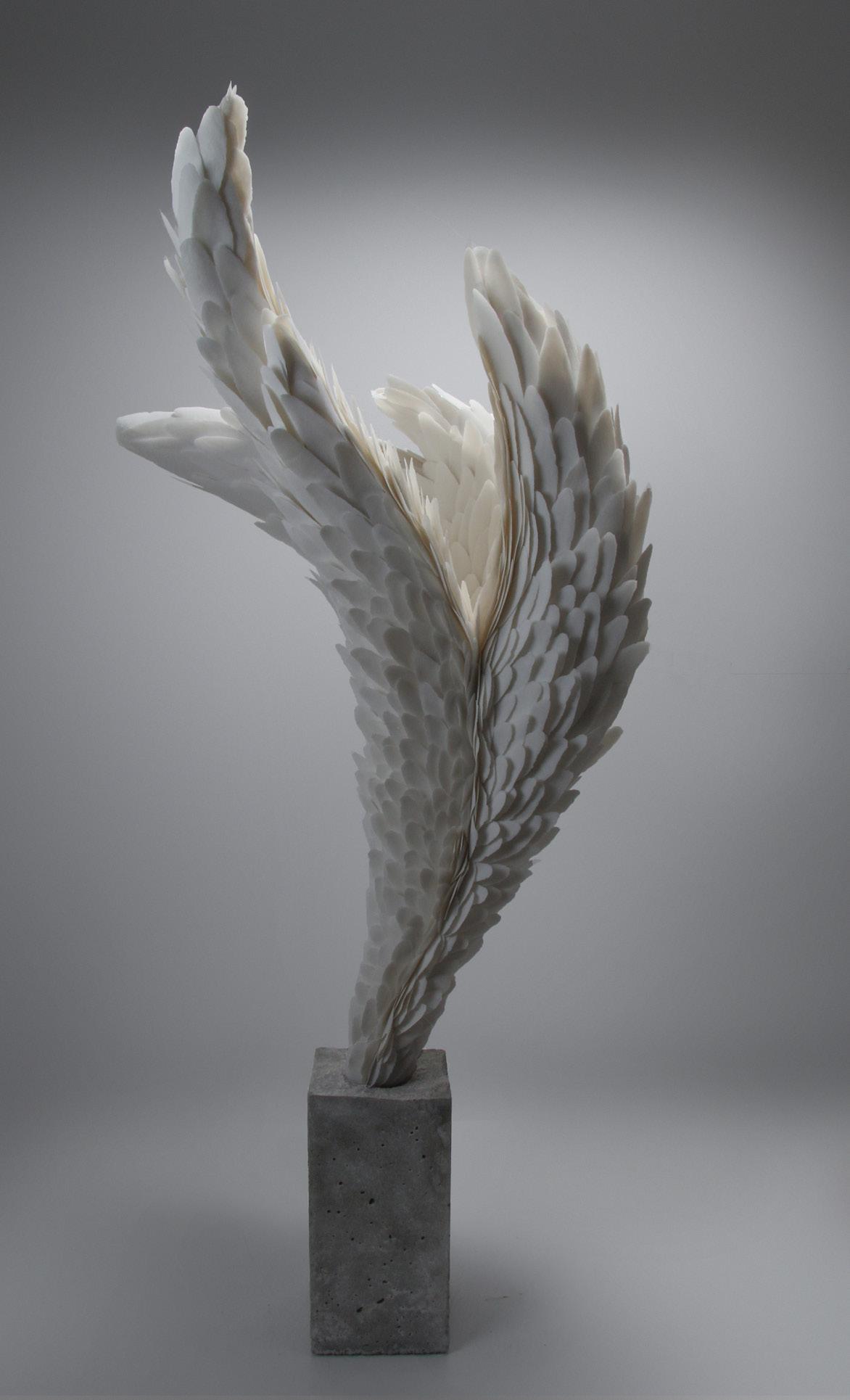
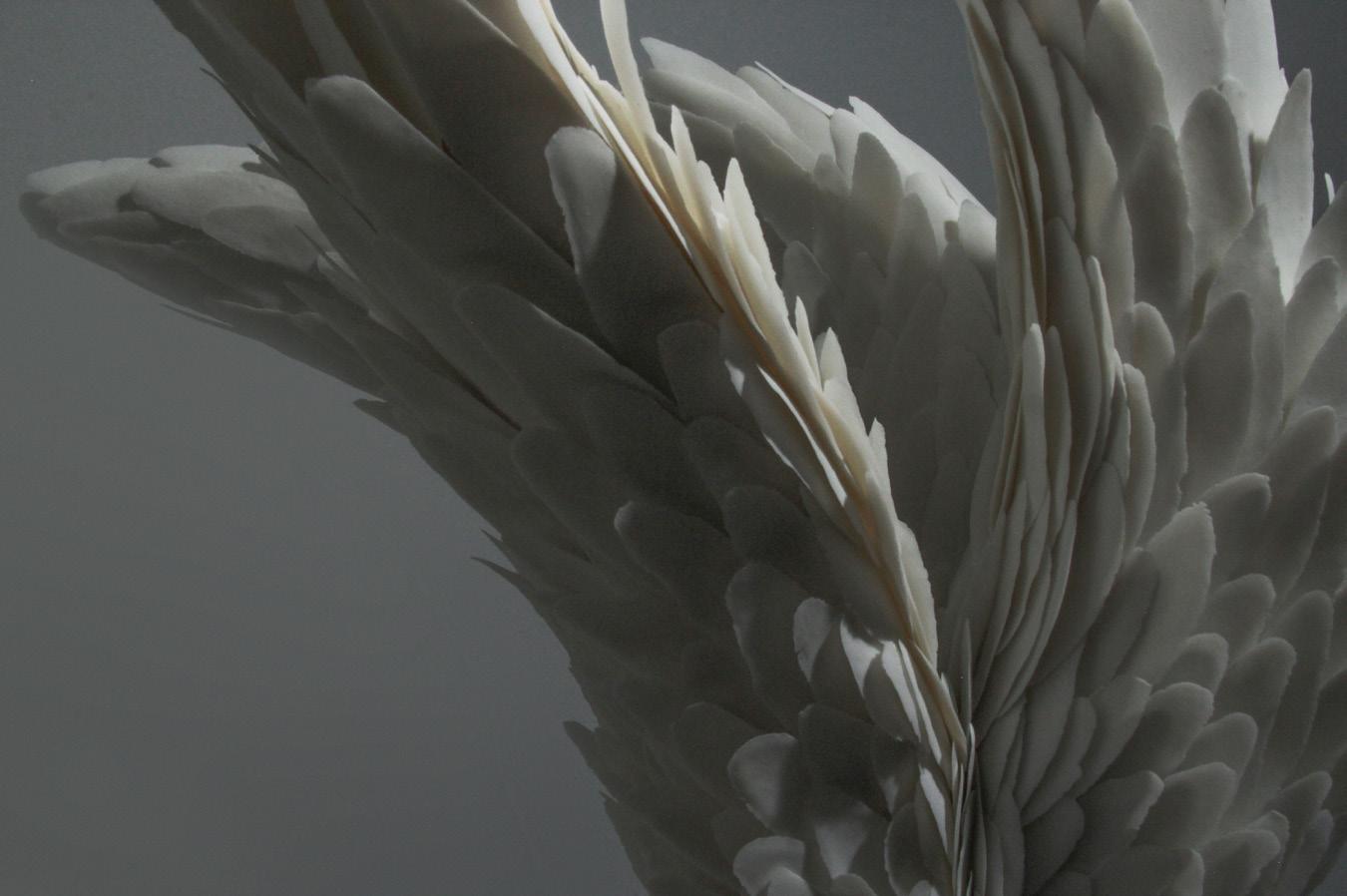
57
YULIA BATYROVA & MARAT MUKHAMETOV | BIRD
‘Bird’, cement, porcelain. Unique
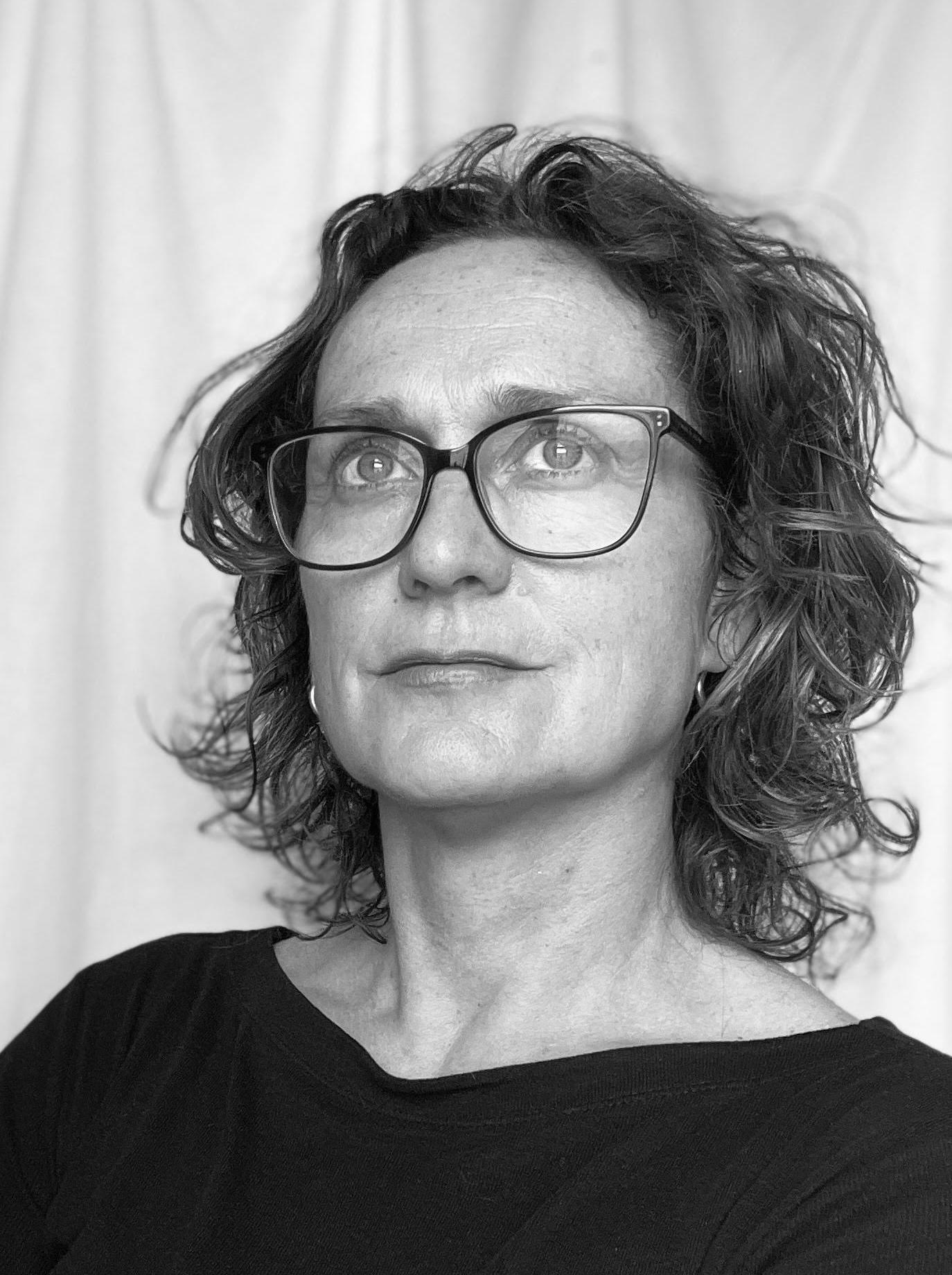
Femke van Gemert
When witnessing the tremendous amount of waste generated by fast fashion – an industry she worked within for many years – Femke van Gemert realised it was time for her to follow her own path and start using textiles differently.
Femke’s practice reveals an alternative renaissance of textile leftovers, enriched with her sense of emotion and distinct personal touch. Loss and hope, imperfection and degradation over time are all recurring themes in her work.
The result is highly emotional pieces which intertwine personal experiences with broader, universal issues, while also drawing attention to the present environmental crisis by taking inspiration from the ever-lasting circularity of nature.
Femke raises awareness about the effects of textile waste on people and planet through talks and education. She demonstrates ways to reuse and recycle textiles in educational workshops and special tailored projects.
59
’Conflicting Forces’, waste textile. Unique
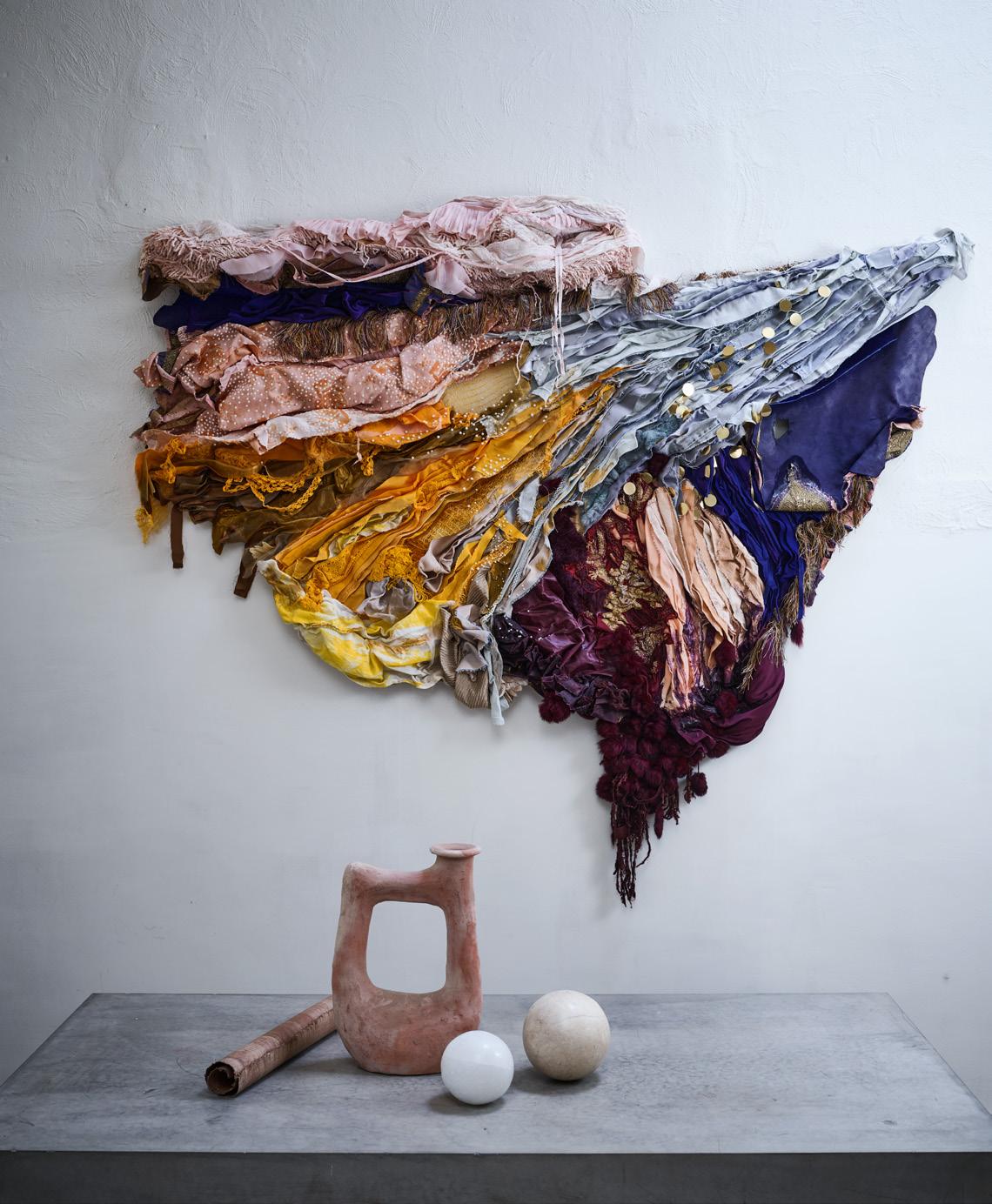
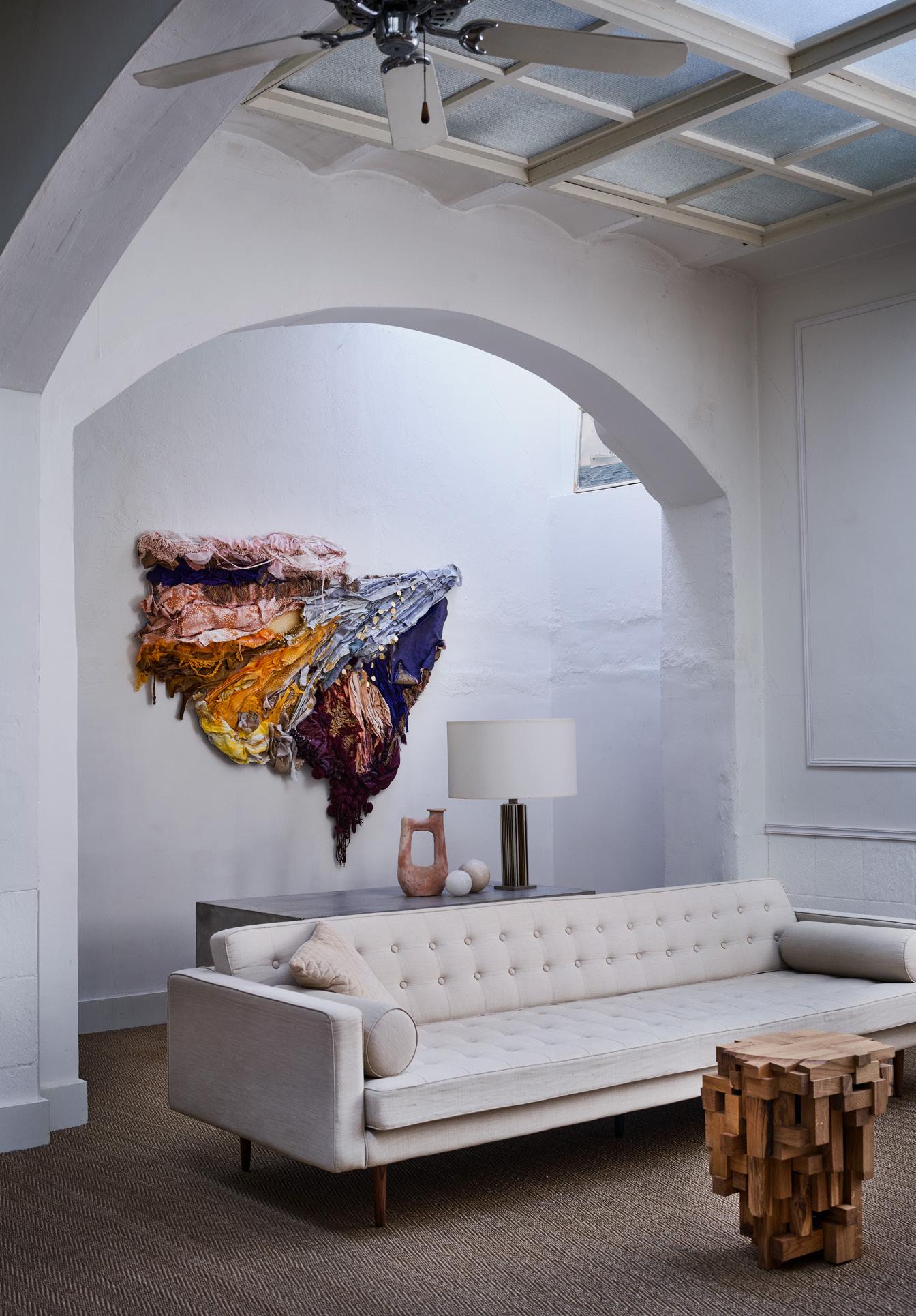
60 FEMKE VAN GEMERT | CONFLICTING FORCES
’Skin II’ inspired by beauty of nature. Waste textile. Unique
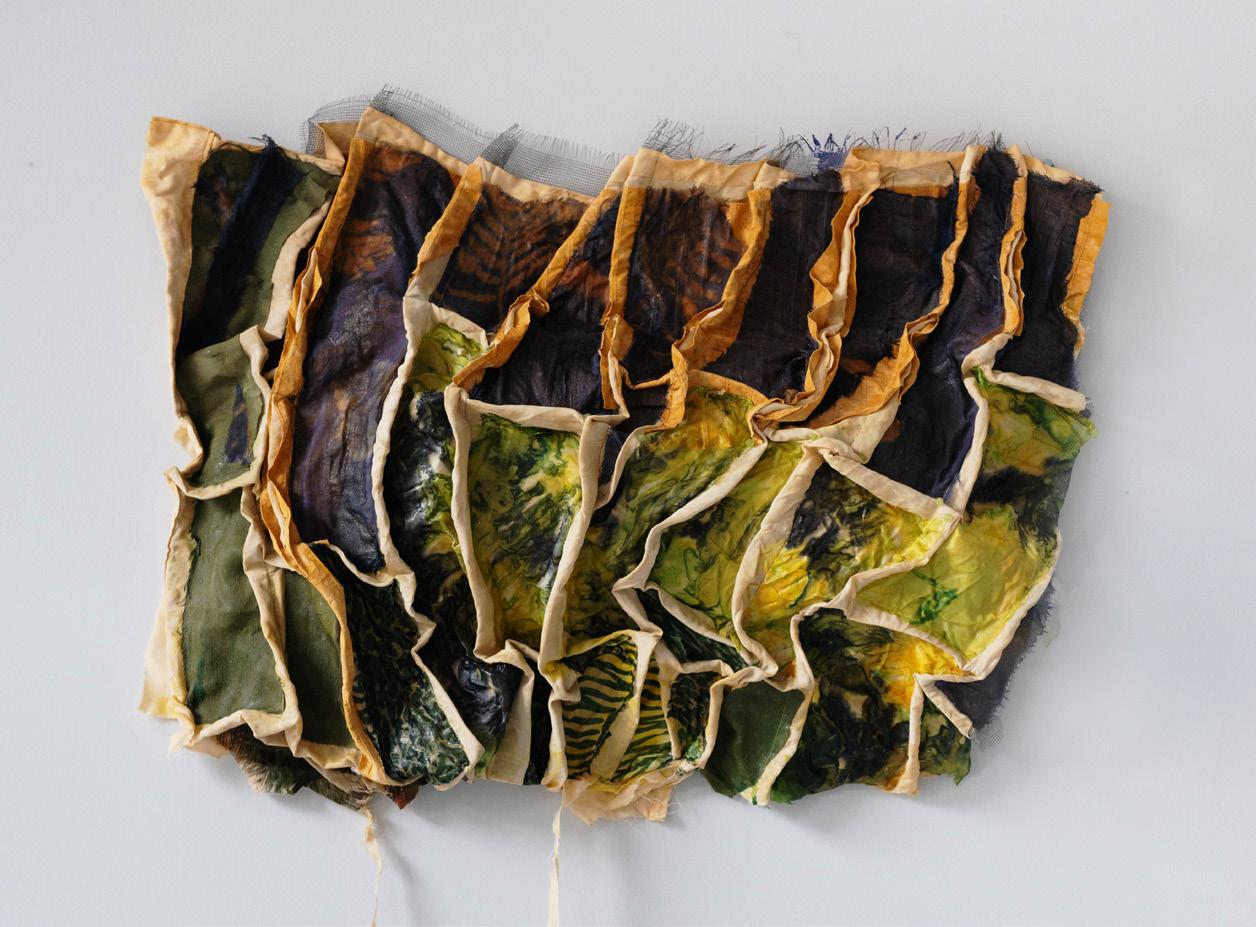
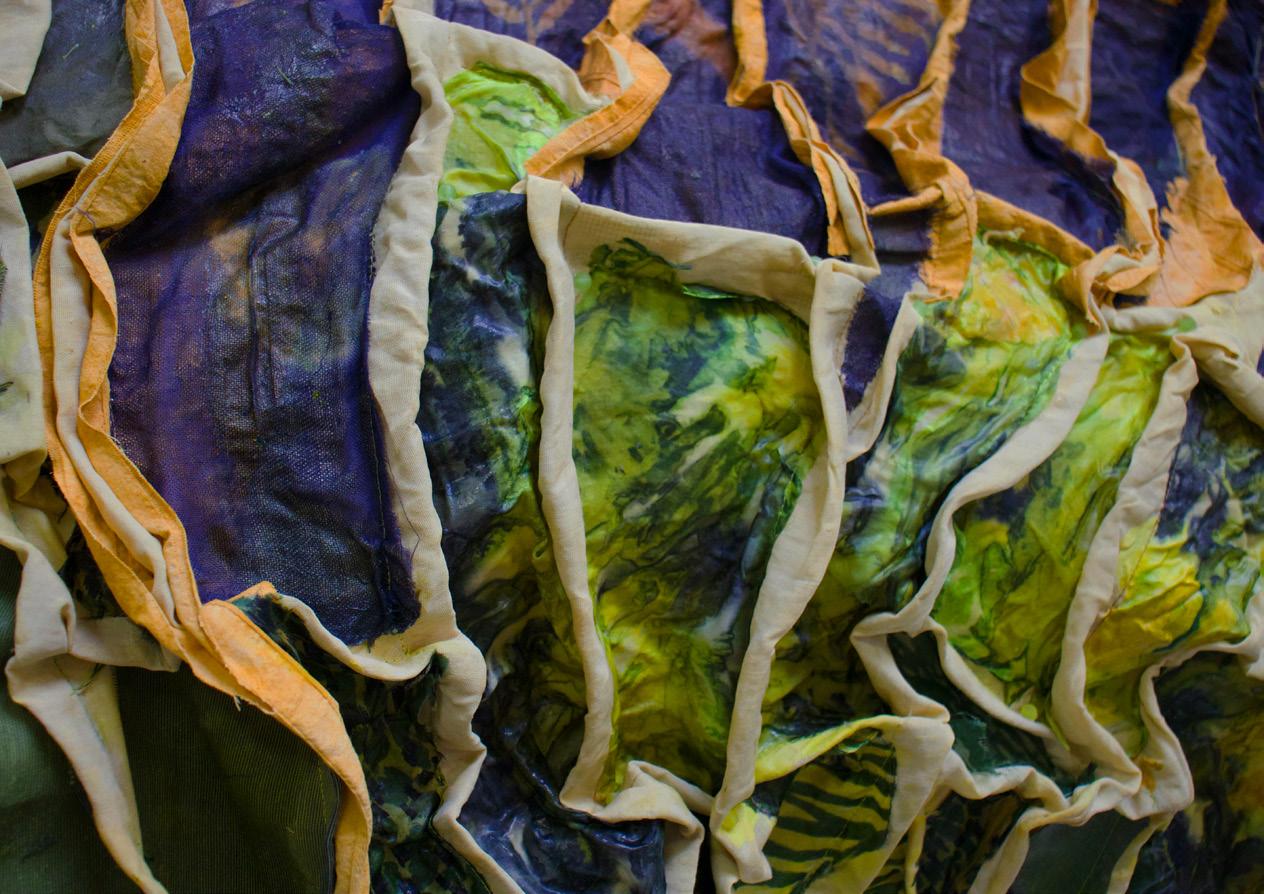
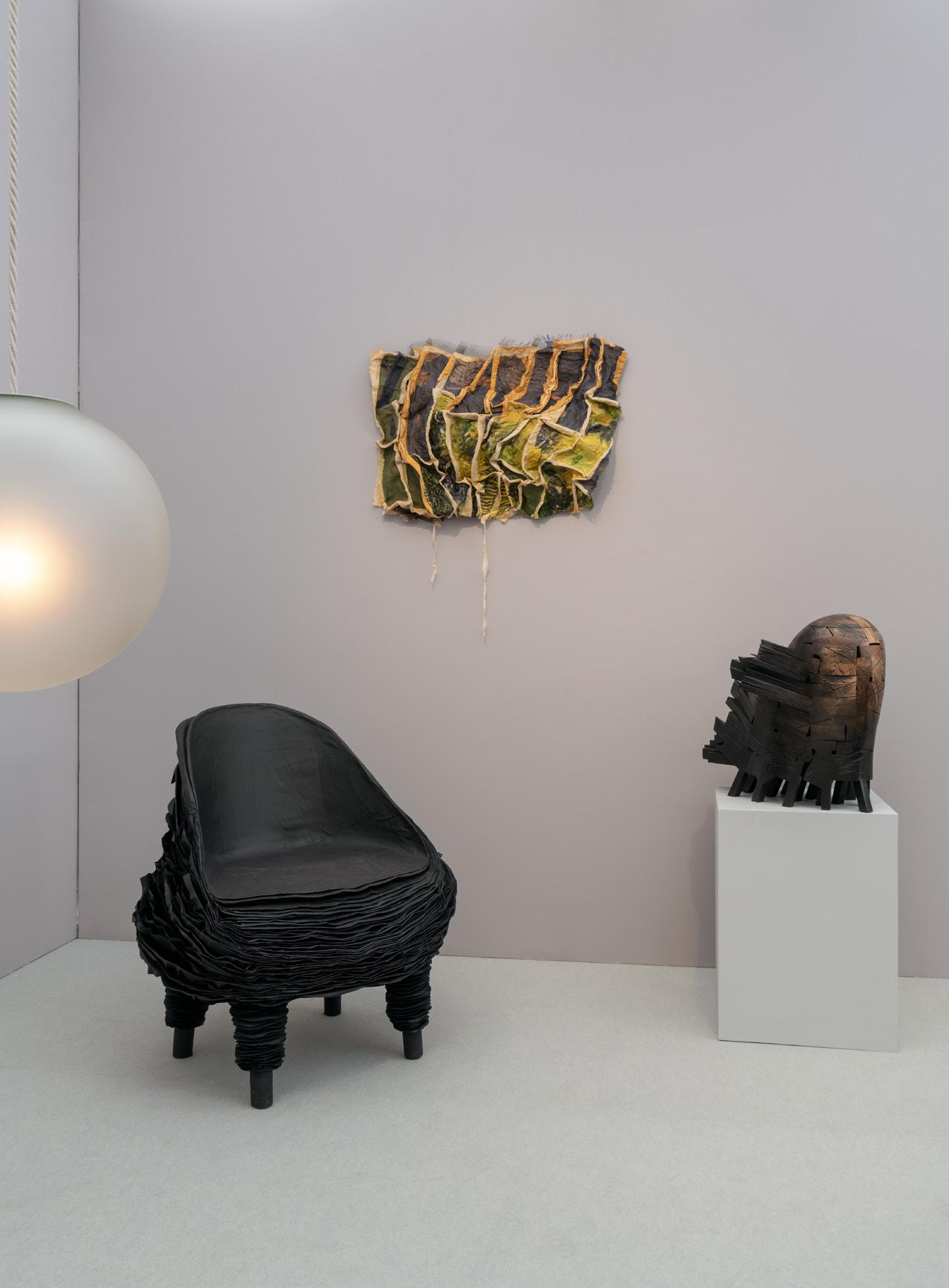
61 FEMKE VAN GEMERT | SKIN II
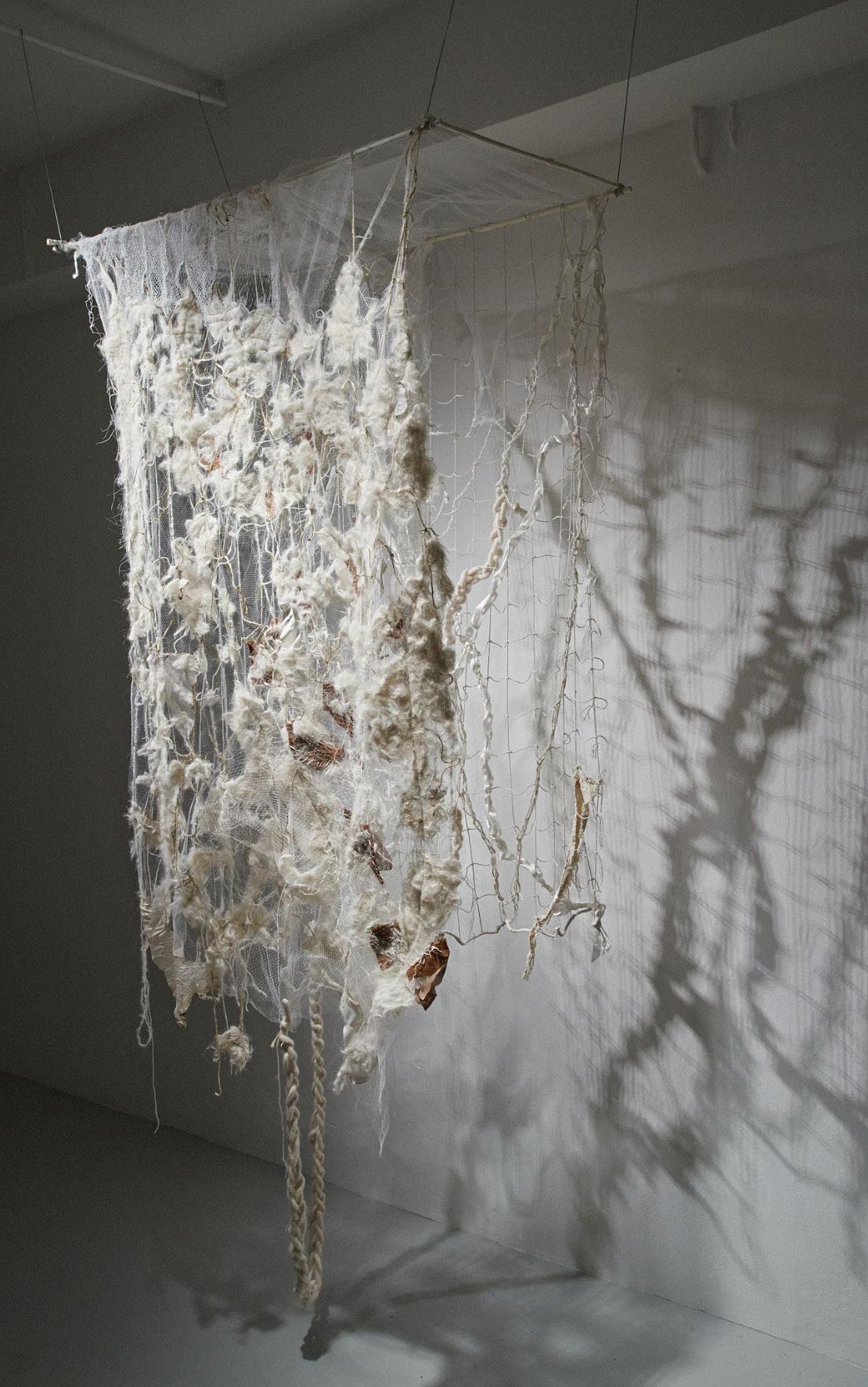
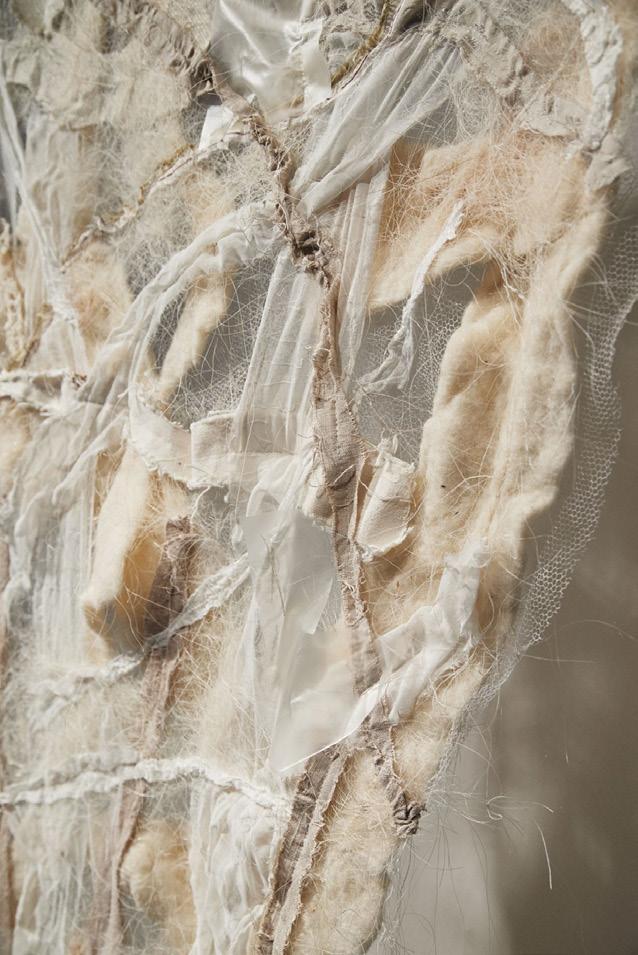
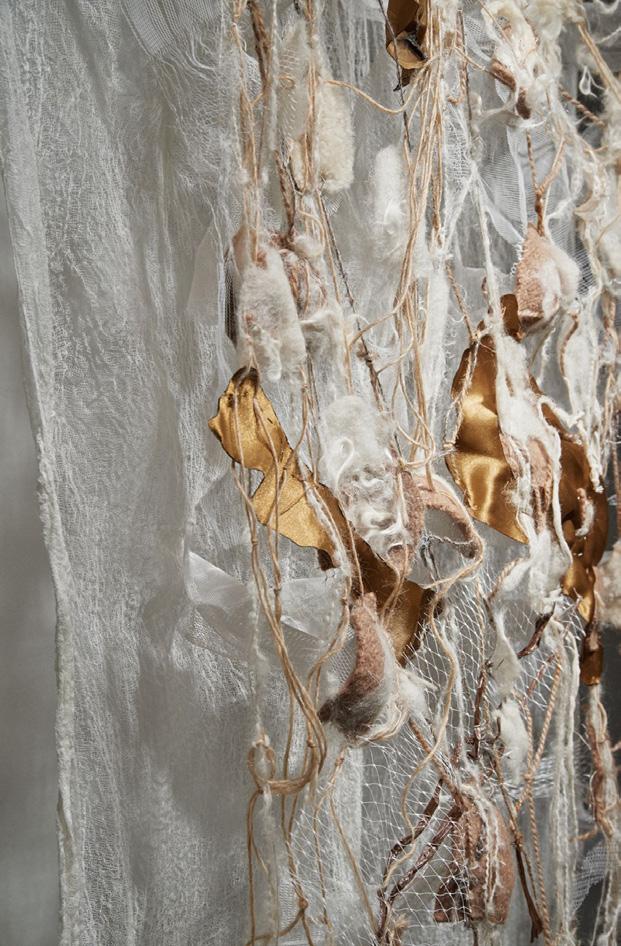
62 FEMKE VAN GEMERT | ANTHROPOCSENIC
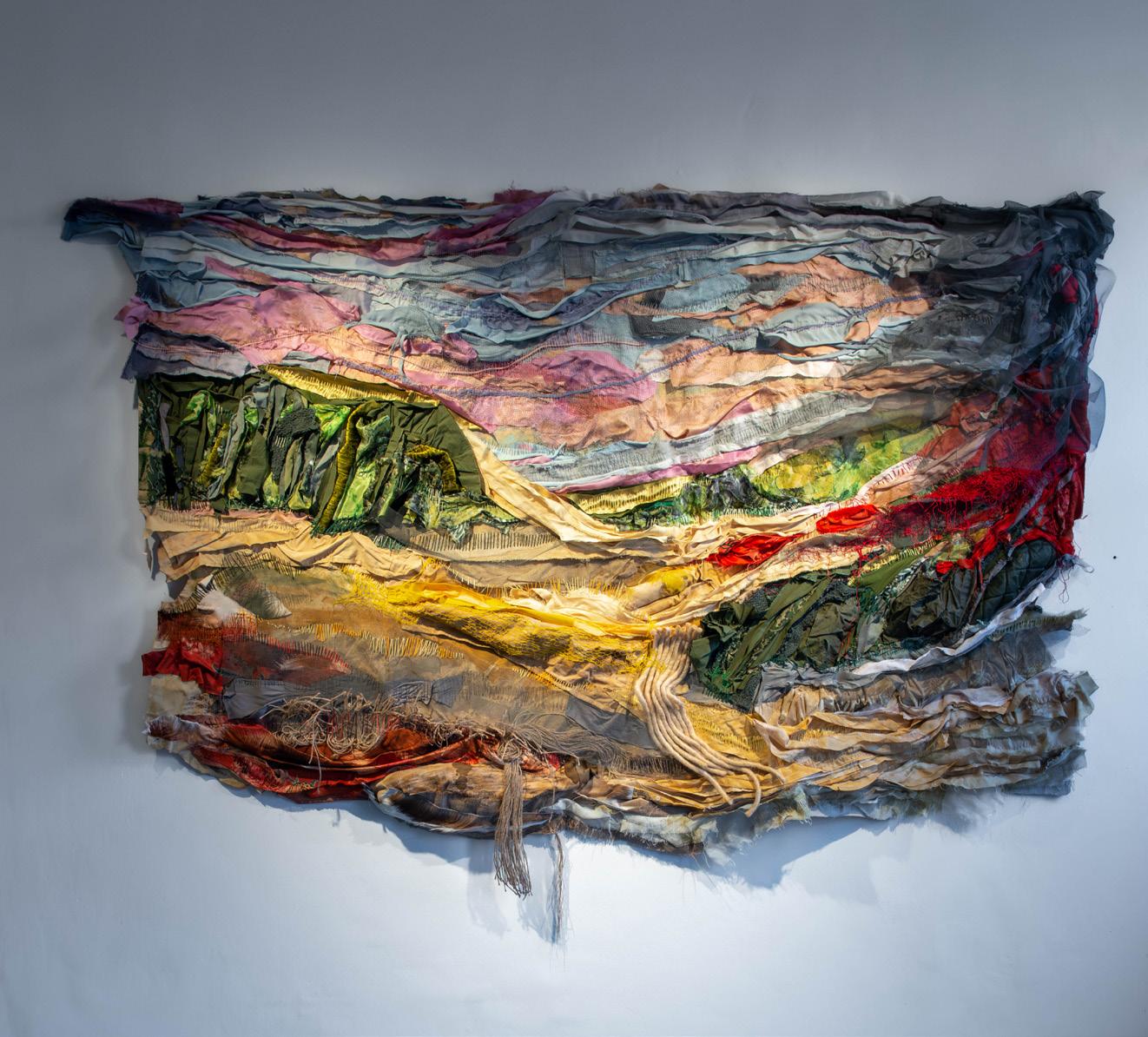
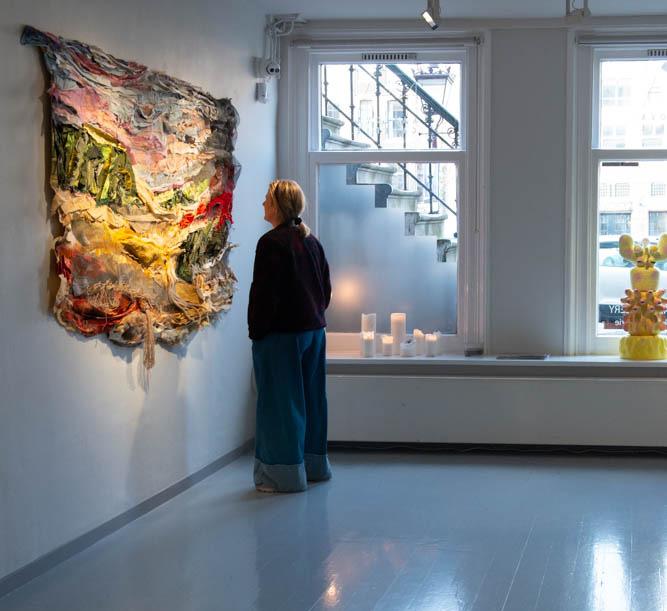
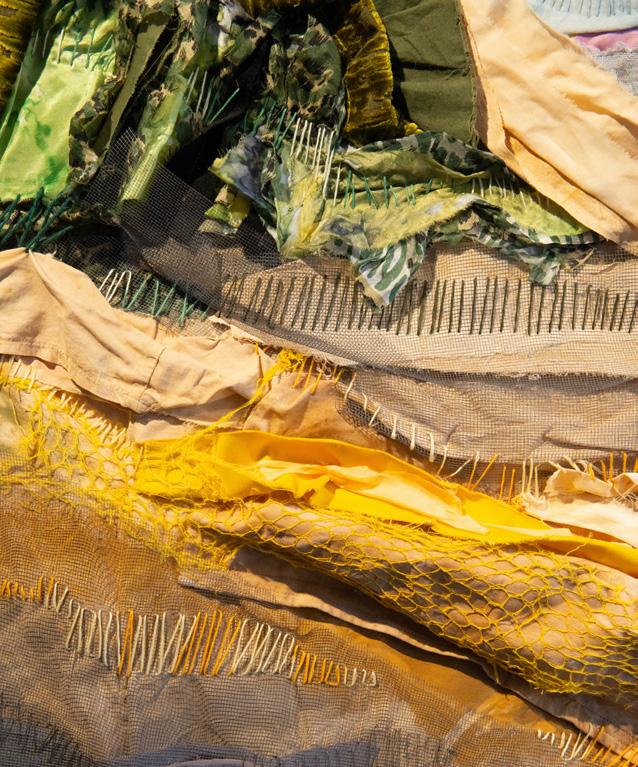
63
FEMKE VAN GEMERT | HOT LANDSCAPE
’Hot Landscape’, waste textile, embroidery. Unique

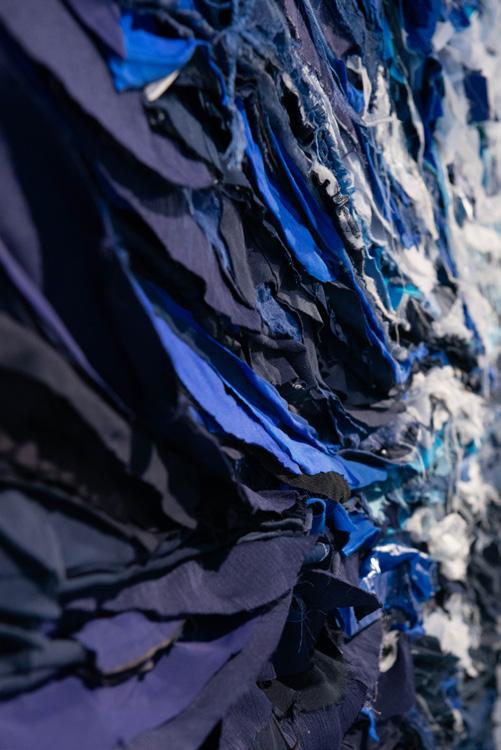
64 FEMKE VAN GEMERT | THE LURE OF LIGHT AND DARK
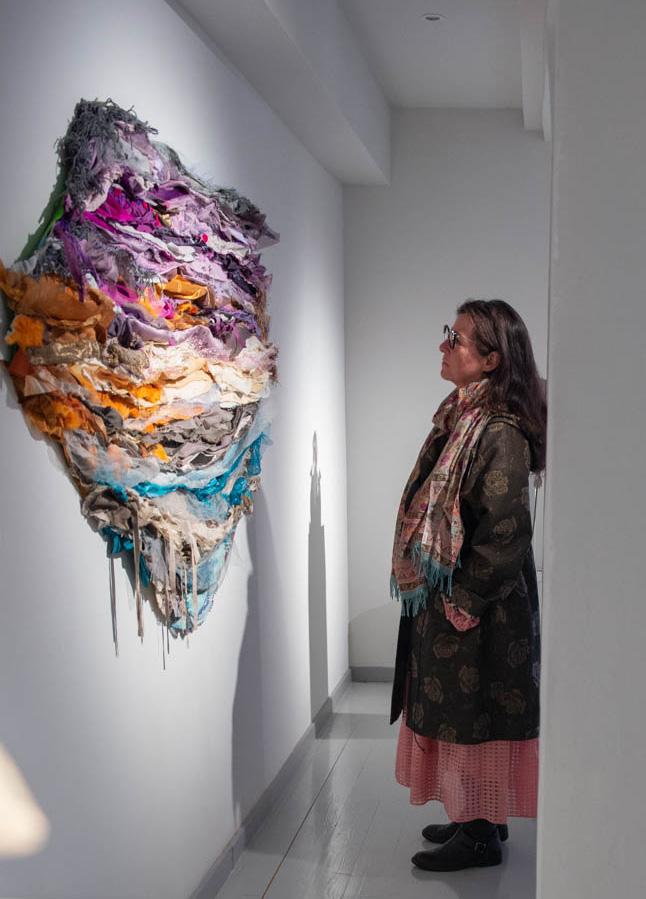
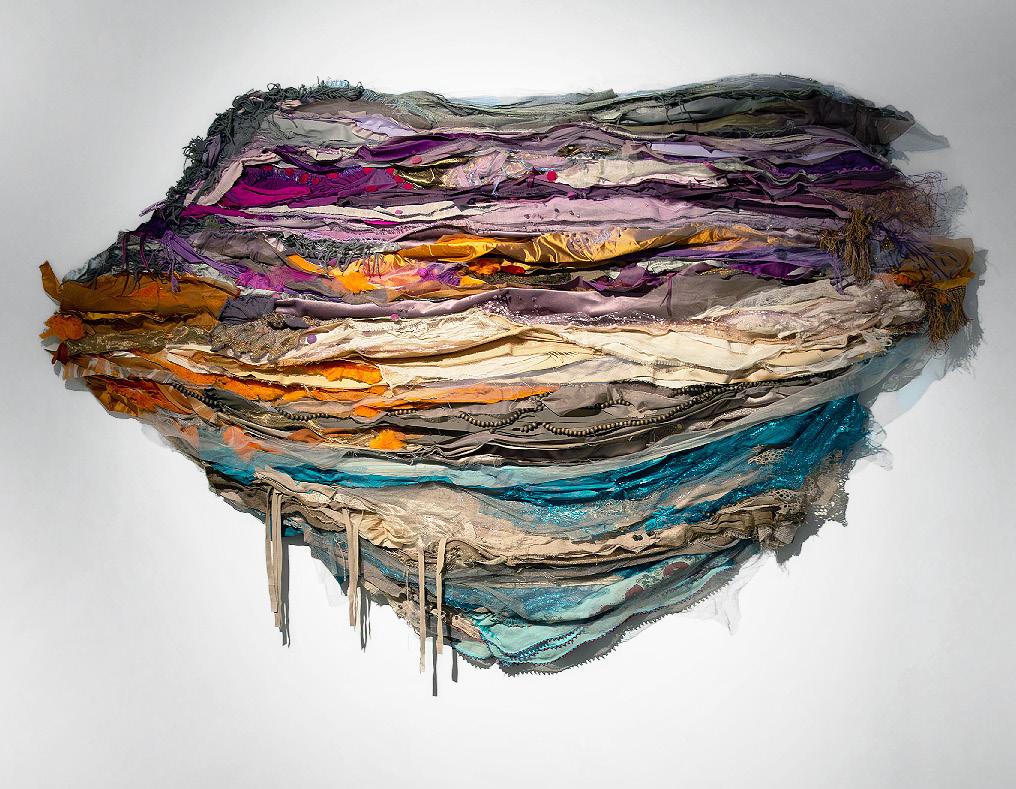
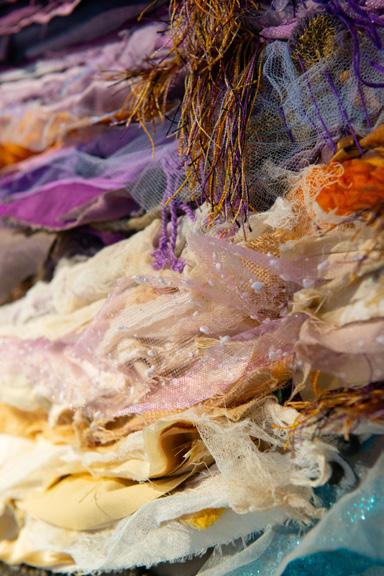
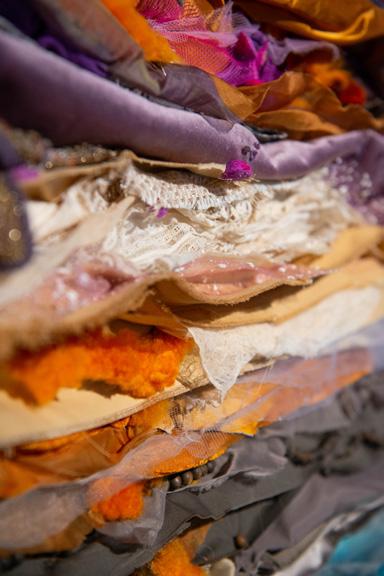
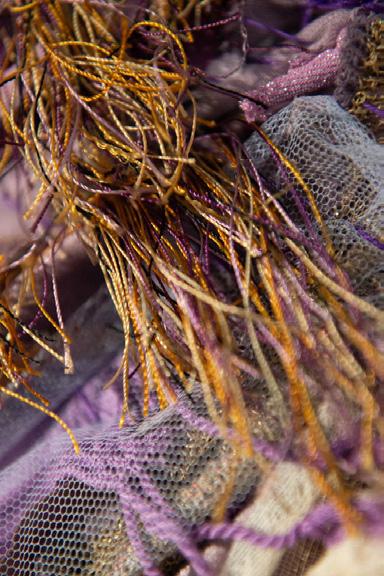
65
FEMKE VAN GEMERT | OMINOUS SKY
’Ominous Sky’, waste textile. Unique
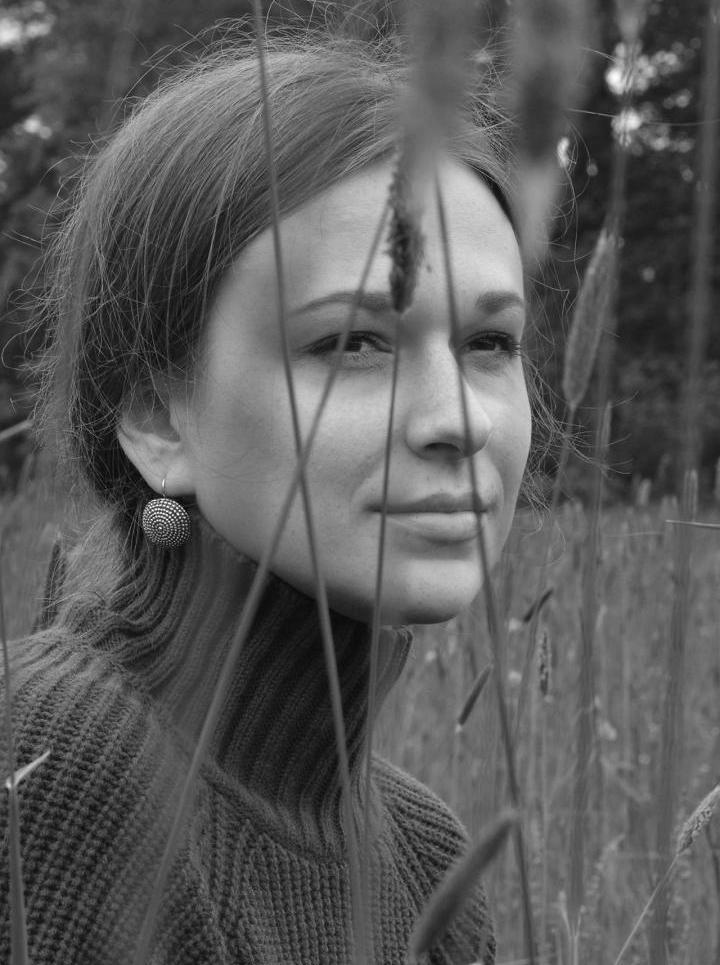
Jonne Stout
Jonne Stout studied at the School of the Arts in Utrecht (HKU) and graduated in 2019. Ceramics is a main material in her work, she searches for specific characteristics in this material such as texture and sound. Jonne Stout strives for a connection with the observer through space, how to relate to space and how it reaches the purity of perception and harmony. Origin of shapes, movement and repetition is a continuous research in her work.
Shapes and lines interact with each other through movement, sound, light and shadows, which define space among volume, color and material.
With the minimalistic approach in her work, she tries to connect to the imagination and personal association through geometry, repetition and recognition. “I believe this recognition is connected to purity of form, material and the repetitive nature of both our natural and synthetic environment”.
67
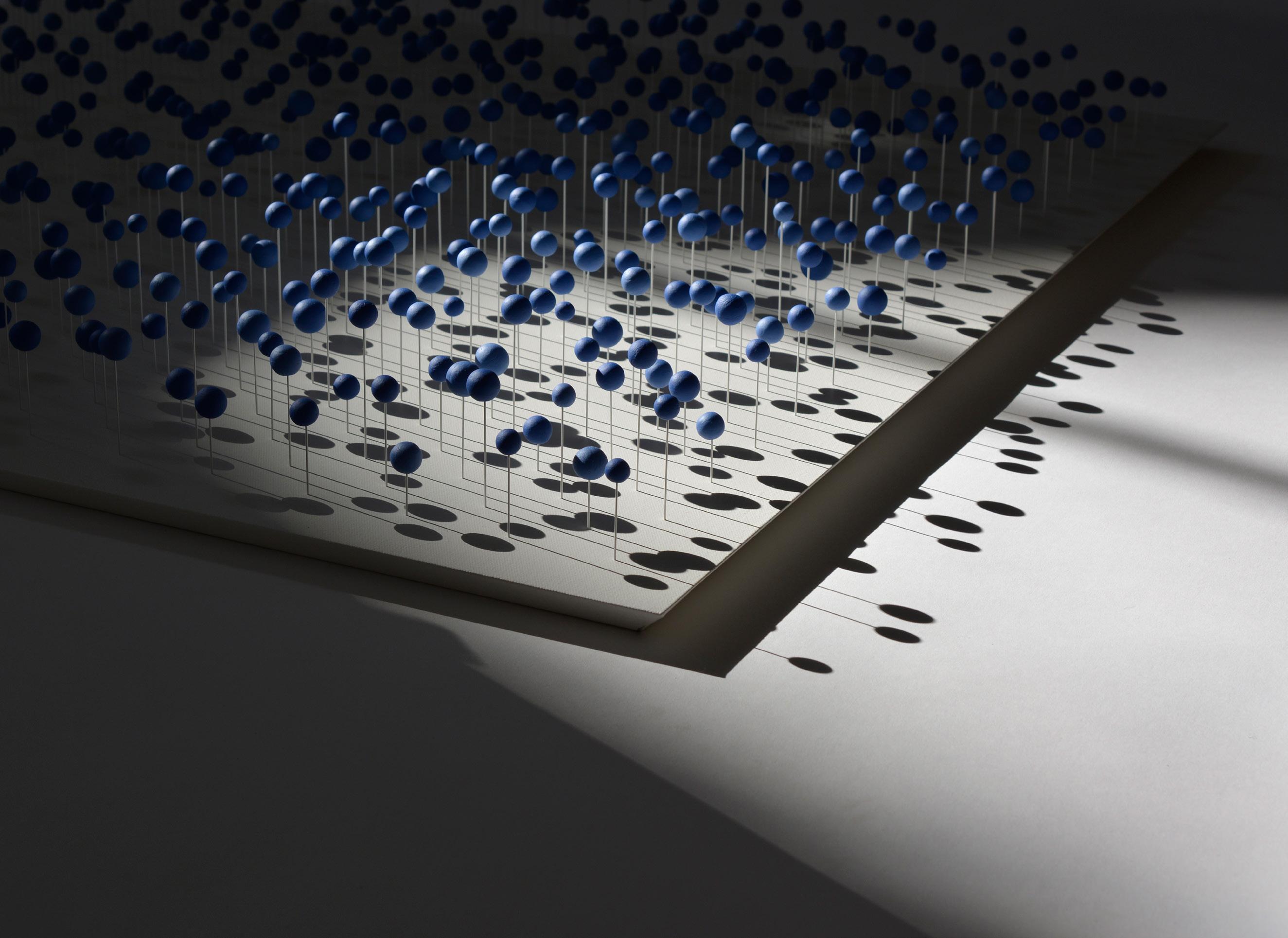
68 JONNE STOUT | 4TH STROPHE
In every Strophe, once under the sunlight, the porcelain circles on the metal pins turn into an exquisite play of light and shadow, creating rhythm similar to the poetry.

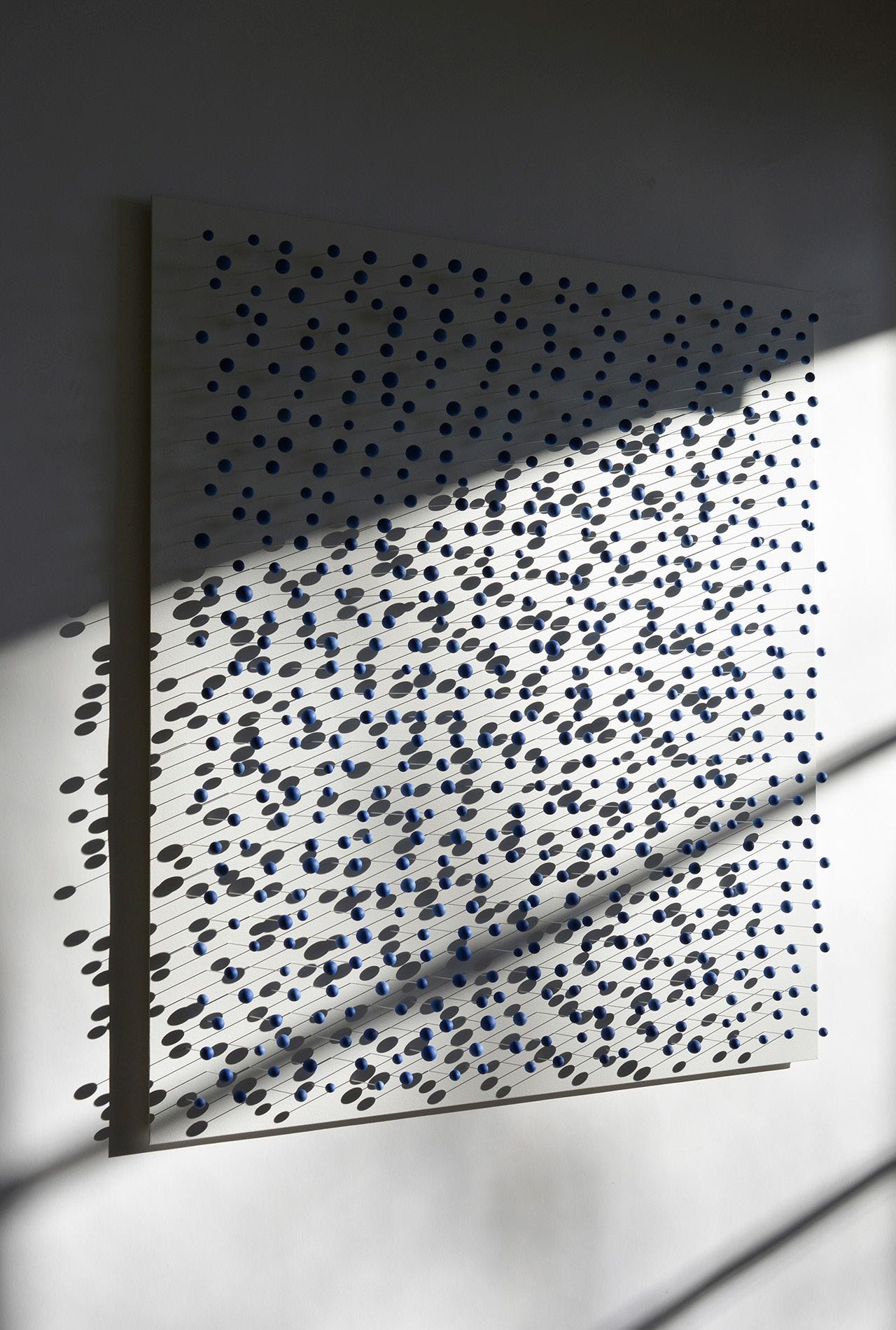
69
| 4TH
& 1ST
JONNE STOUT
STROPHE
POLYMETRY
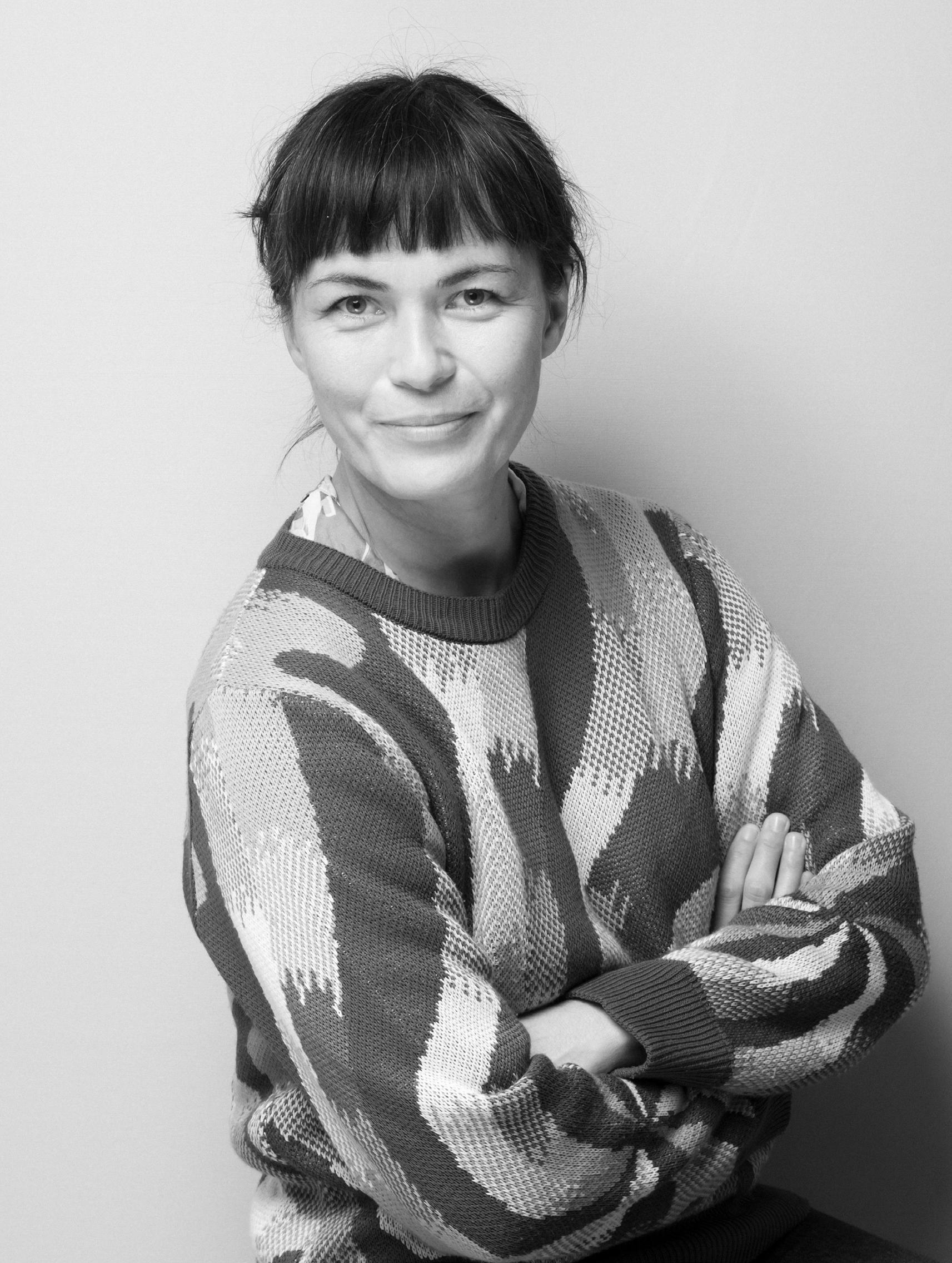
Kartini Thomas
With a childhood spent travelling with her parents on anthropological expeditions, listening to stories, myths and legends of real and surreal creatures from around the world, Francebased, American ceramicist Kartini Thomas now creates joyfully disconcerting monsters. Her concern with the mythic is in fact the exploration of the state of being human and the meaning of identity stemming from her youthful experiences of extensive travelling.
Her playful monsters are a way of proposing stories of alternative identities and origins in answer to questions who we are and if we need to be alike or different.
71
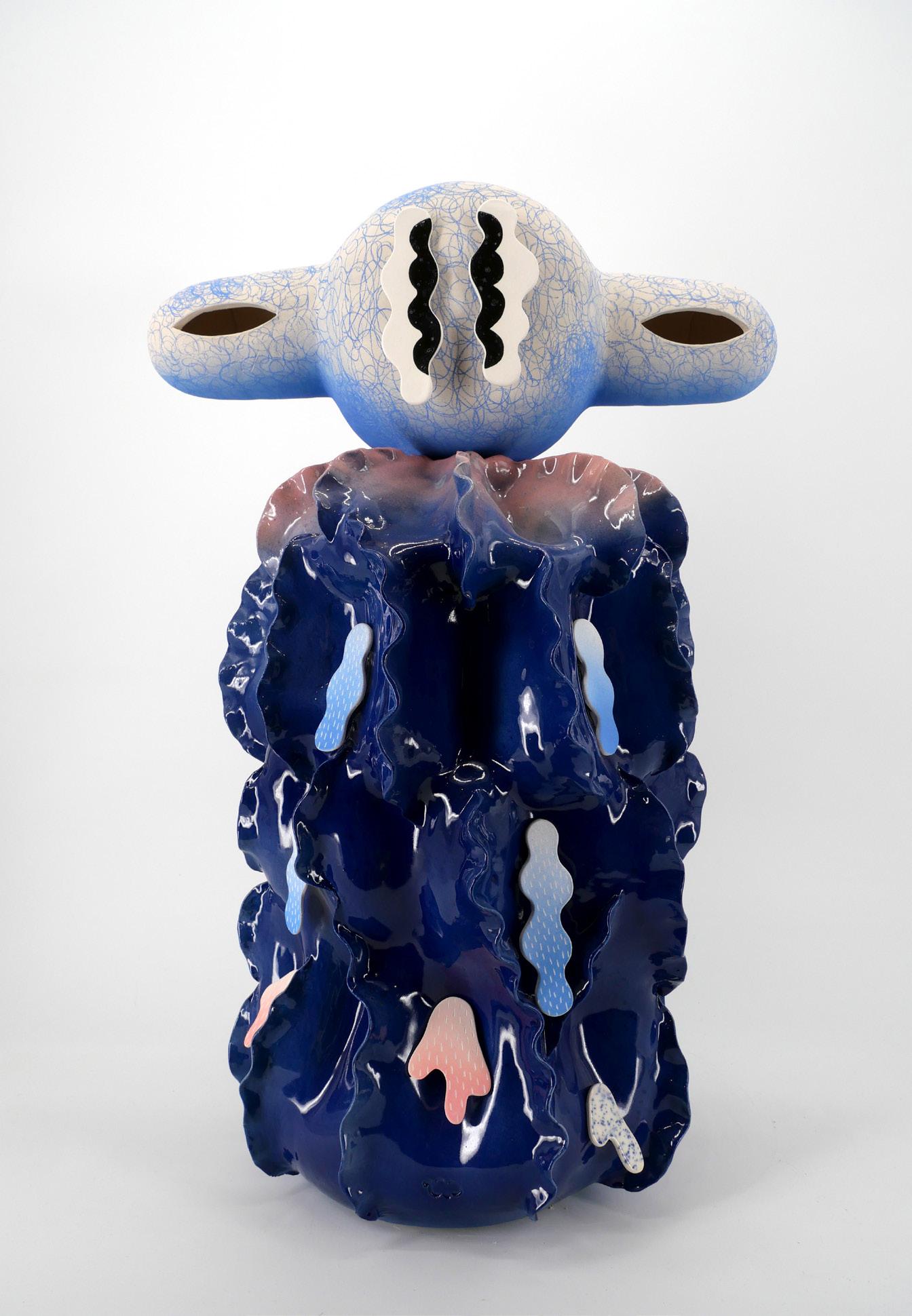
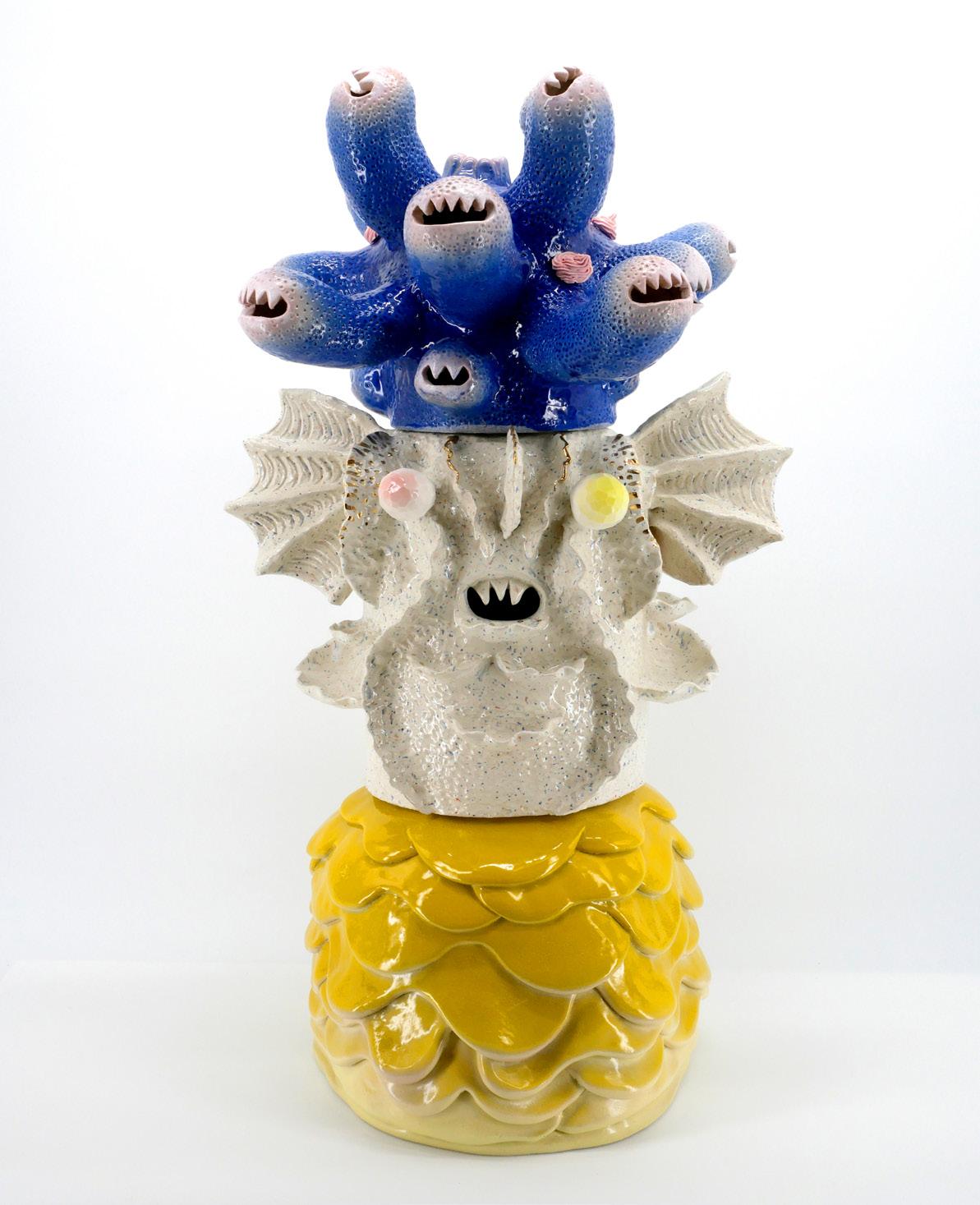
72 KARTINI THOMAS | PLAYFUL
MONSTERS
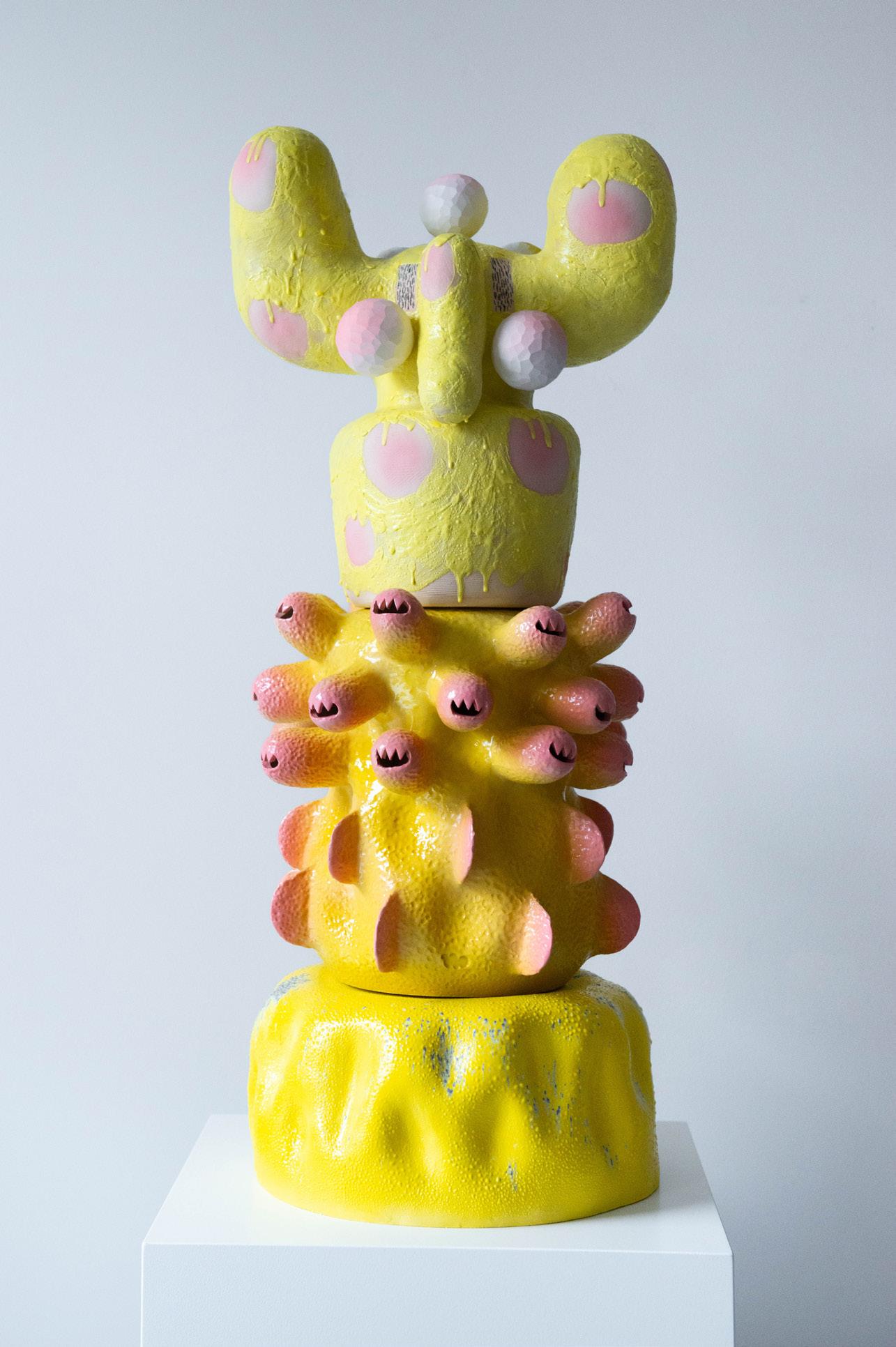
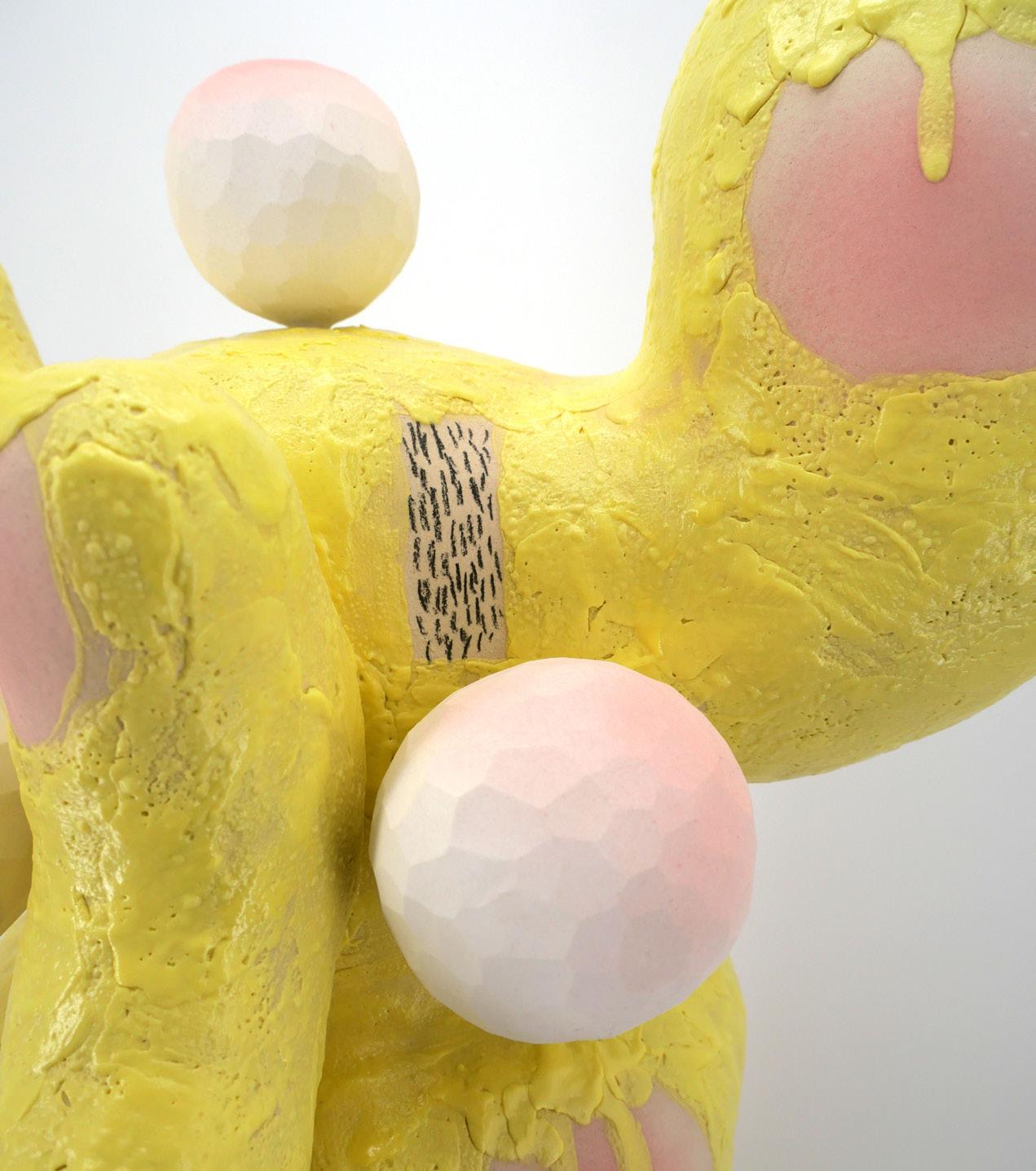
73 KARTINI THOMAS | PLAYFUL MONSTERS
Imaginary forms in stoneware and porcelain coupled with original glazing.
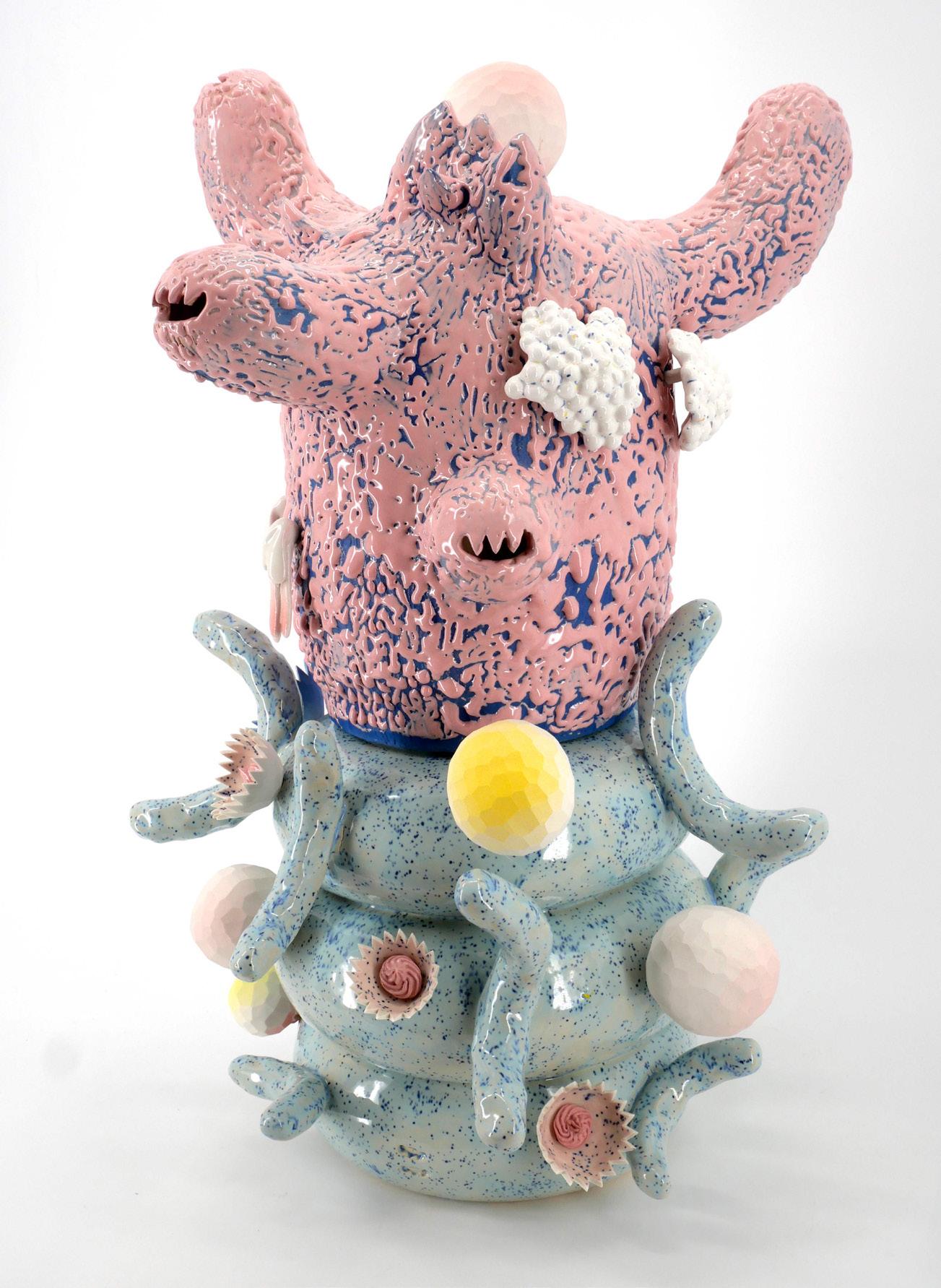
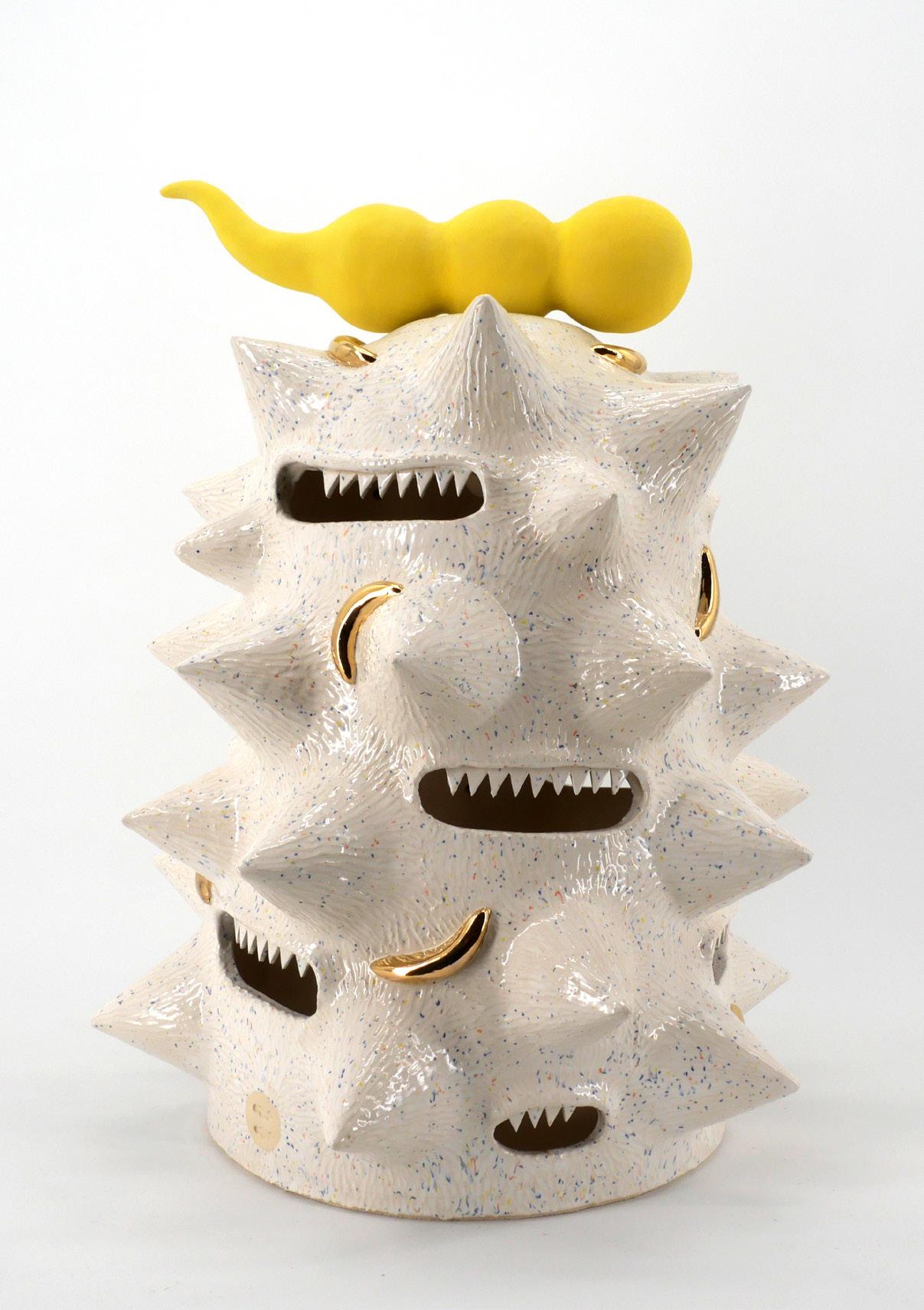
KARTINI
| PLAYFUL MONSTERS
74
THOMAS
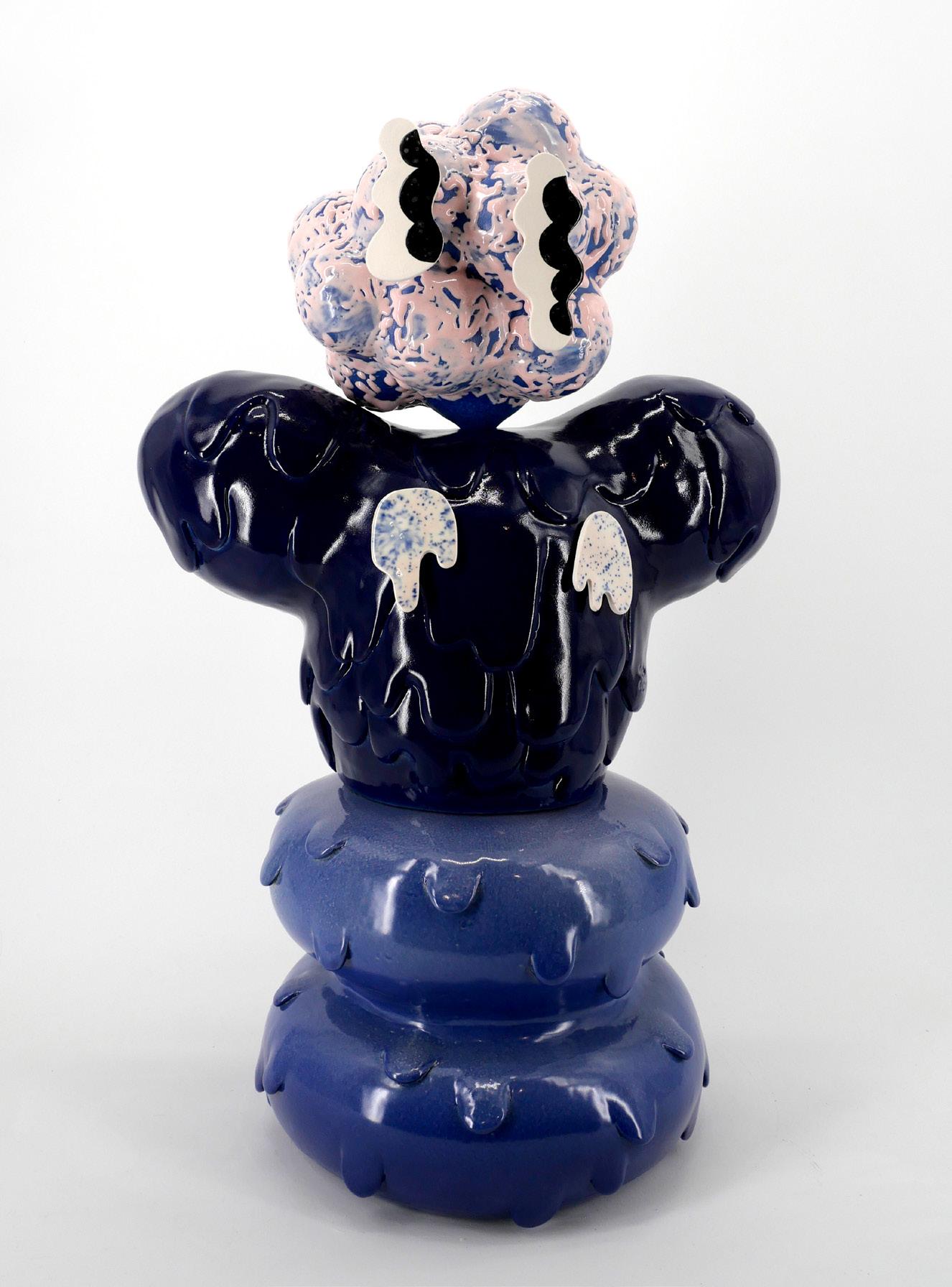
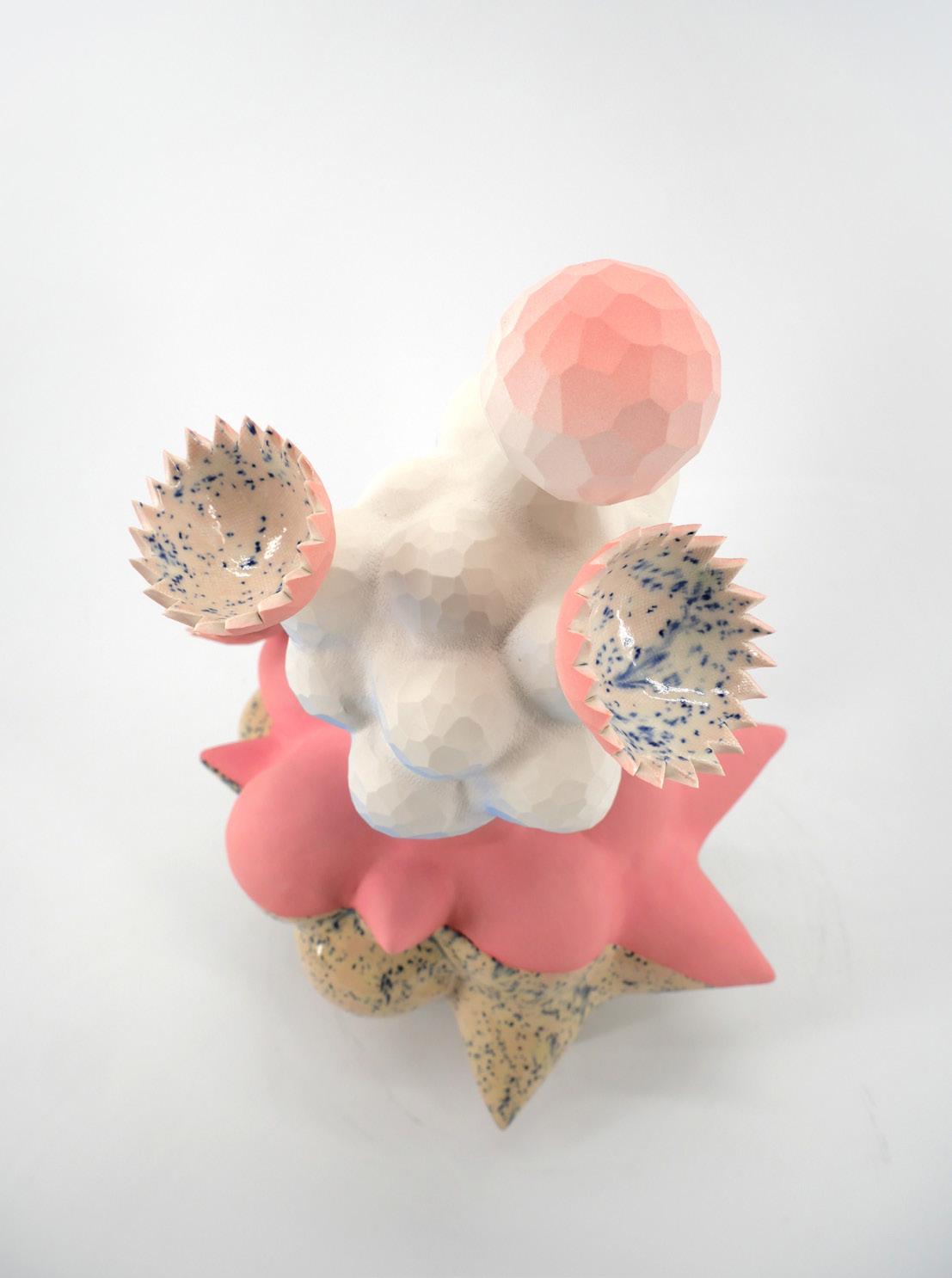
75 KARTINI THOMAS | PLAYFUL MONSTERS
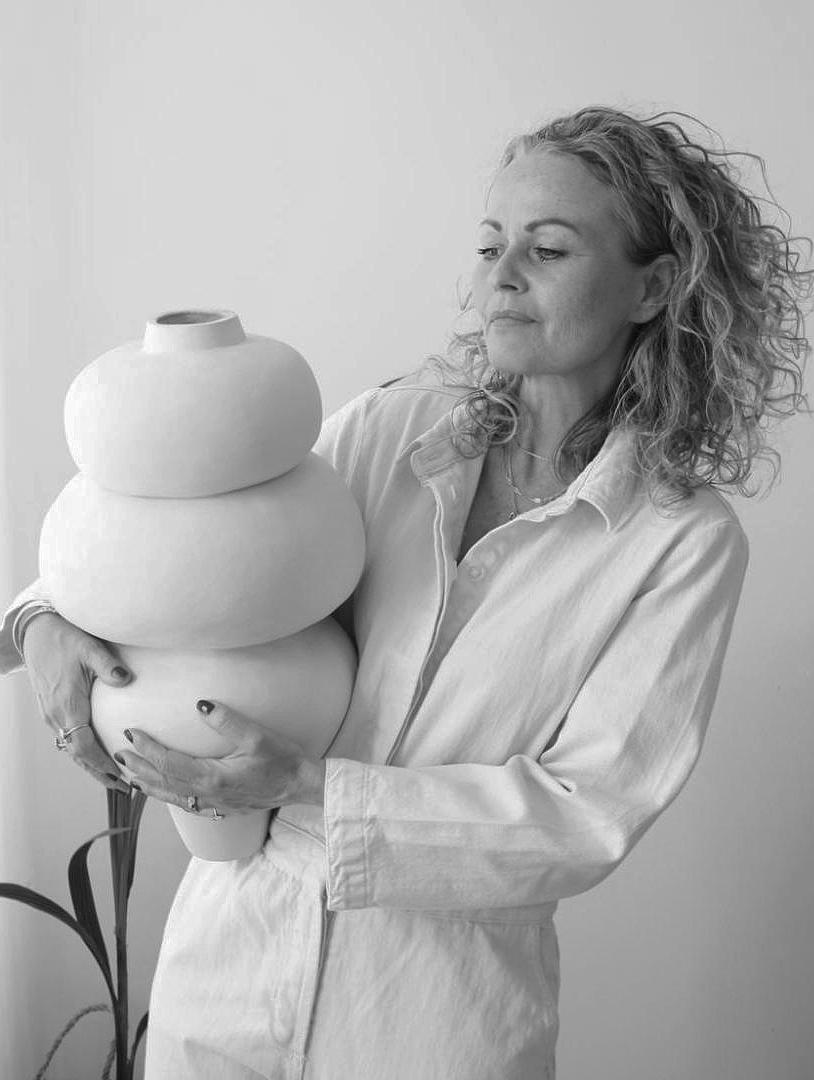
Françoise Jeffrey
Dutch designer Françoise Jeffrey’s encounter with clay was triggered by her mother’s passing in 2019, as a way to confront her grief and ultimately, let go of it. The pieces she creates – beautifully imperfect, coil-built ceramic sculptures – are an homage to her mother and the courage she displayed at the end of her life.
With her works, Françoise hopes to provoke a conversation, and encourage the viewers to stay in touch with their own natural instincts, explaining:
“My ultimate dream is for my ceramics to touch people’s souls and for them to take away a small fragment of my mother’s courage after seeing my work and hearing her story. I’d love for people to not only feel inspired, but also feel encouraged. Because every courageous decision is preceded by a difficult conversation.”
77
Françoise employs the ancient clay technique
called hand building. She builds her objects by hand from the bottom up with clay coils and then shapes them into organic curves.
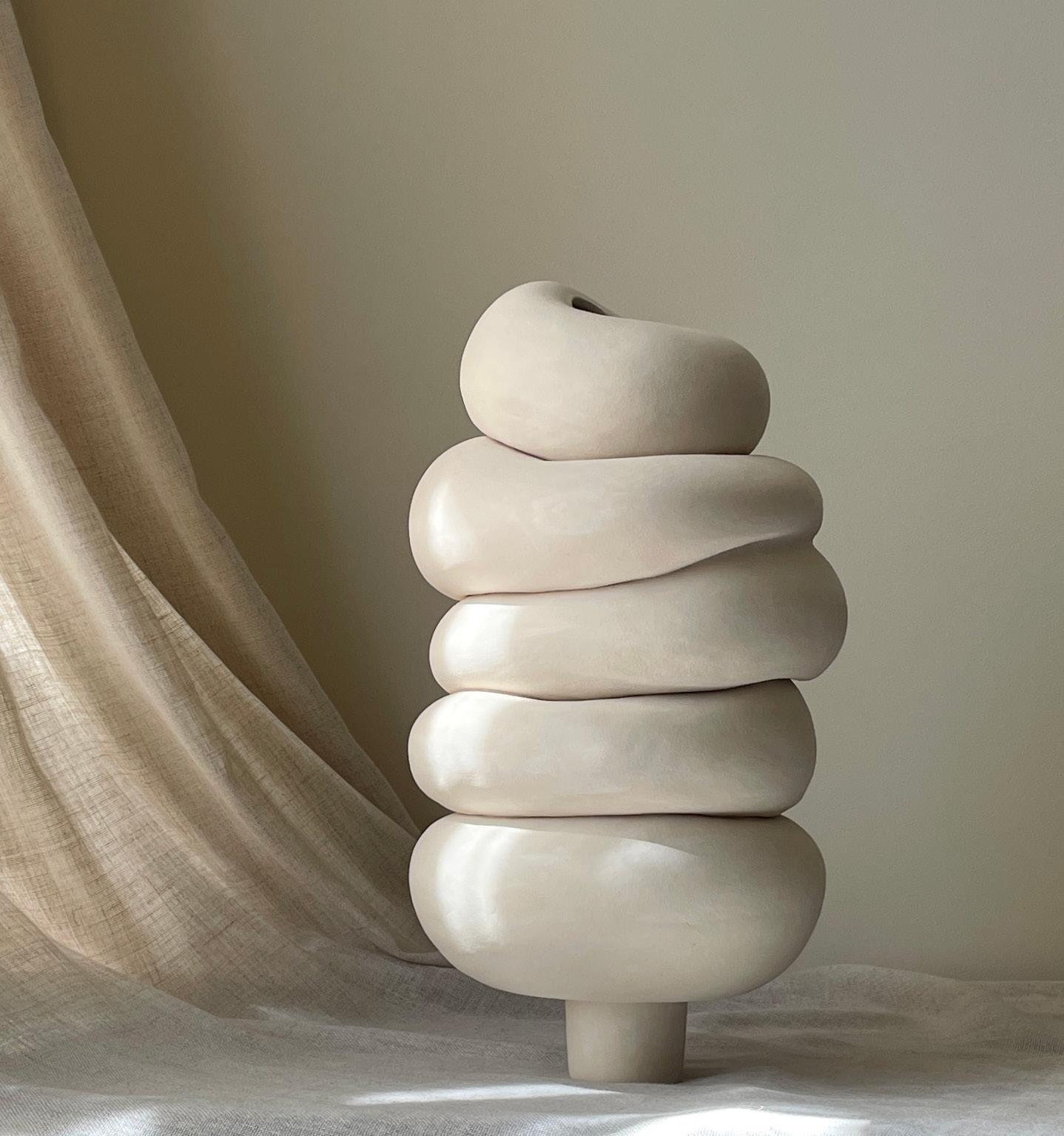
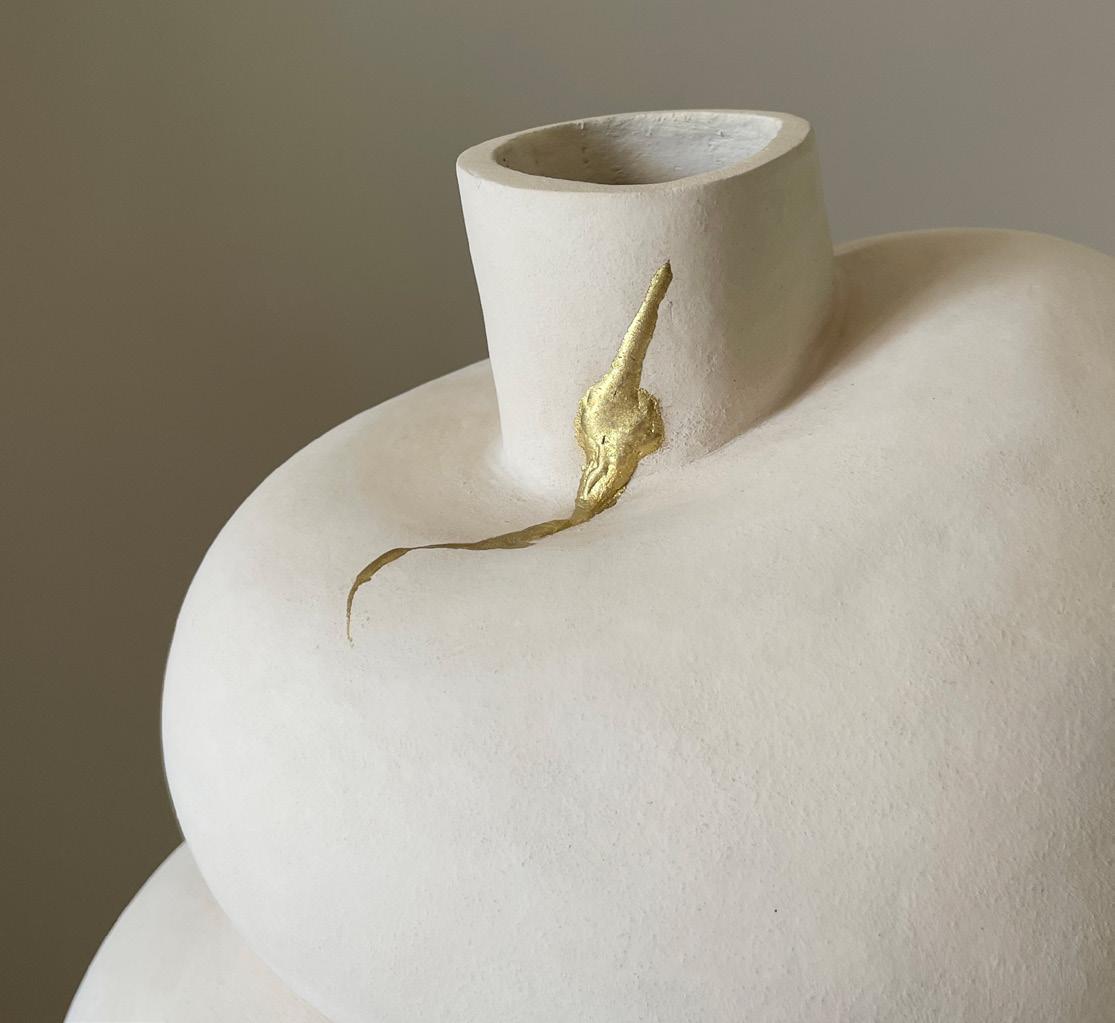
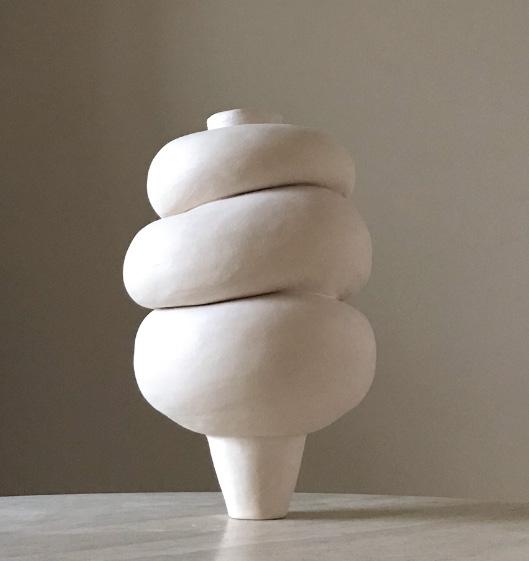

78 FRANÇOISE
JEFFREY | MODDER

79
FRANÇOISE JEFFREY | MODDER
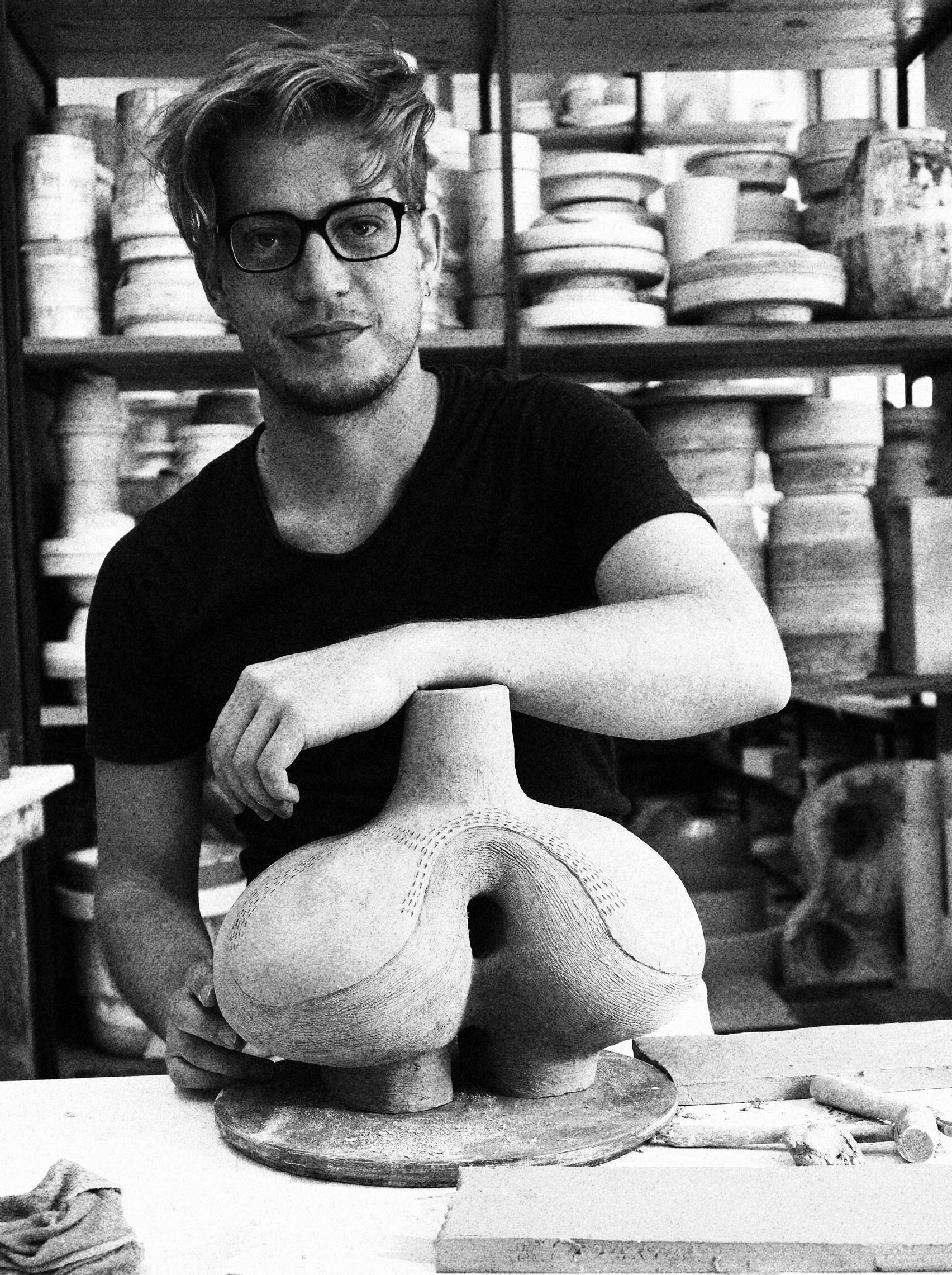
Jan Ernst
Jan Ernst is a multidisciplinary designer specializing in funtional art and spatial design using clay as his main medium. The work is driven by his fascination with natural structures such as corals, fungi, and rock formations. His organic designs stem from his abstract understanding of form and space influenced by his background in architecture, his conection with the natural world, and his South African heritage.
The FLUX collection of ceramic lamps and smaller objects developed for Mia Karlova Galerie is inspired by Copepods. When you look at the water you see invisible creatures dancing. They are fascinating as they are able to transform quite rapidly and adapt to different environments.
Wherever you place them – they adapt to the given surroundings. “I started researching them because of their form and adaptivity. The form is impressive, as they wear skeleton on the outside, and it looks almost like arms and a shield. They possess an ability to adapt and transform. Ocean is my true love and the place where I choose to spend a lot of time looking at the water and seeing these amazing creatures dancing” – Jan Ernst.
81
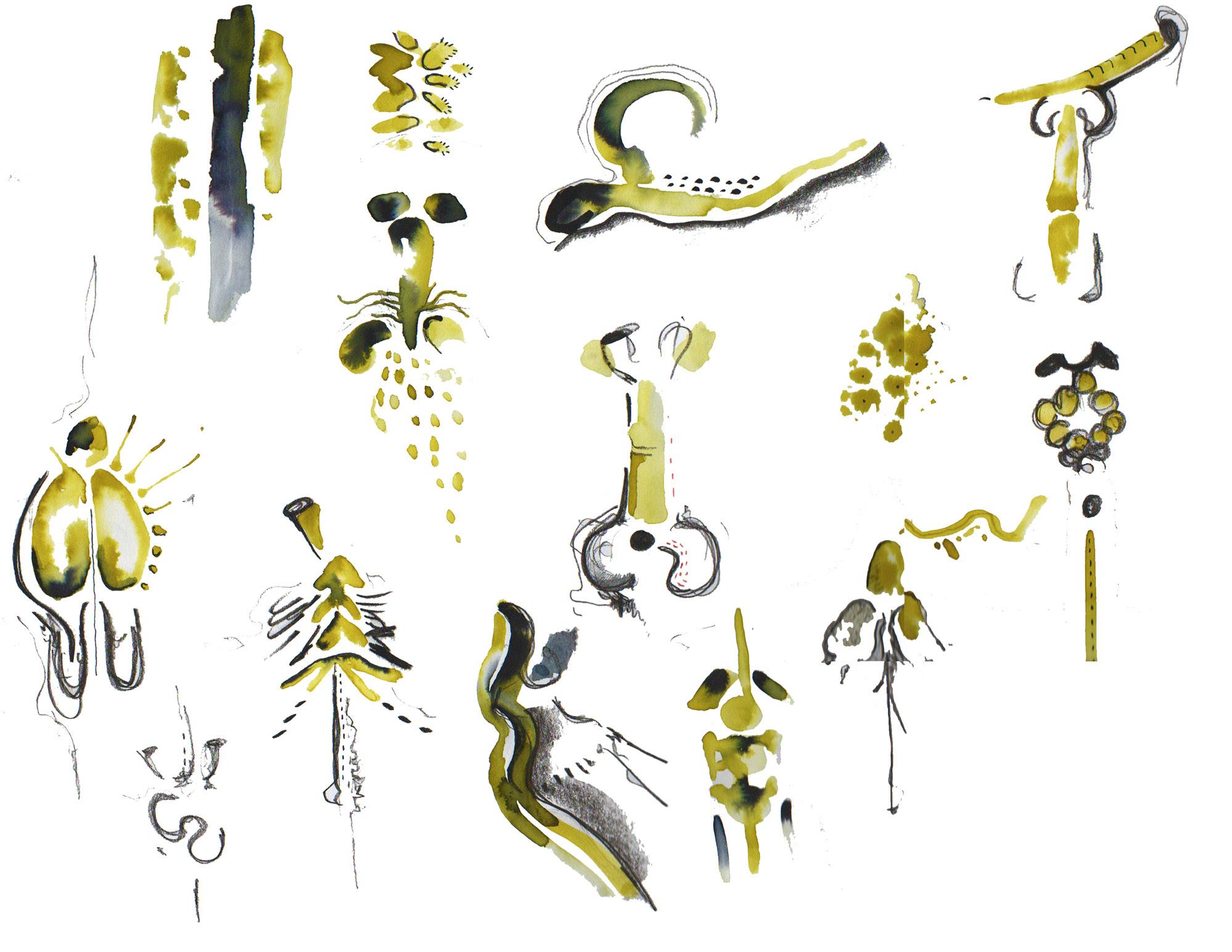
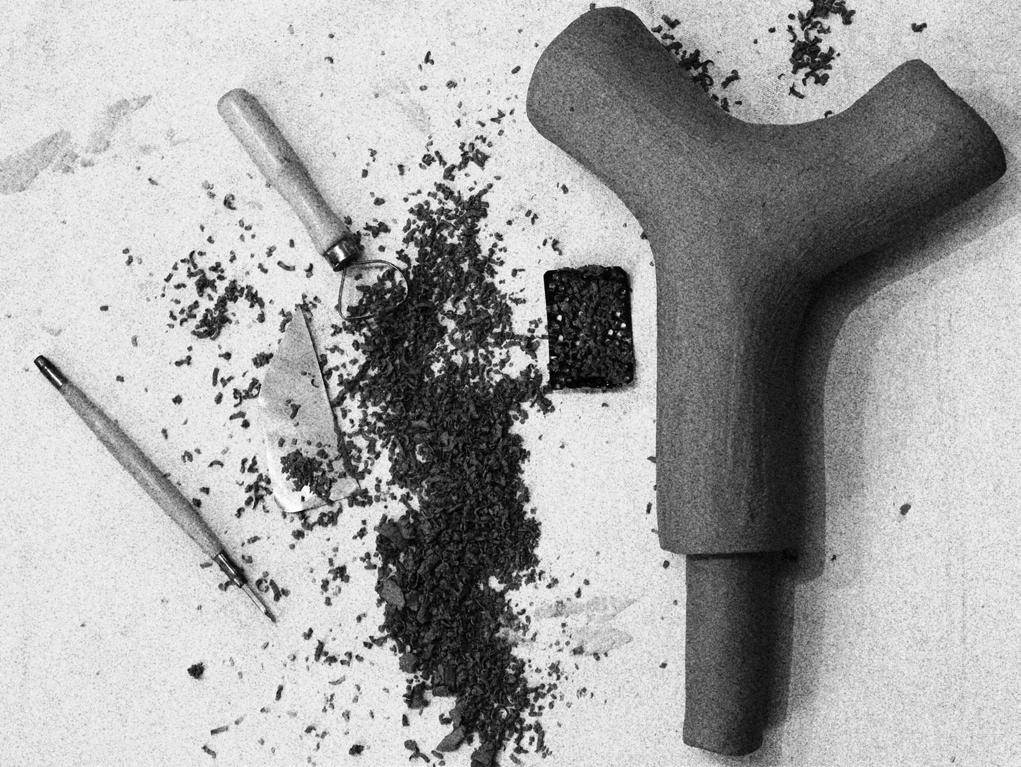
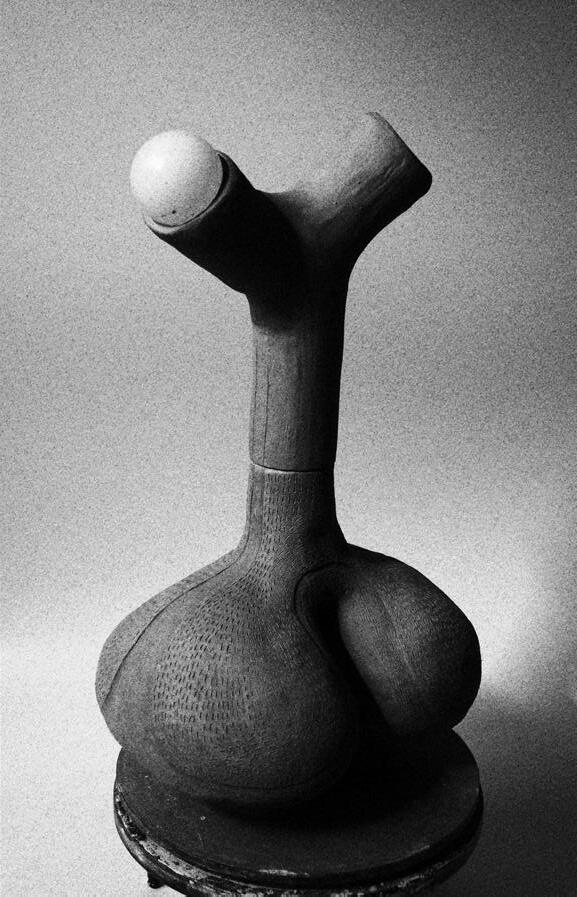
82 JAN ERNST | PROGRESS
Watercolor sketches of Copepodes and the process of creation.
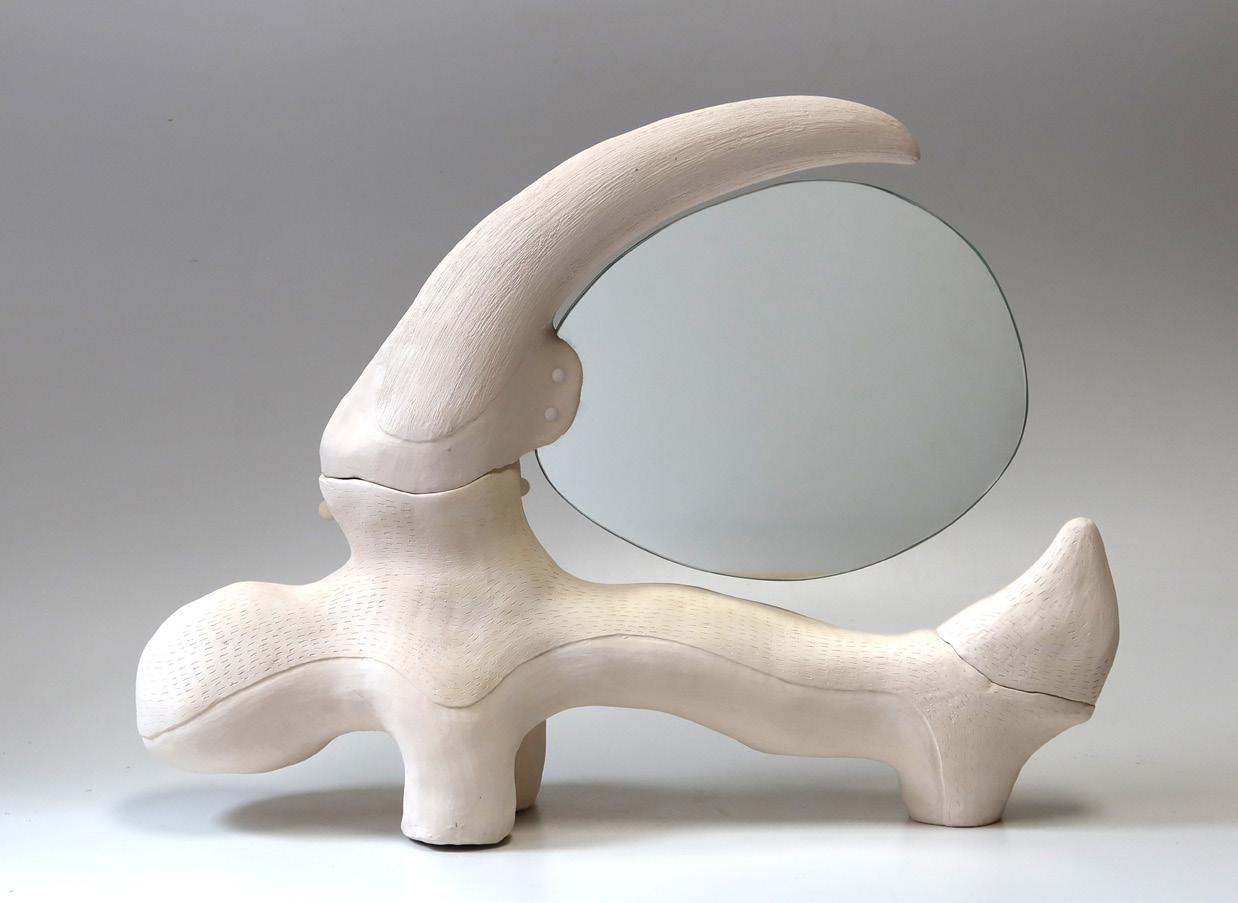

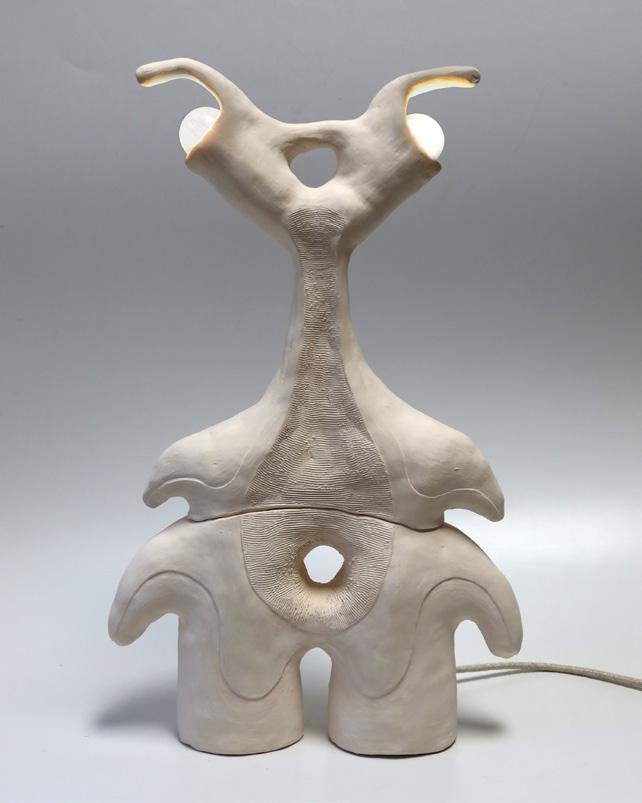
83
JAN ERNST | FLUX CAPSULE COLLECTION
Sculptural lamps and the mirror from Flux collection. White stoneware. Limited edition
List of Credits
Yuta Sawamura
Jeroen van der Spek
Cleo Scheulderman
Notoo Studio
Sonya Golovkova
Merri Ottin
GMUND
Studio Batyrova & Mukhametov
Bas Loskoot
Ilko Kemmere
Tatiana Zoubkova
Olga Pavolga
Alexia van der Meijden
Kibardin Design
Atelier Jordan Artisan
Studio Jonne Stout
Studio Kartini Thomas
Jan Ernst Studio
Olesya & Andriy Voznicki
Elena Grodetskaya
Jesse Visser Studio
85
Rens Timber van den Akker Mia Karlova www.miakarlova.com
Photography by Editor Website Directive
www.miakarlova.com Prinsengracht 510 O, 1017 KH Amsterdam, Netherlands




































































































































